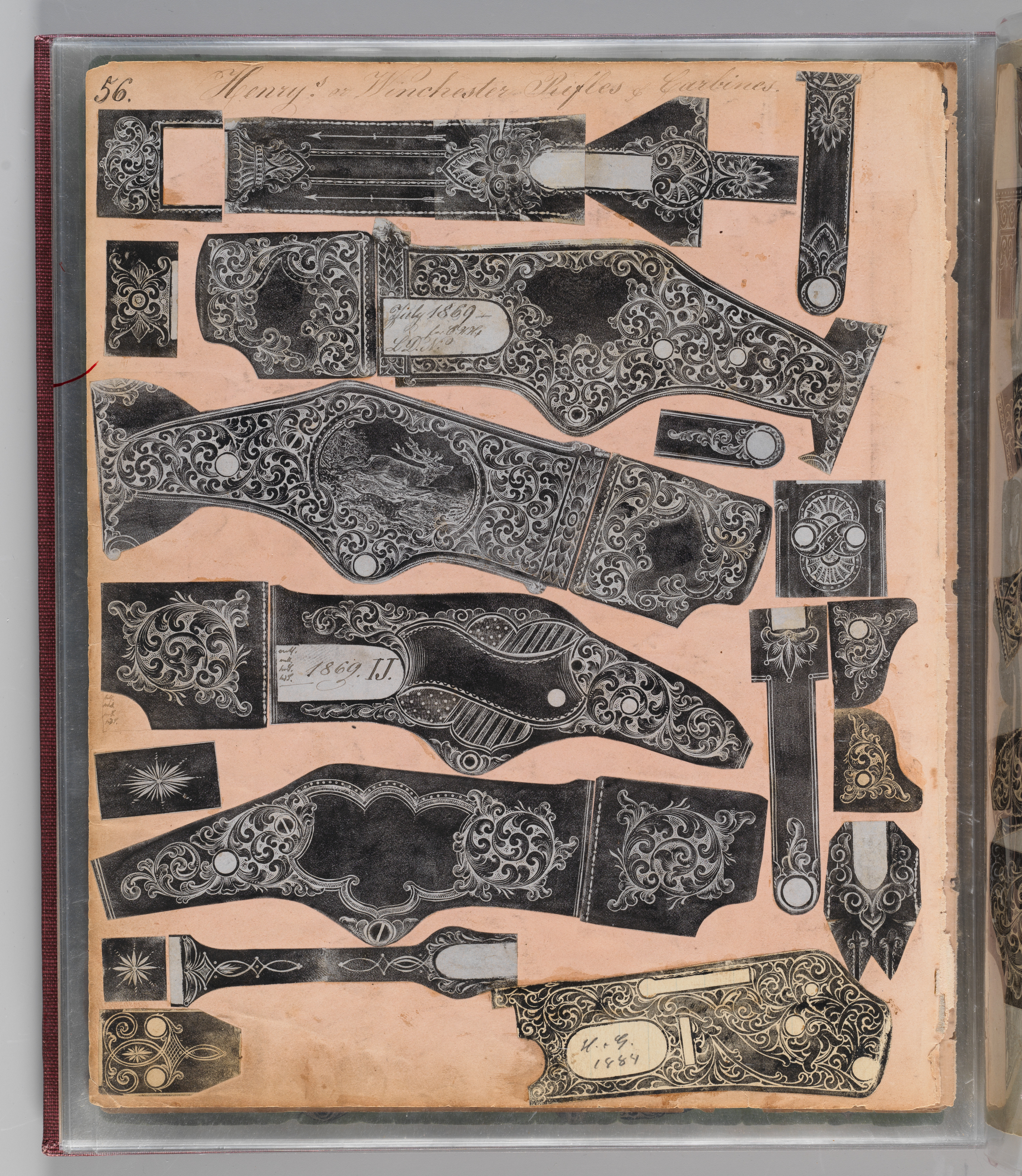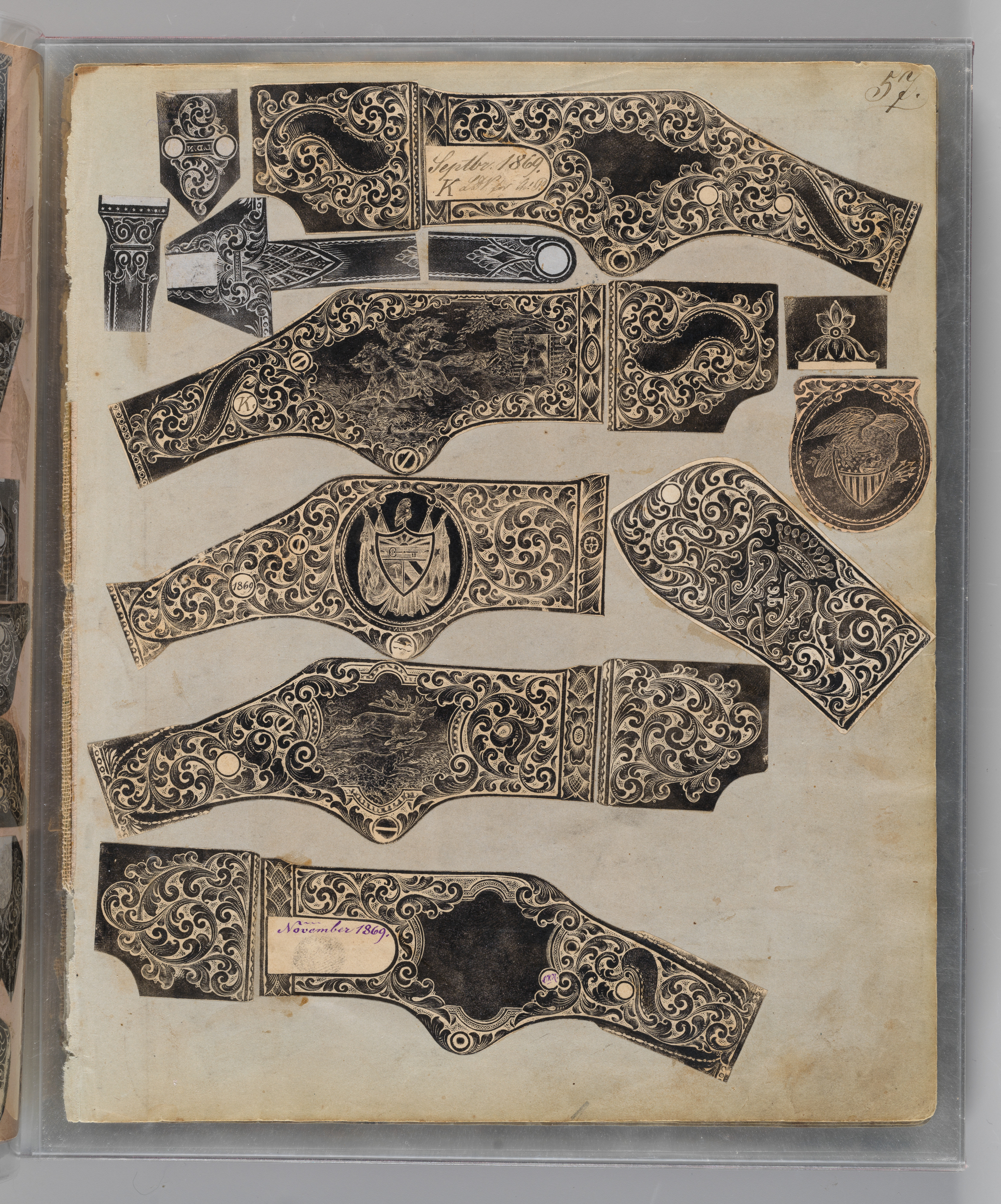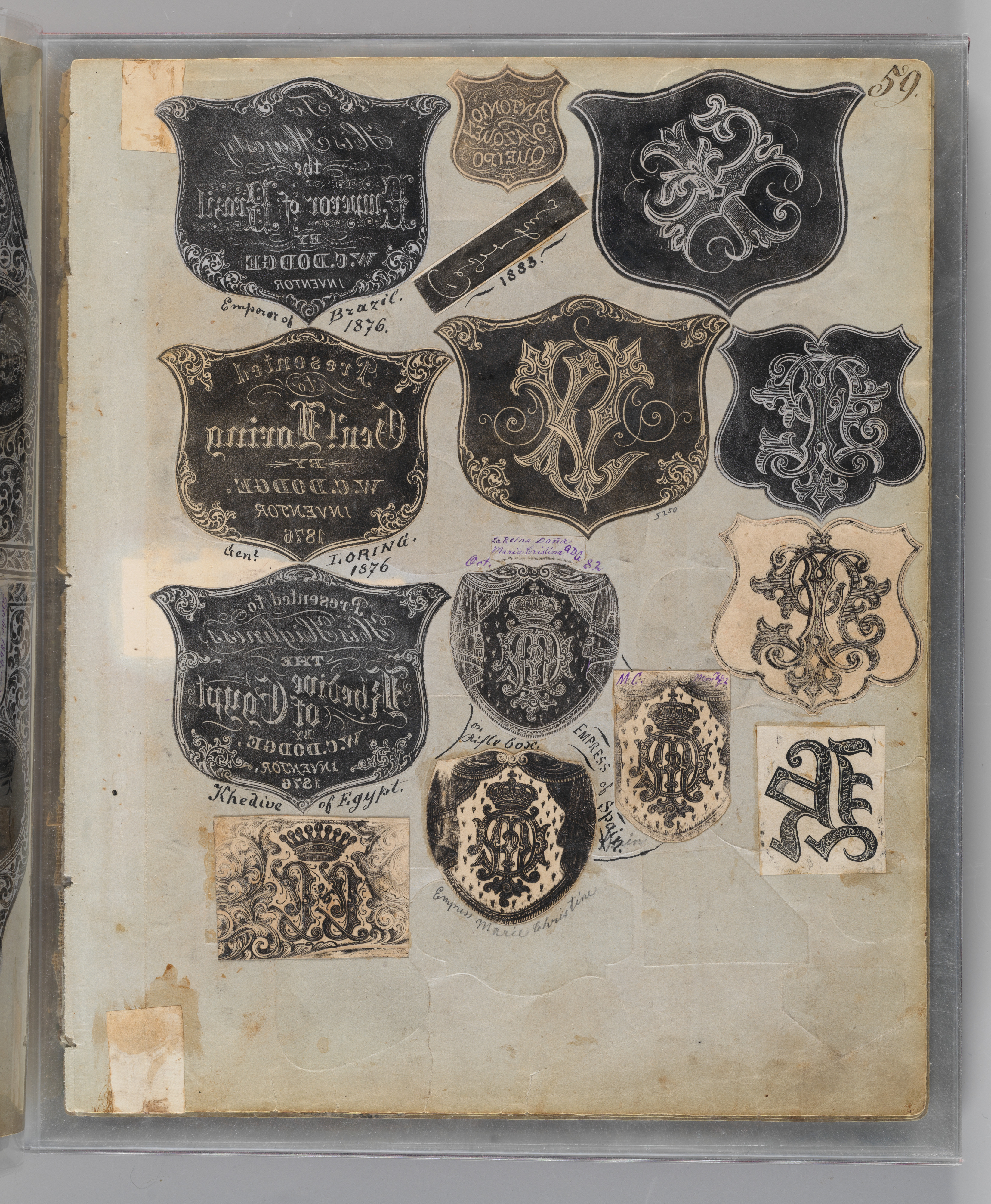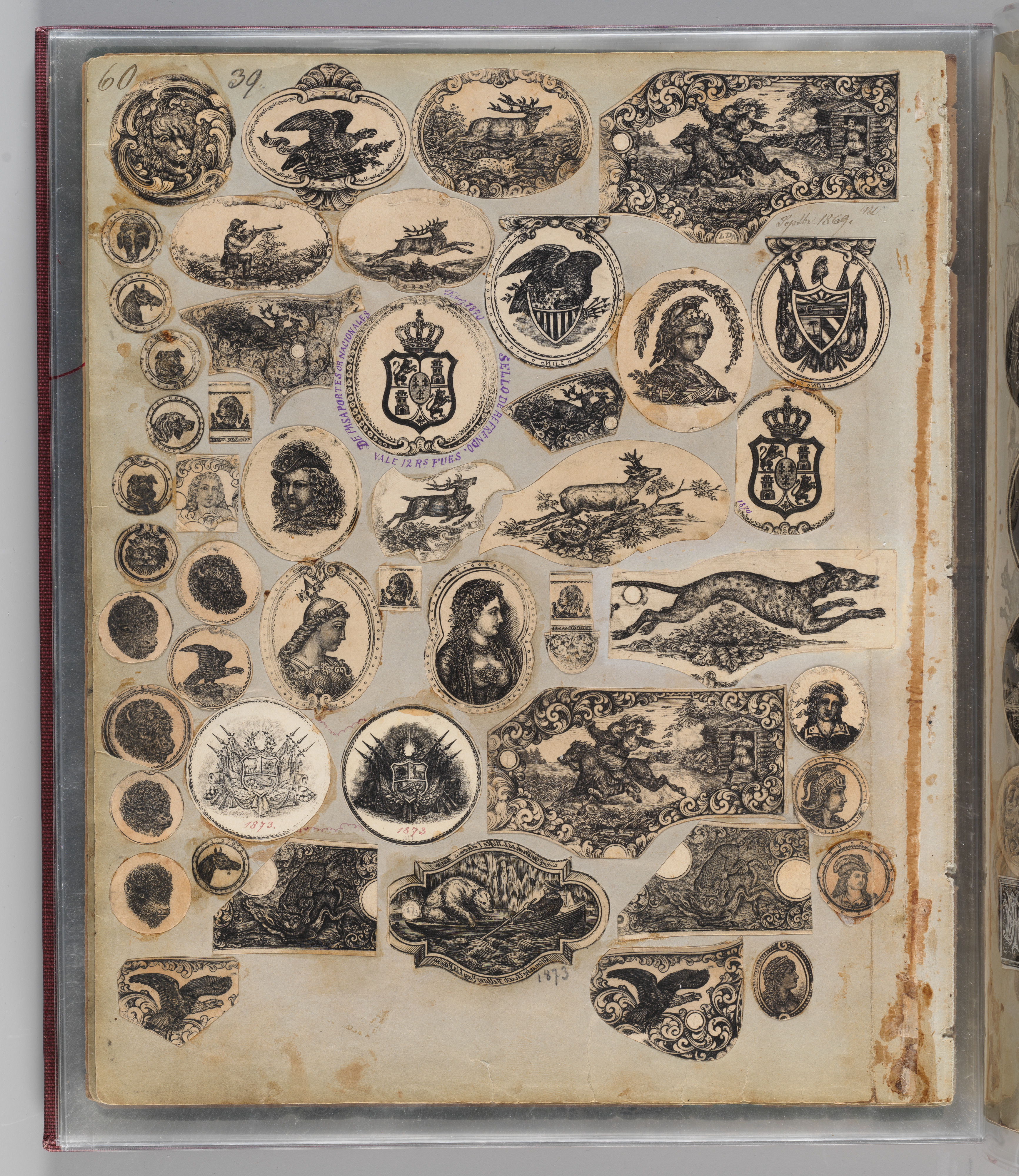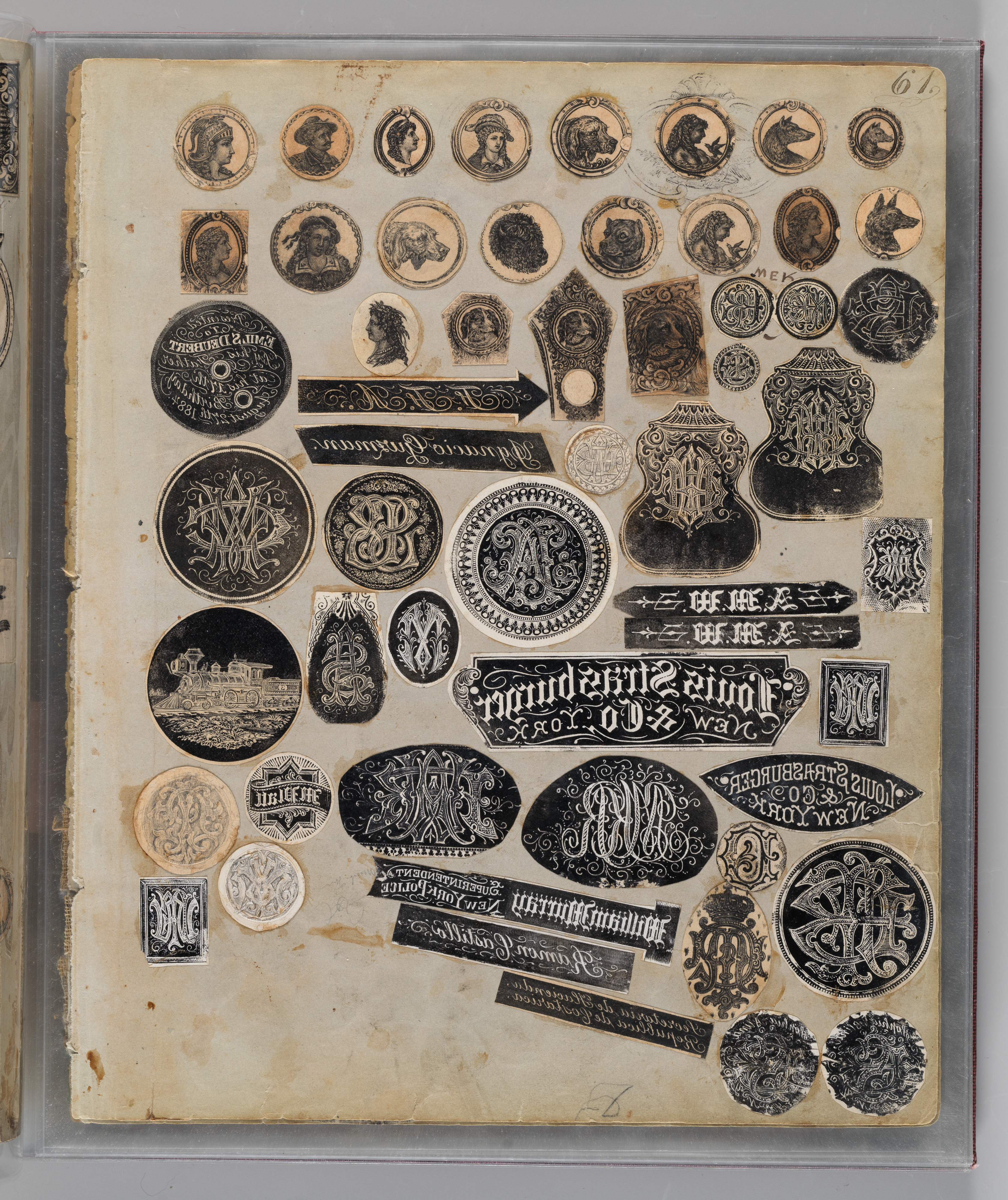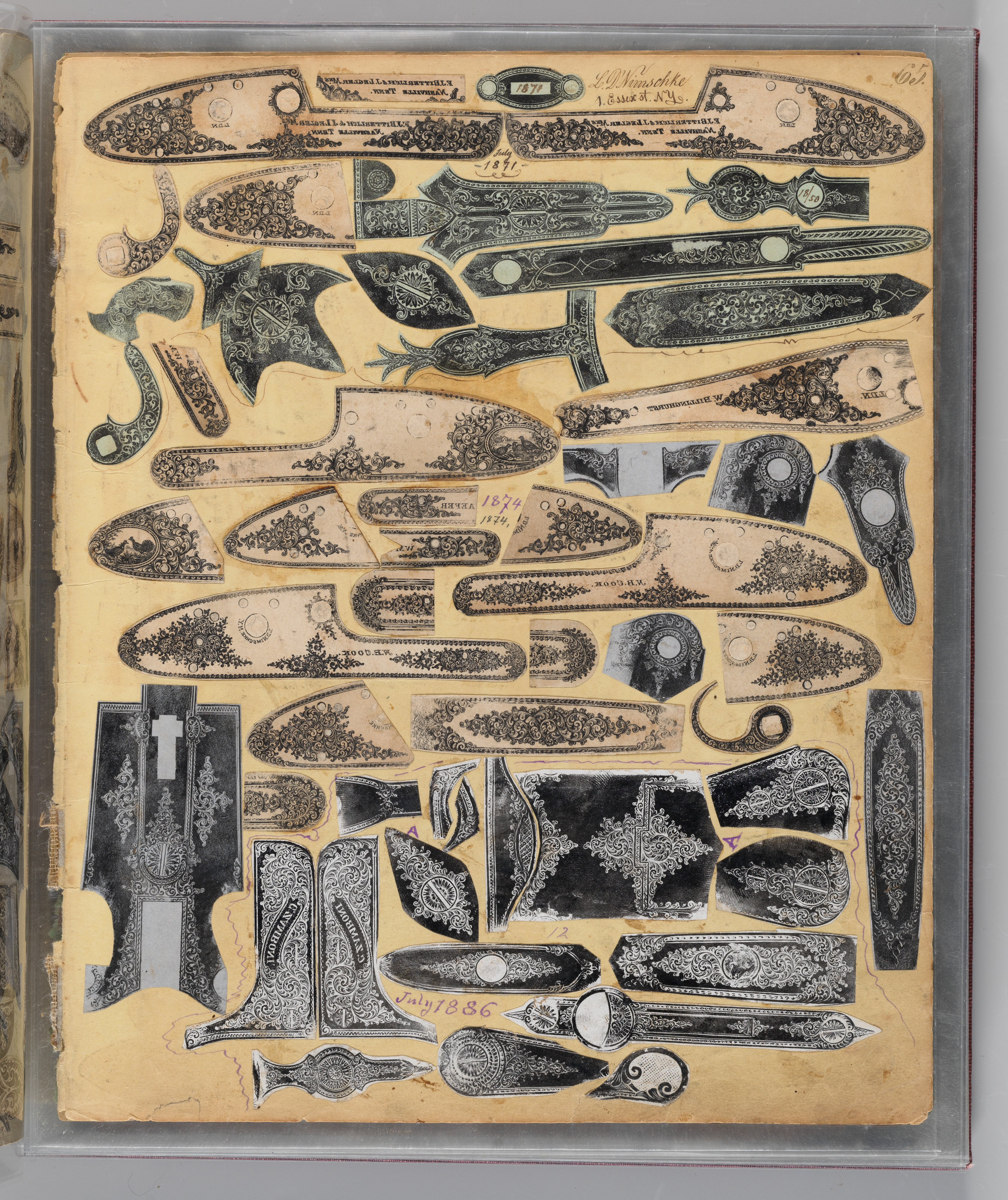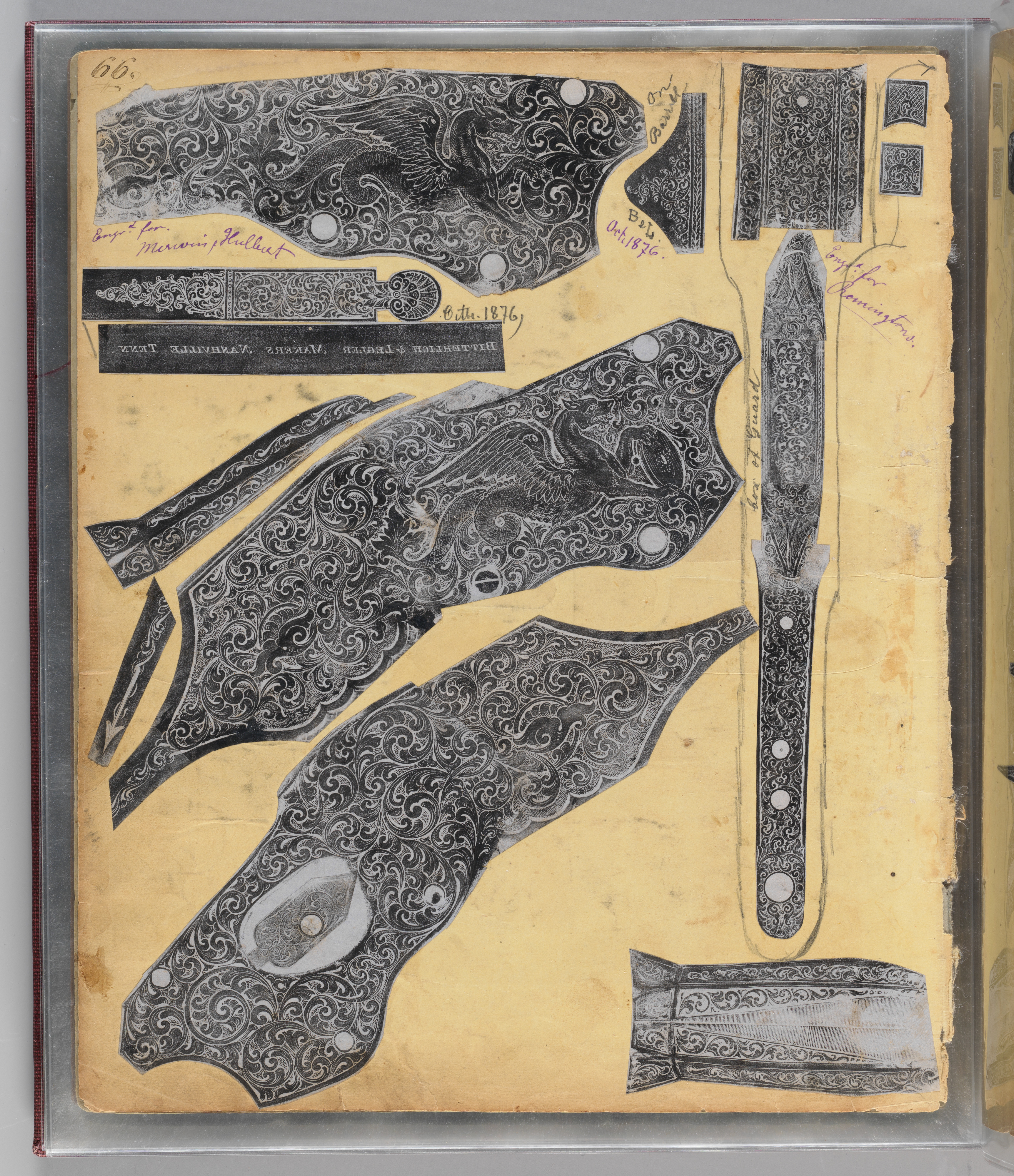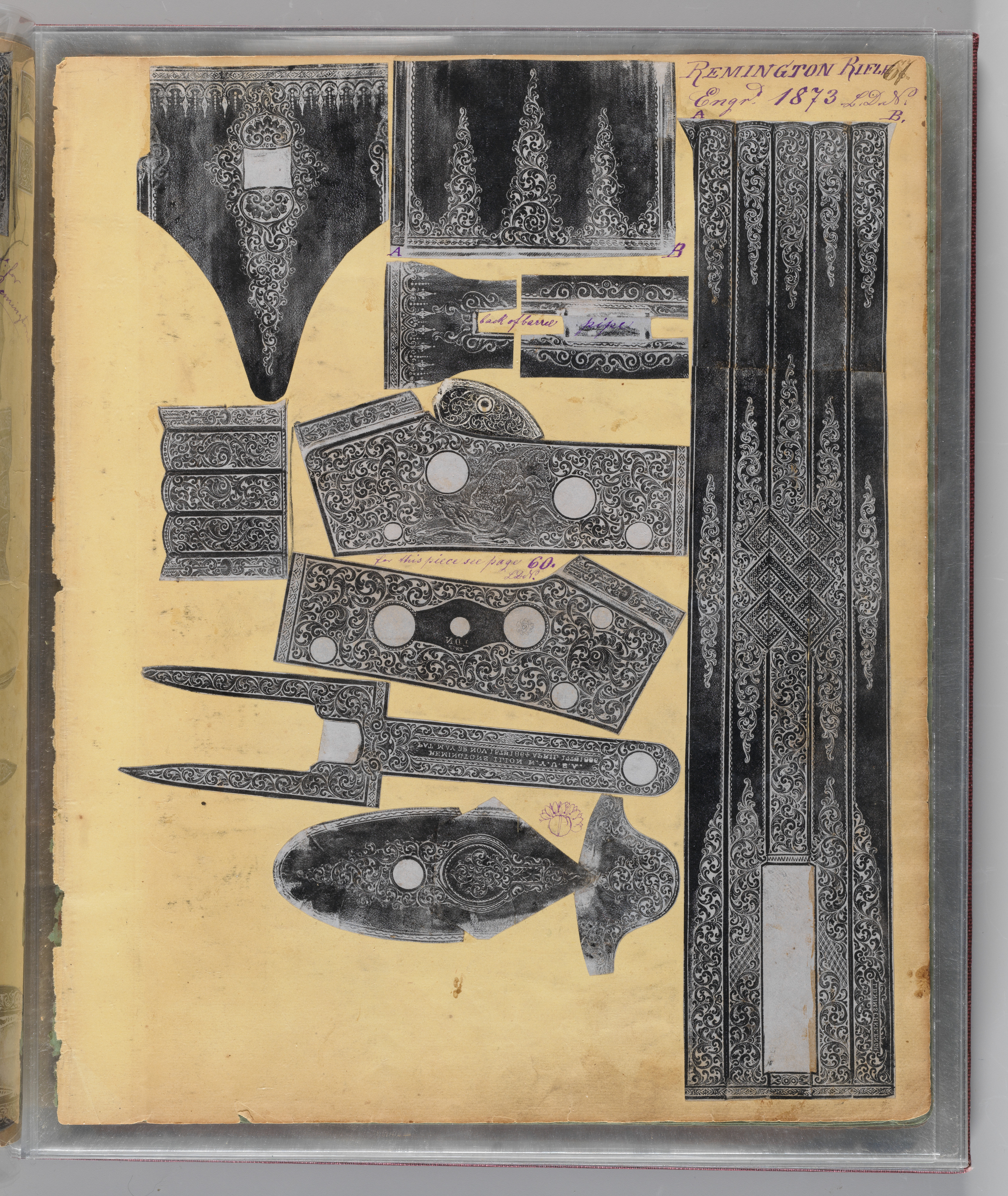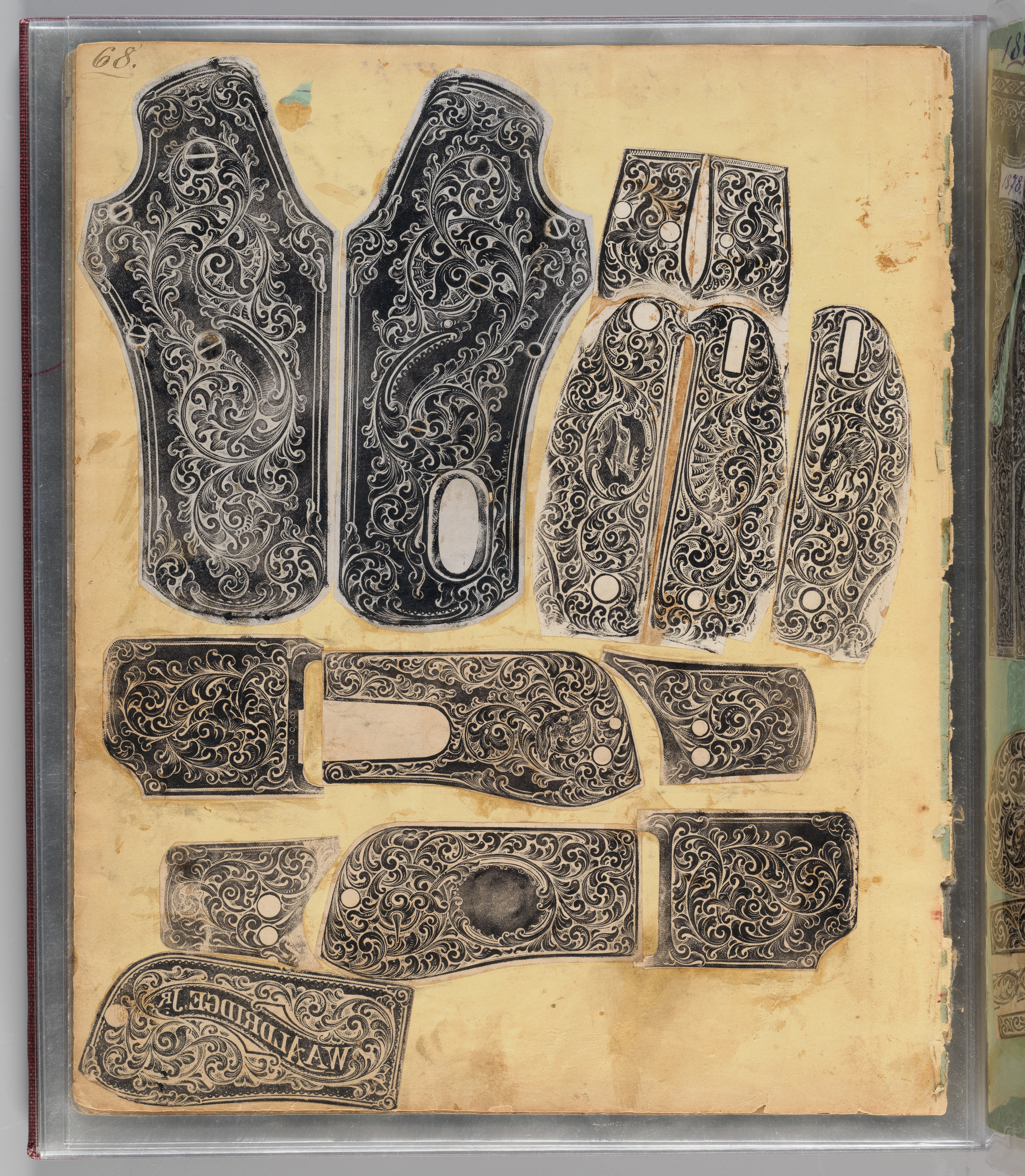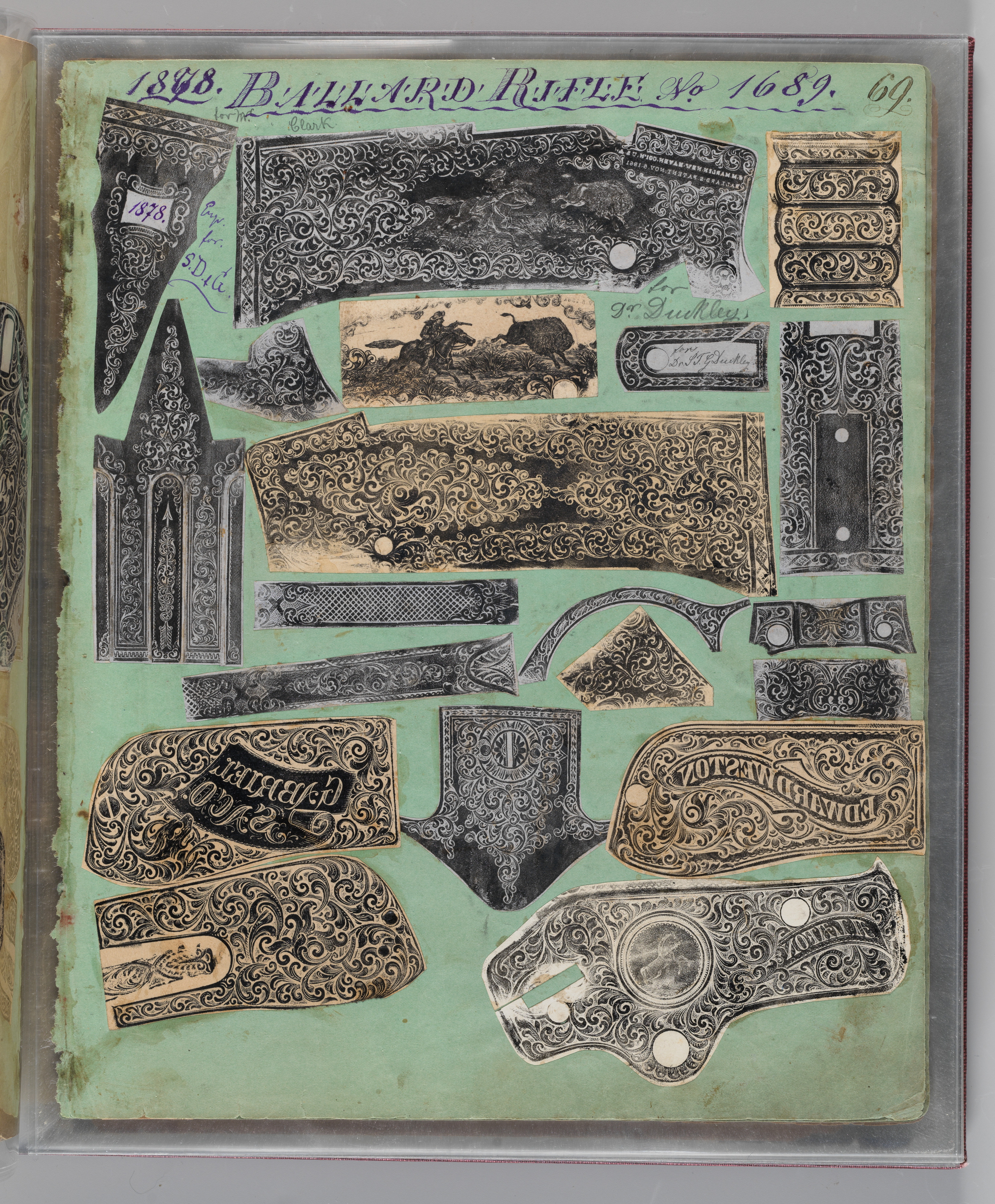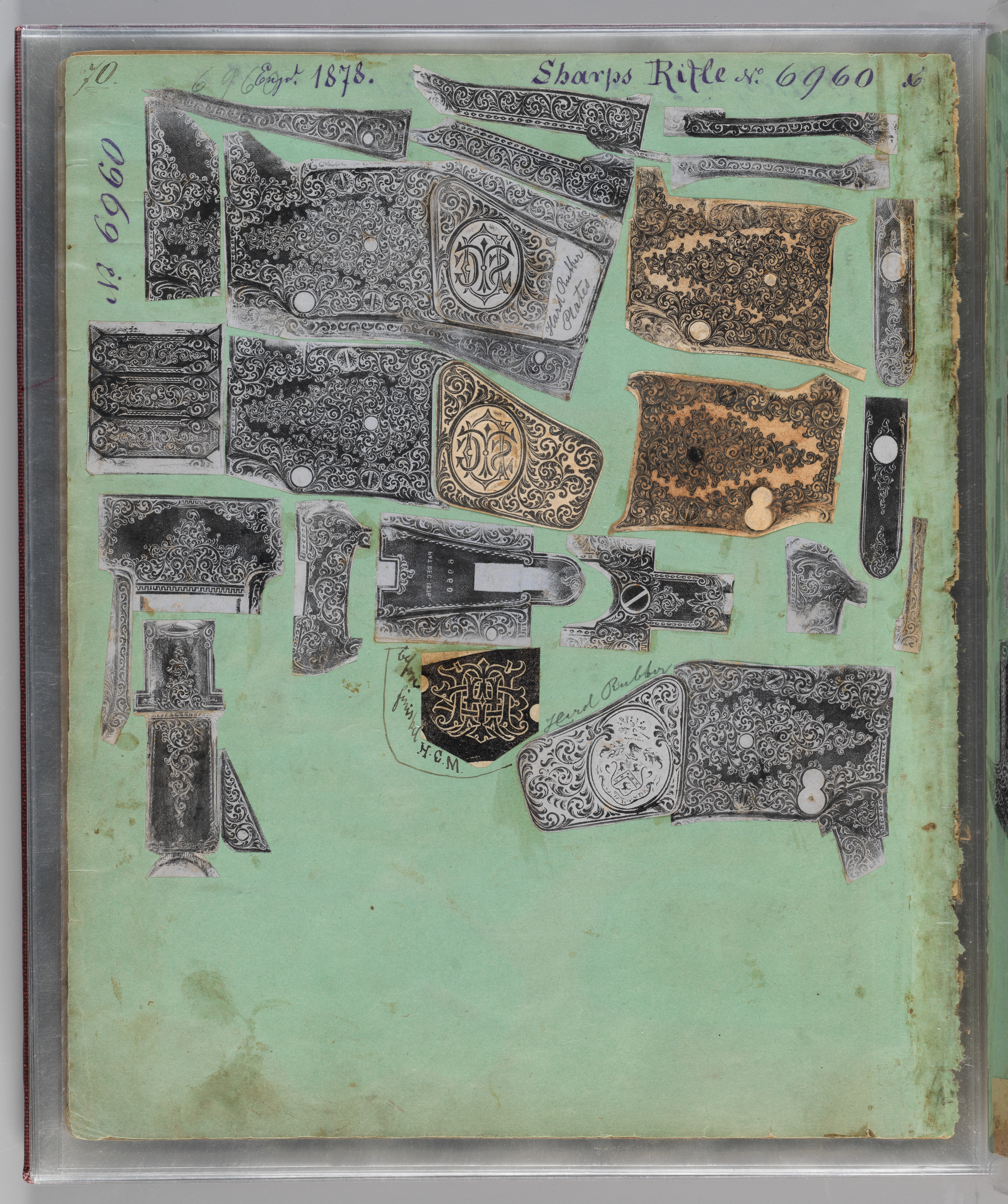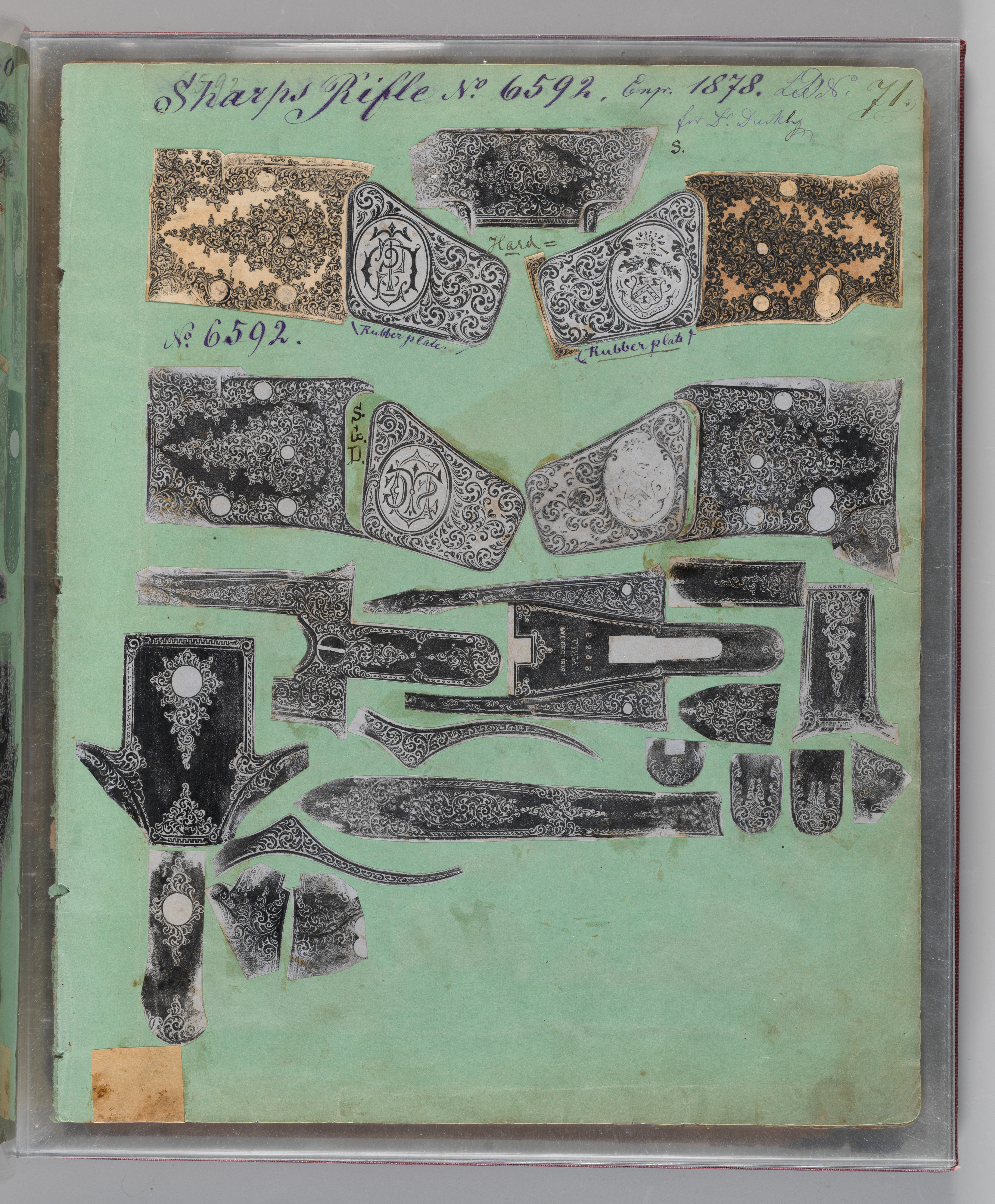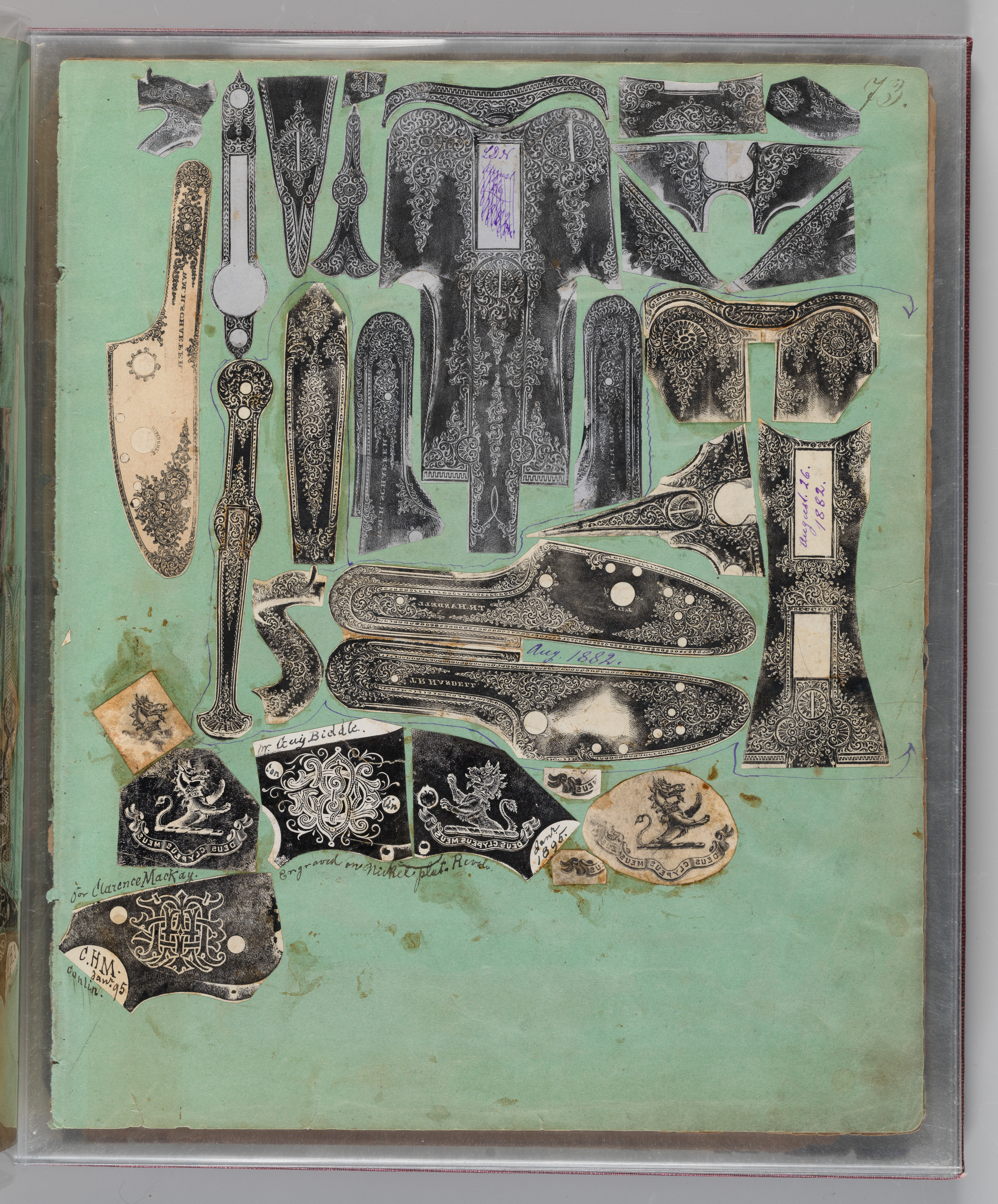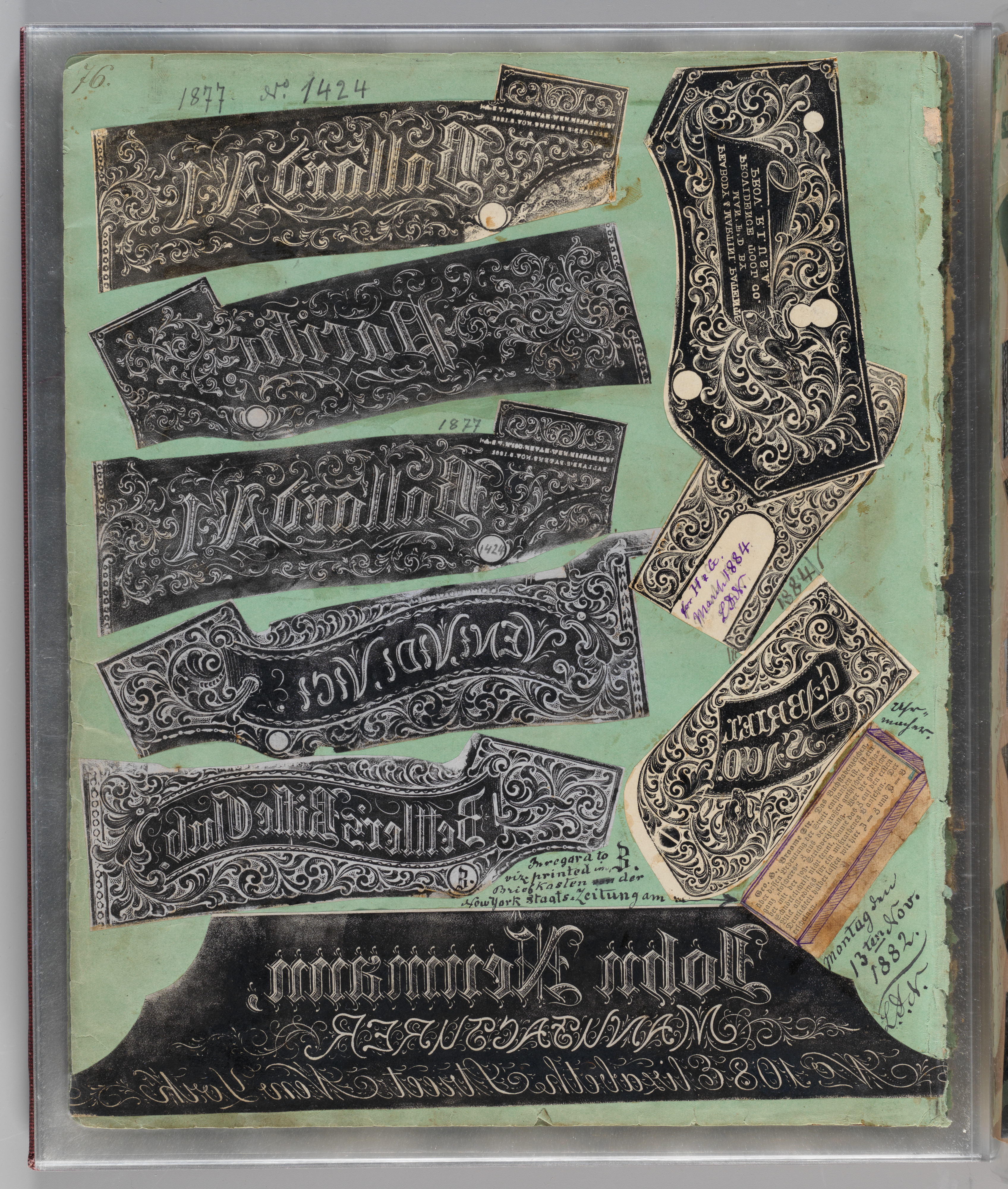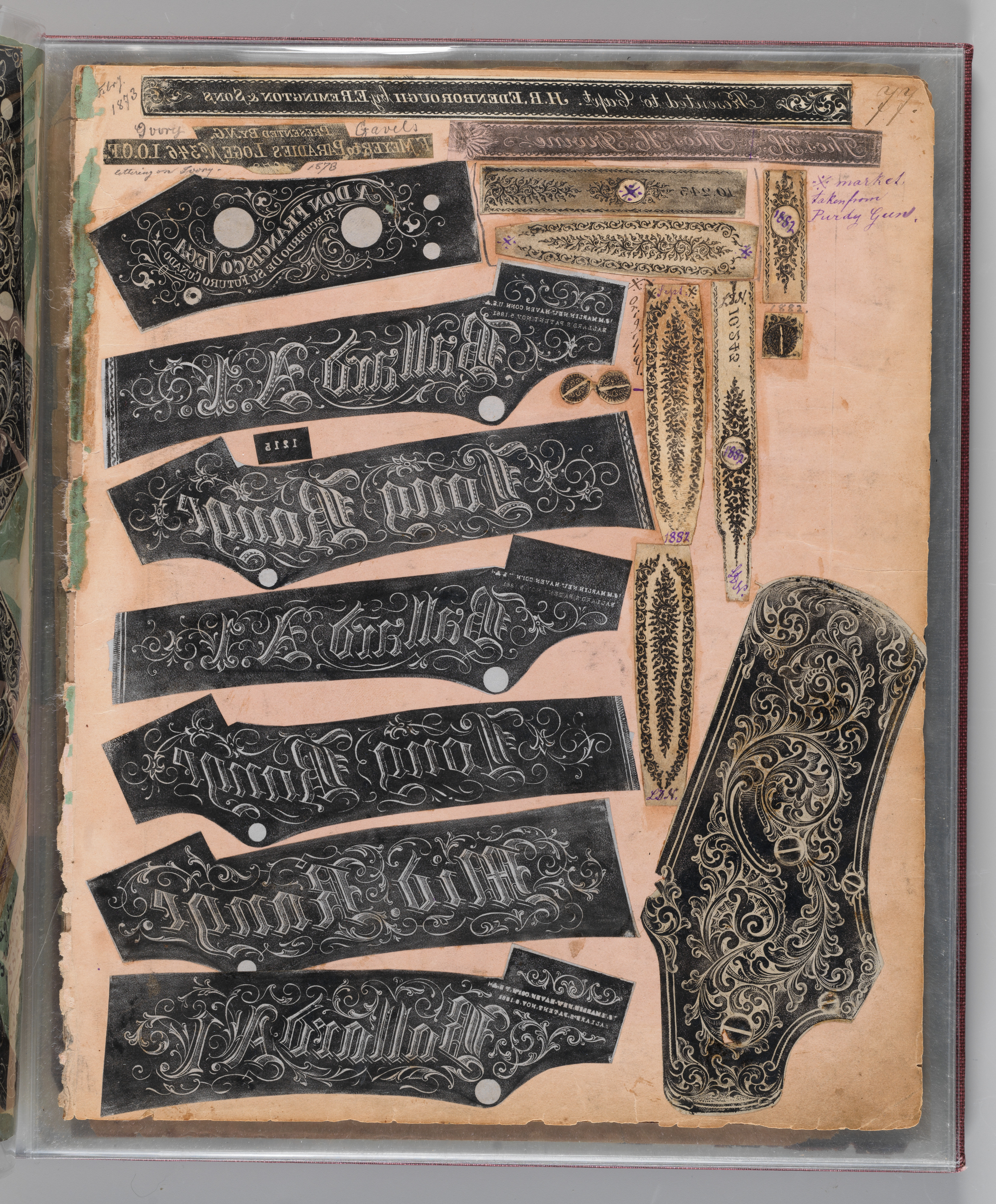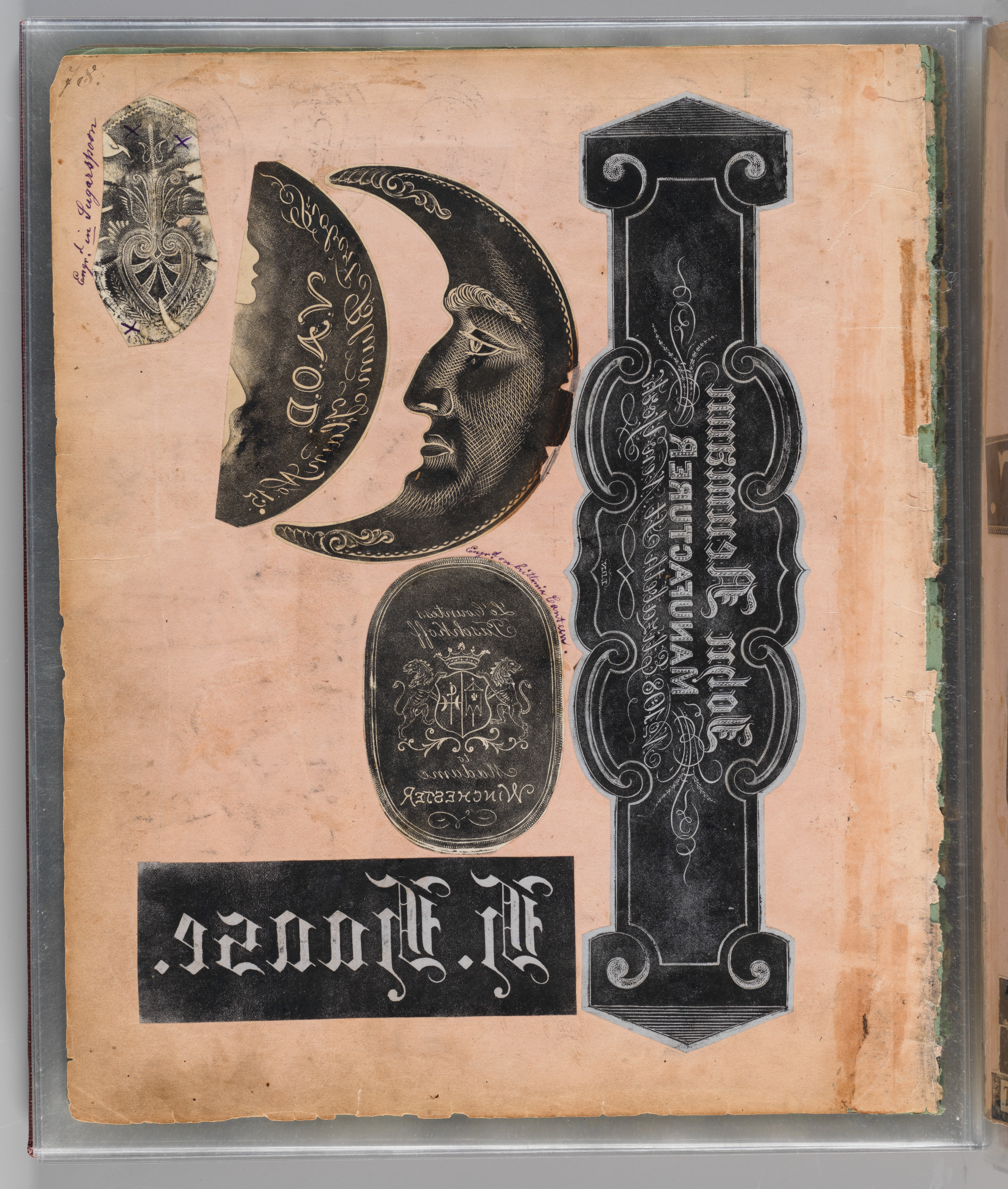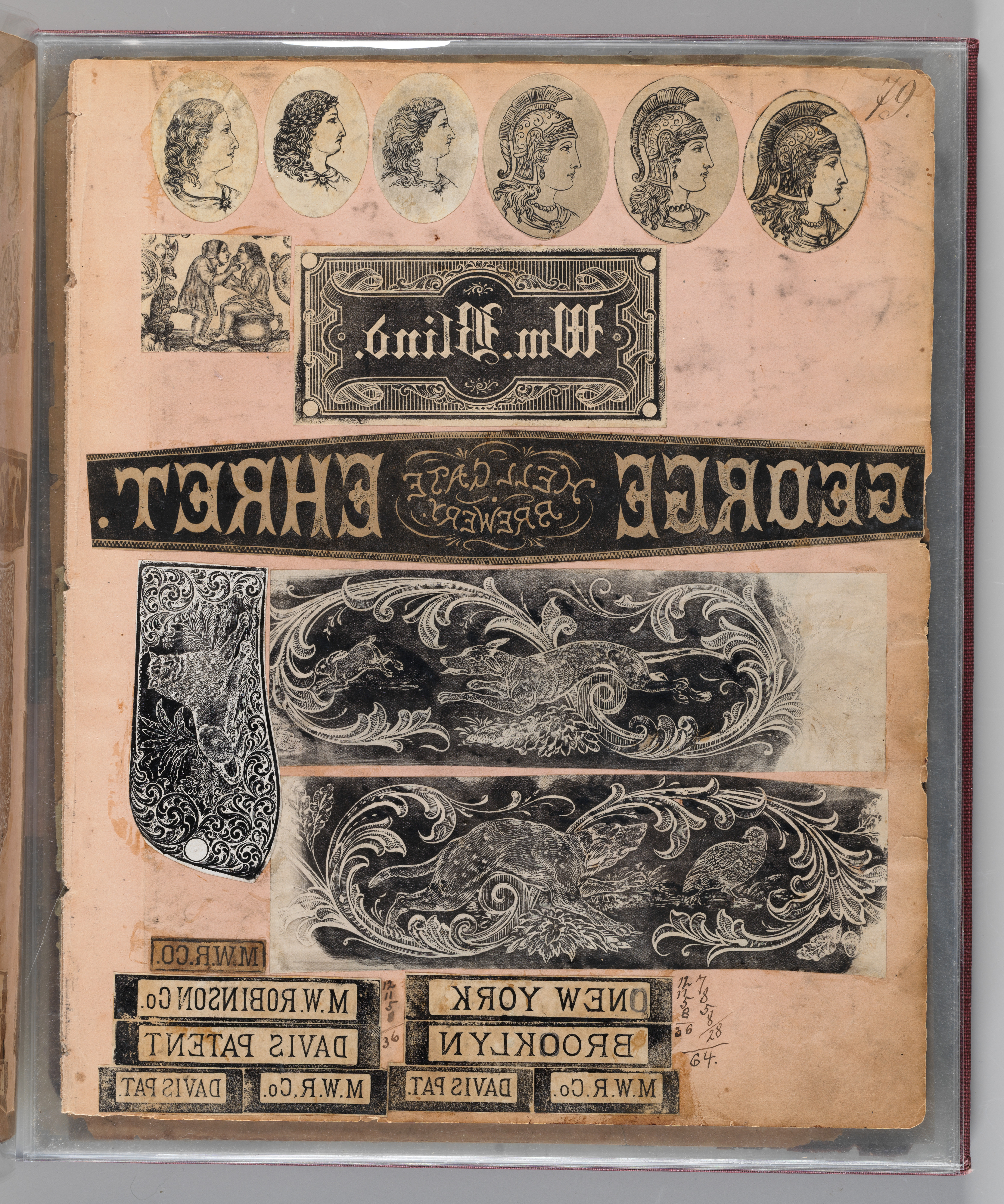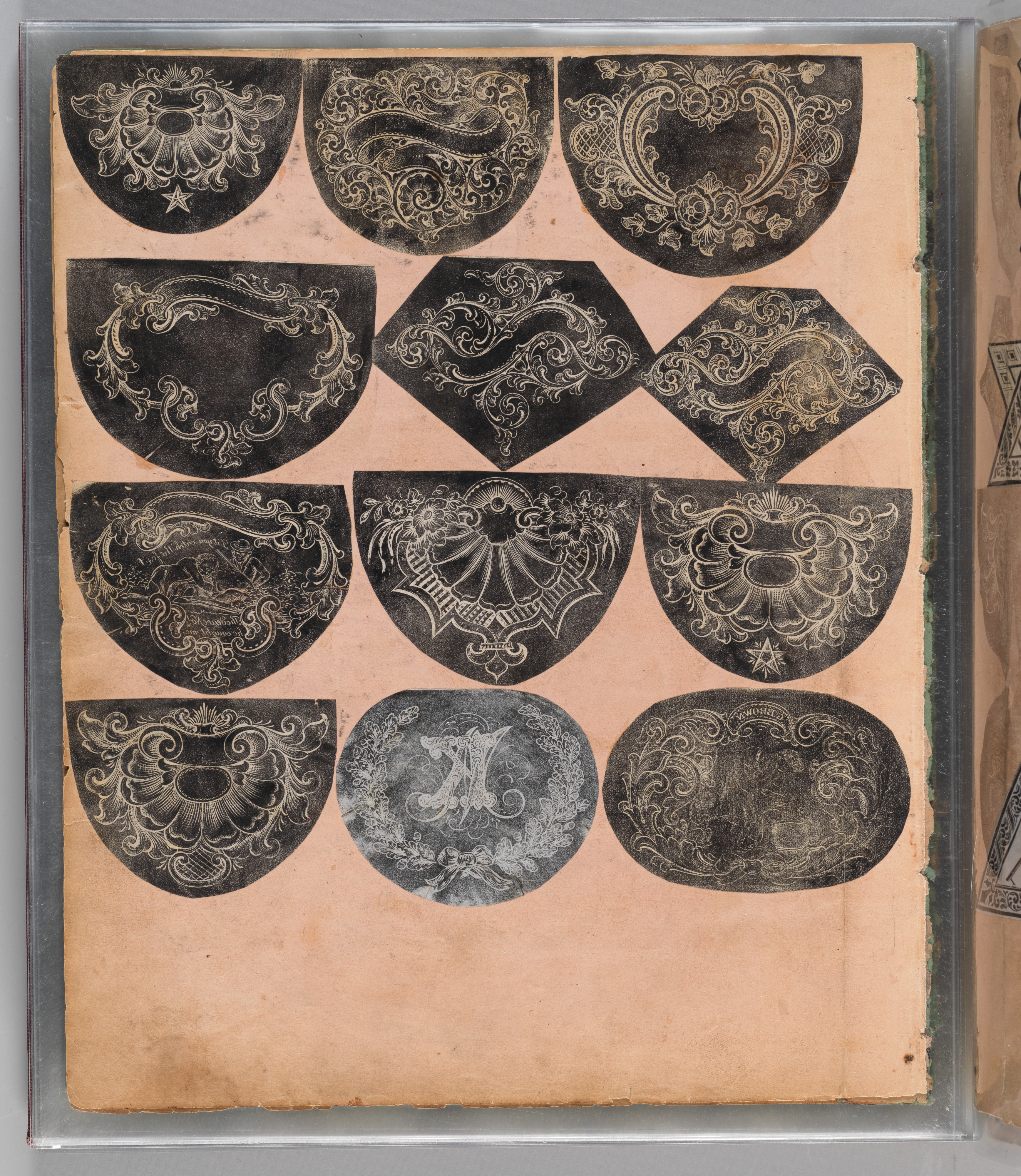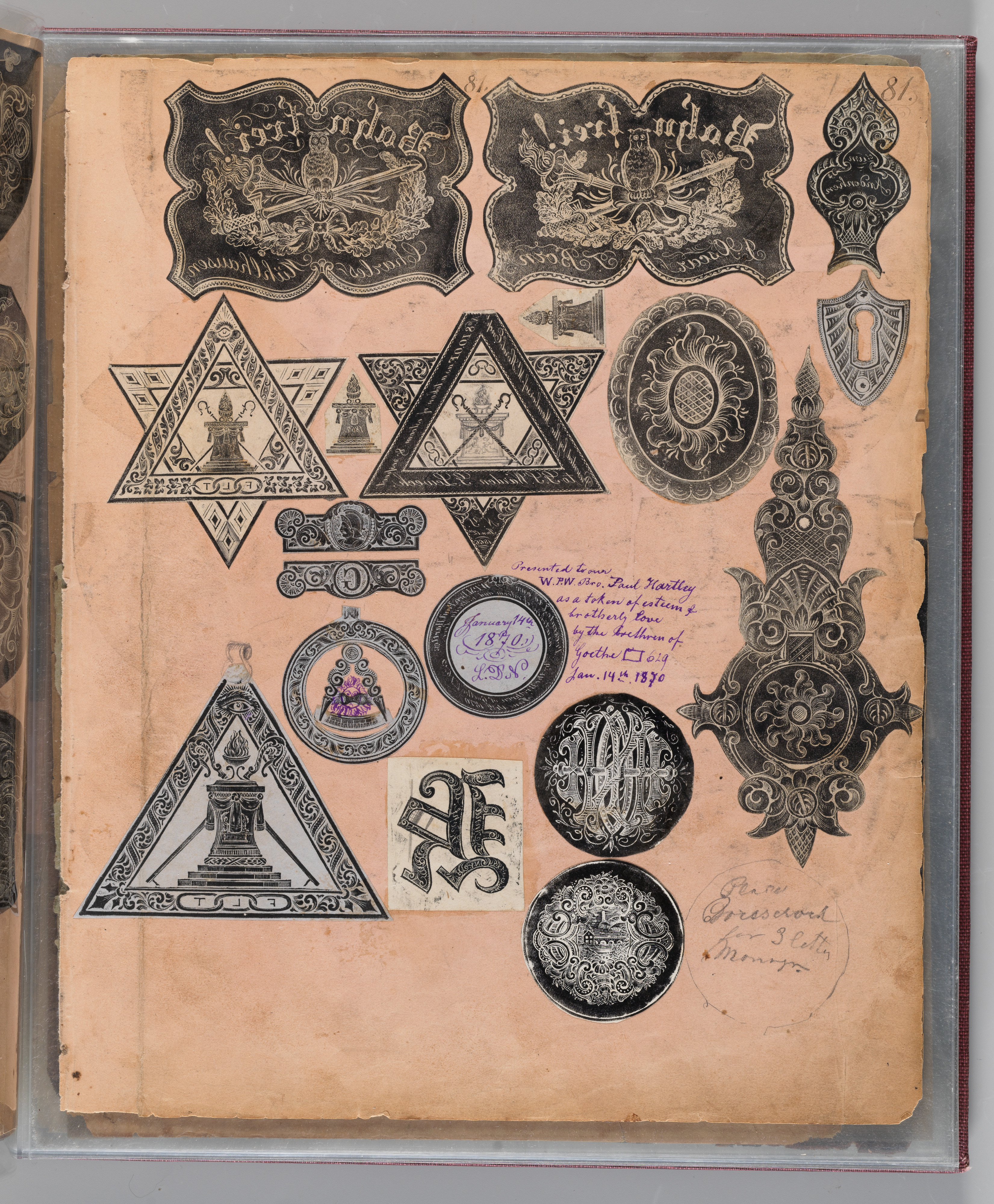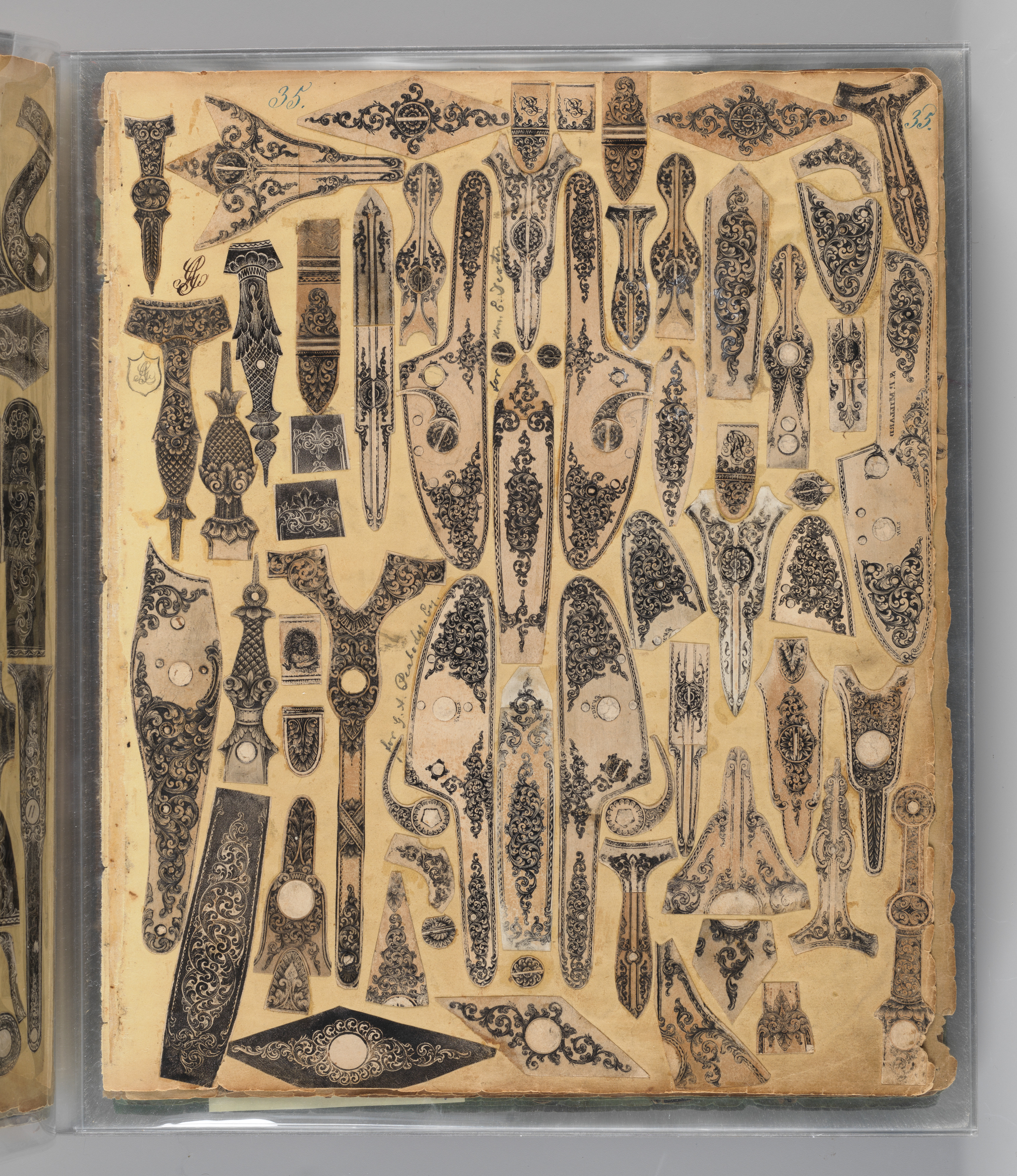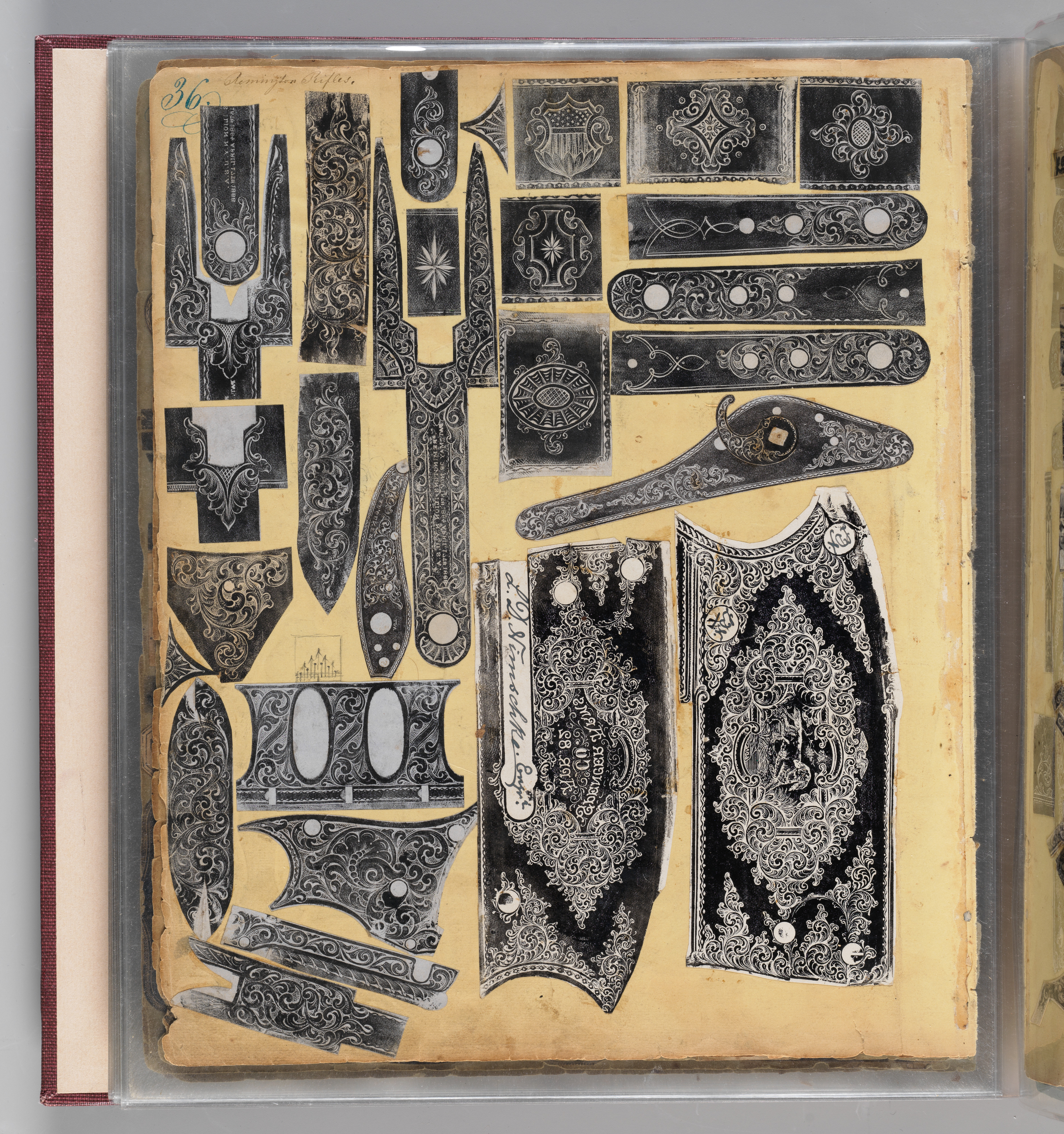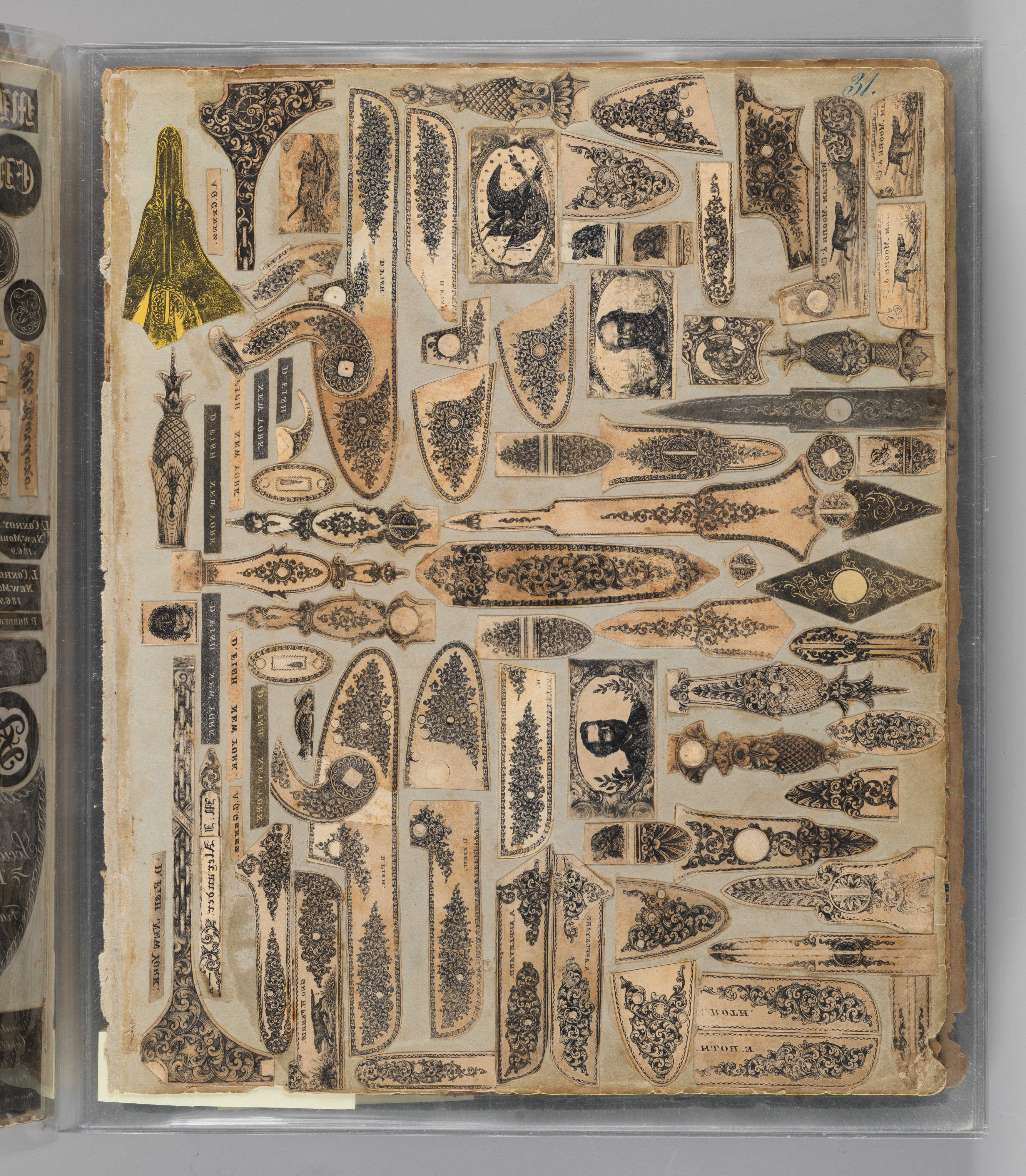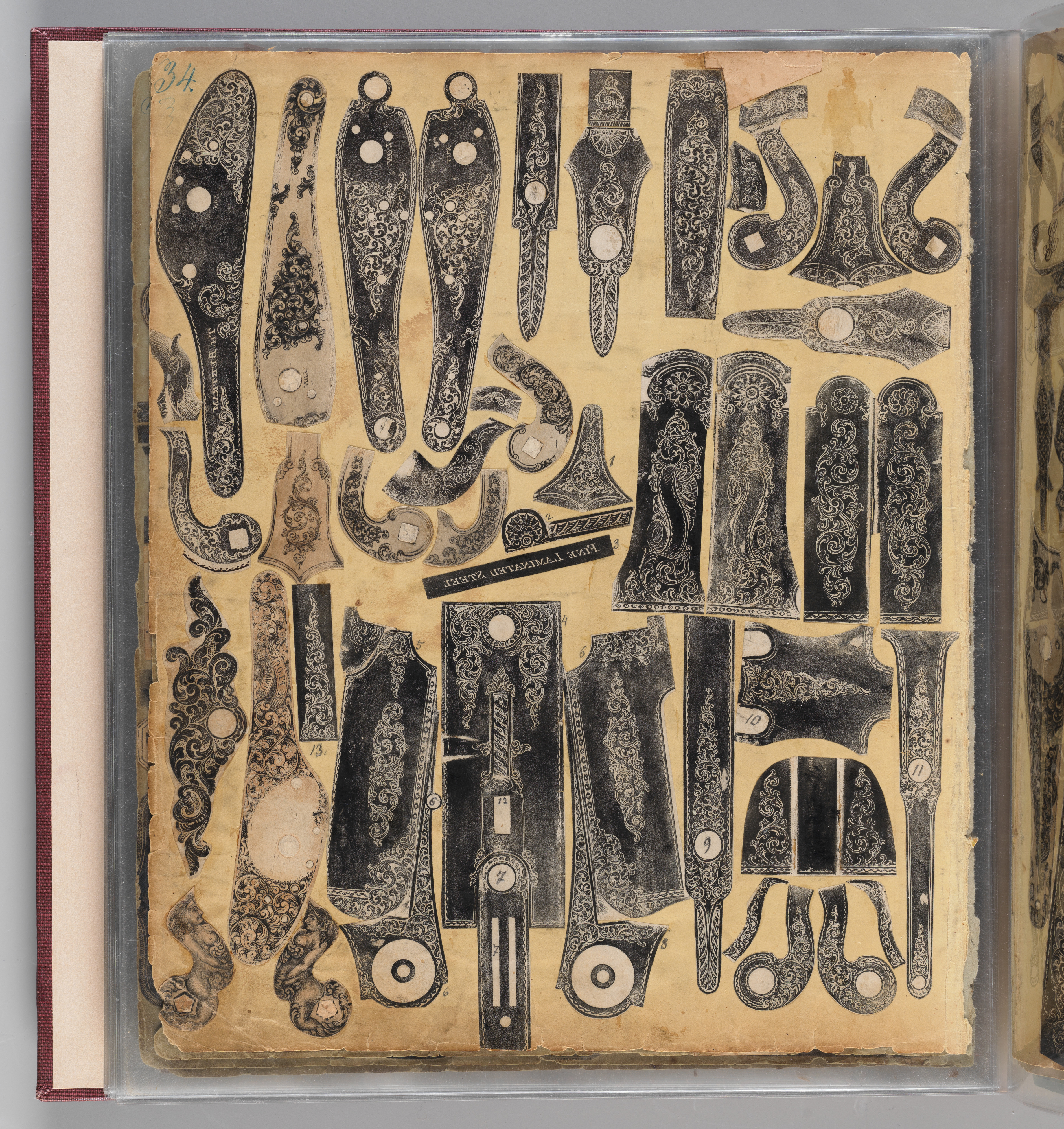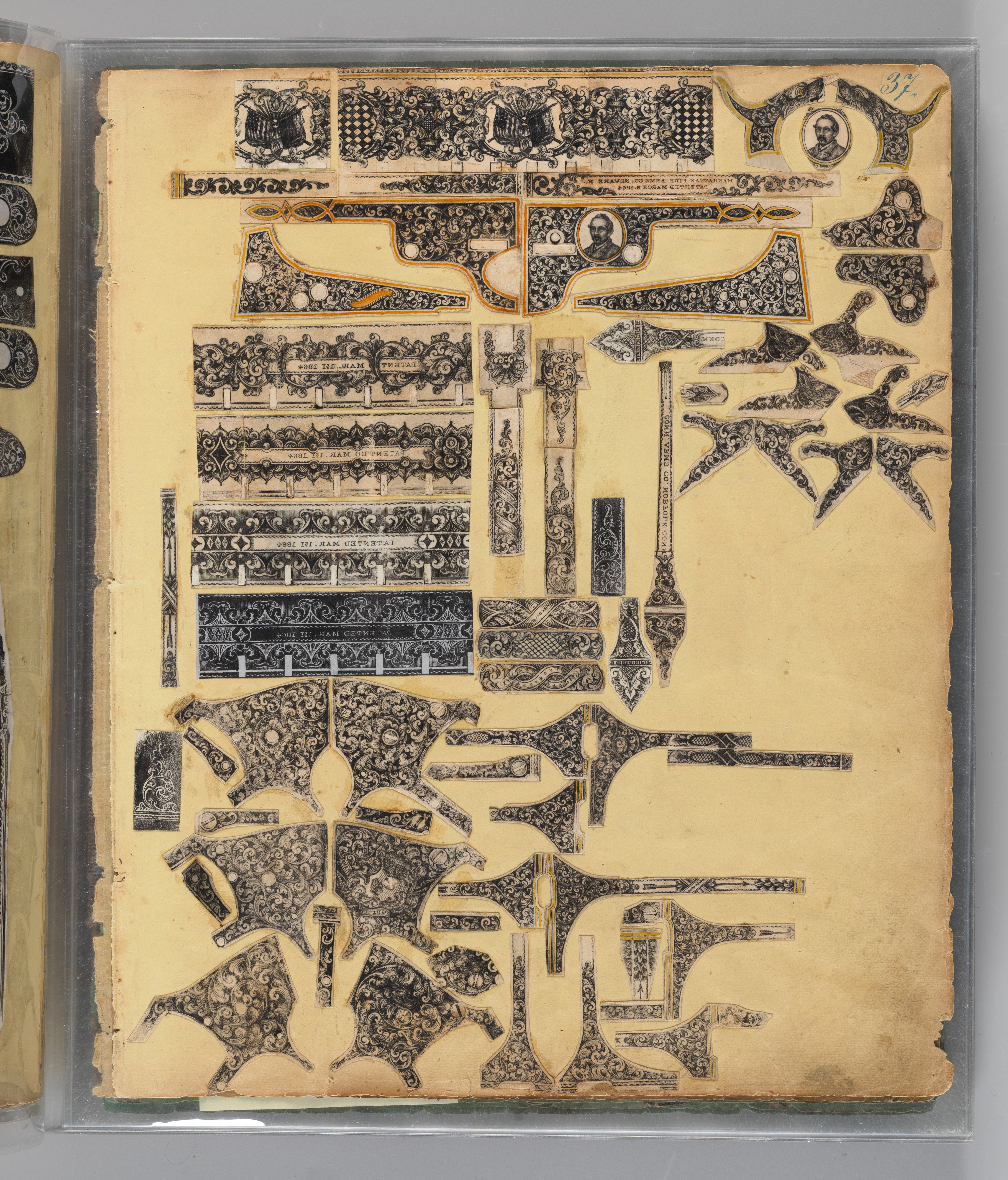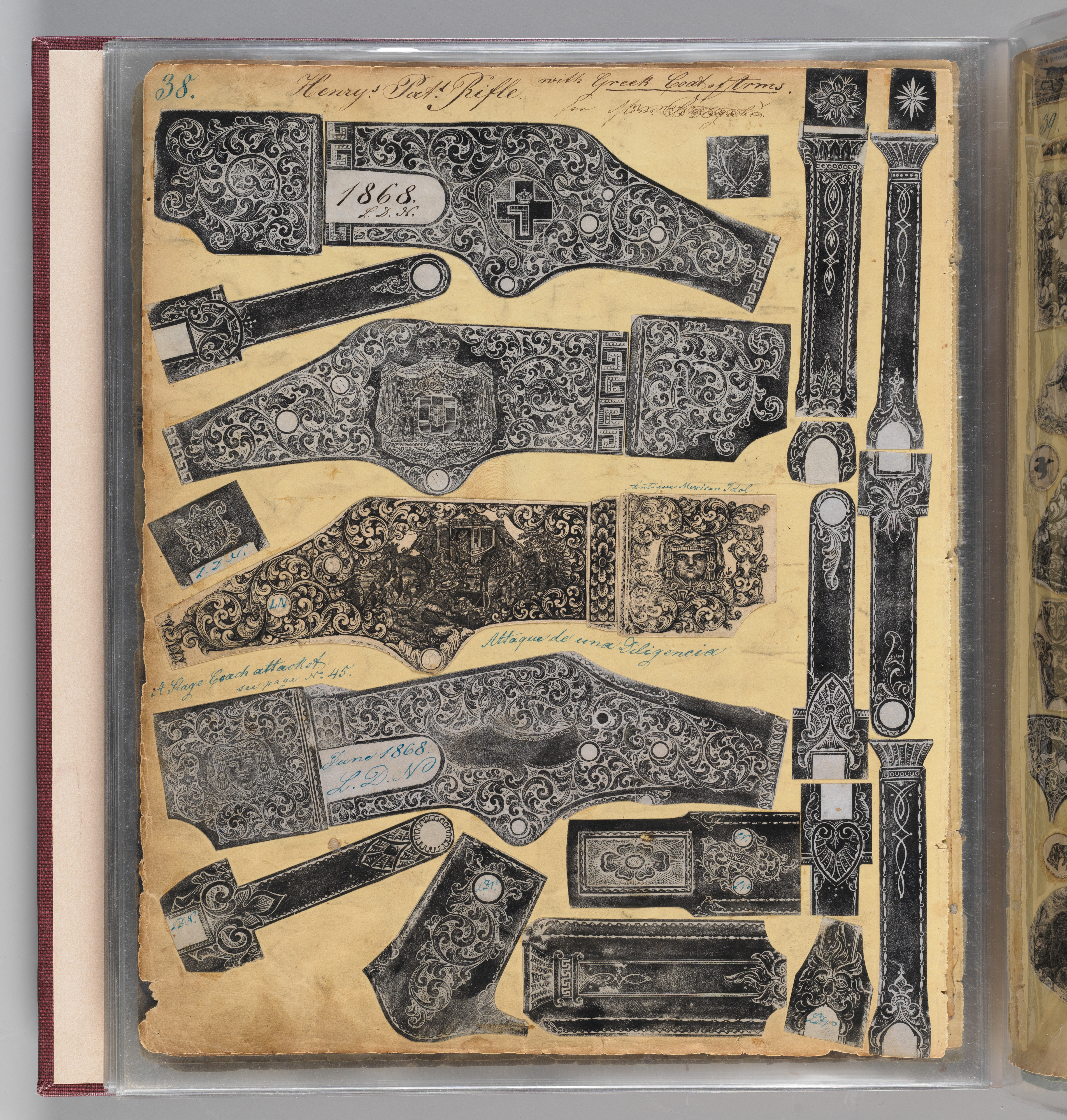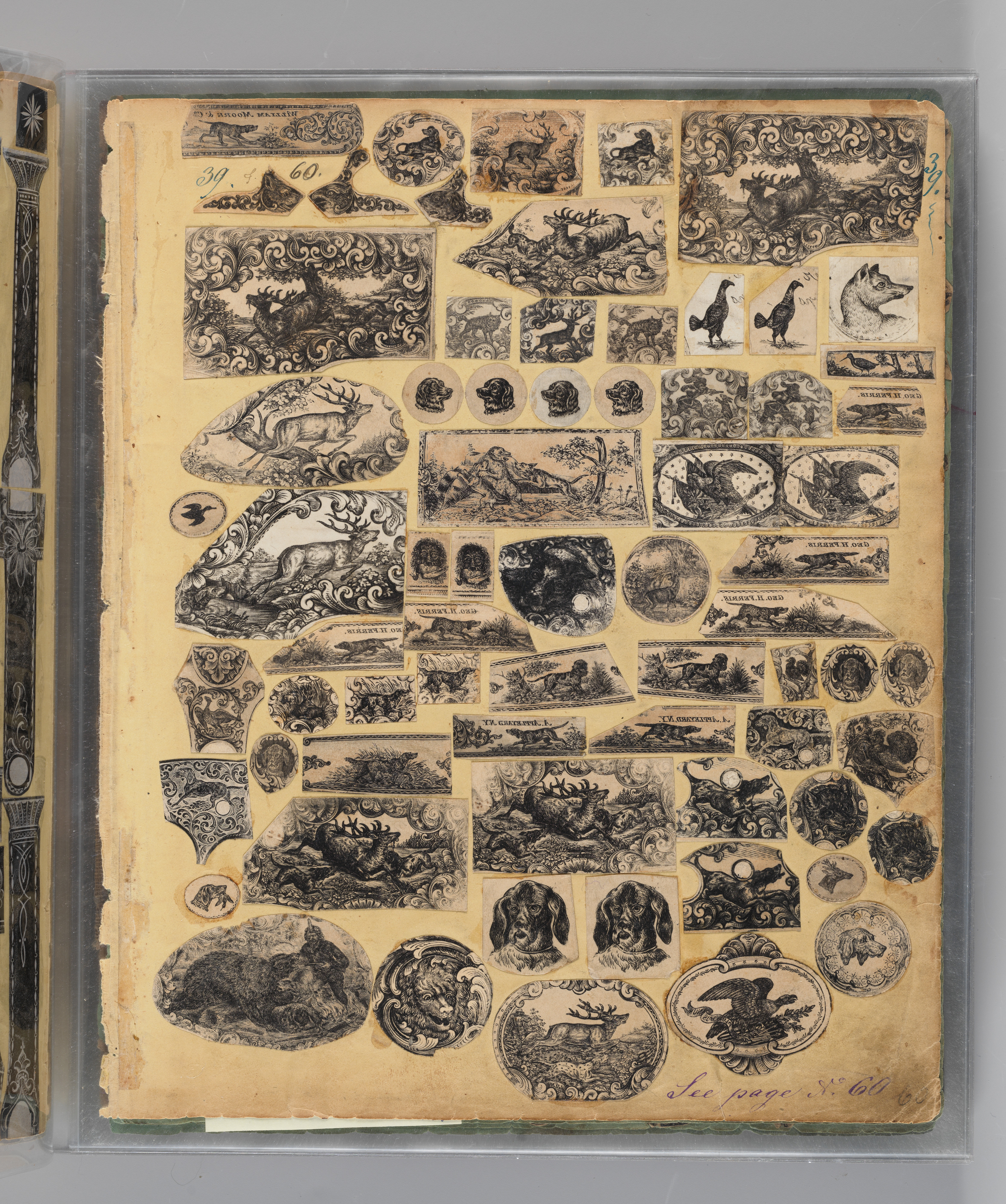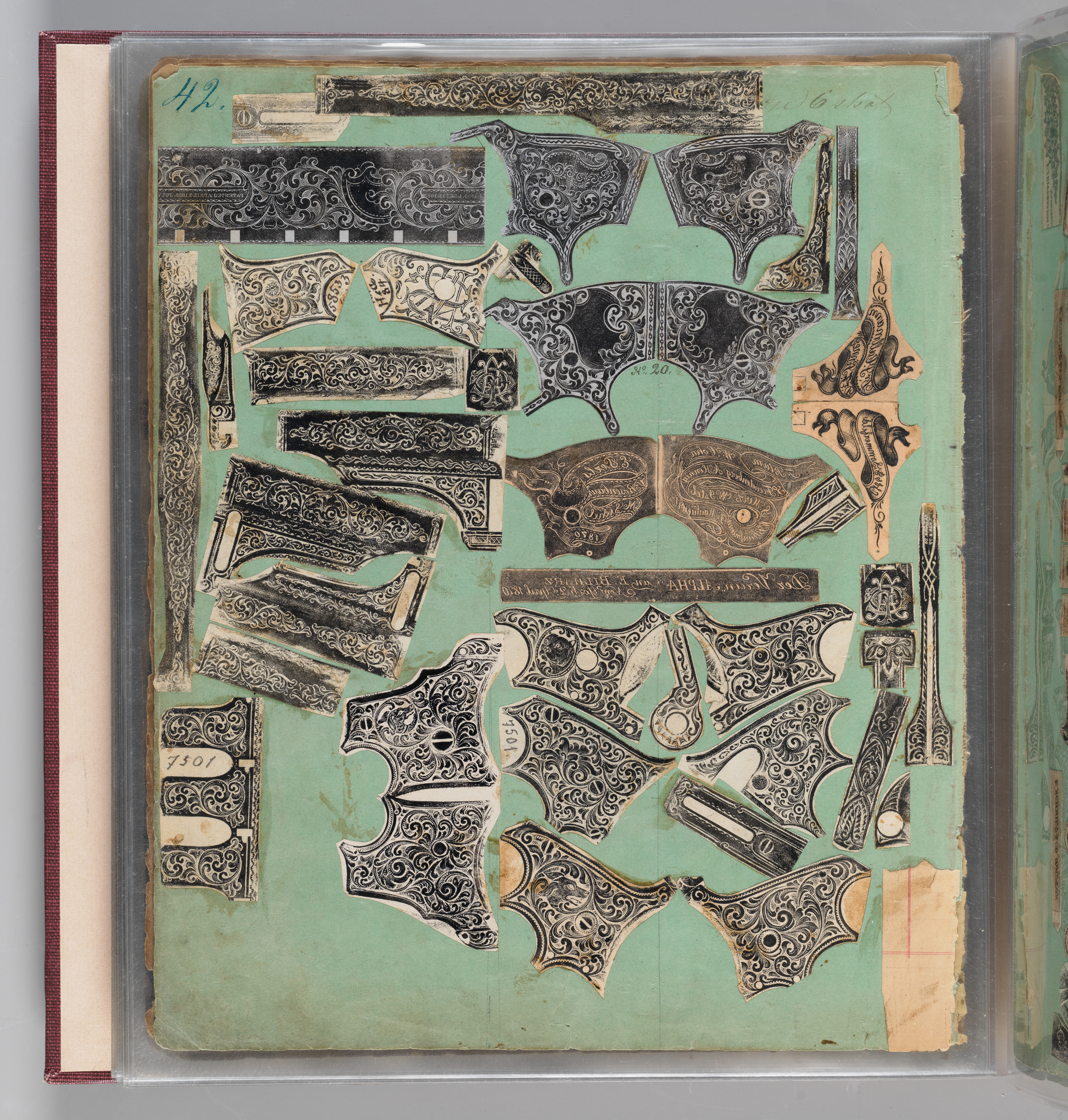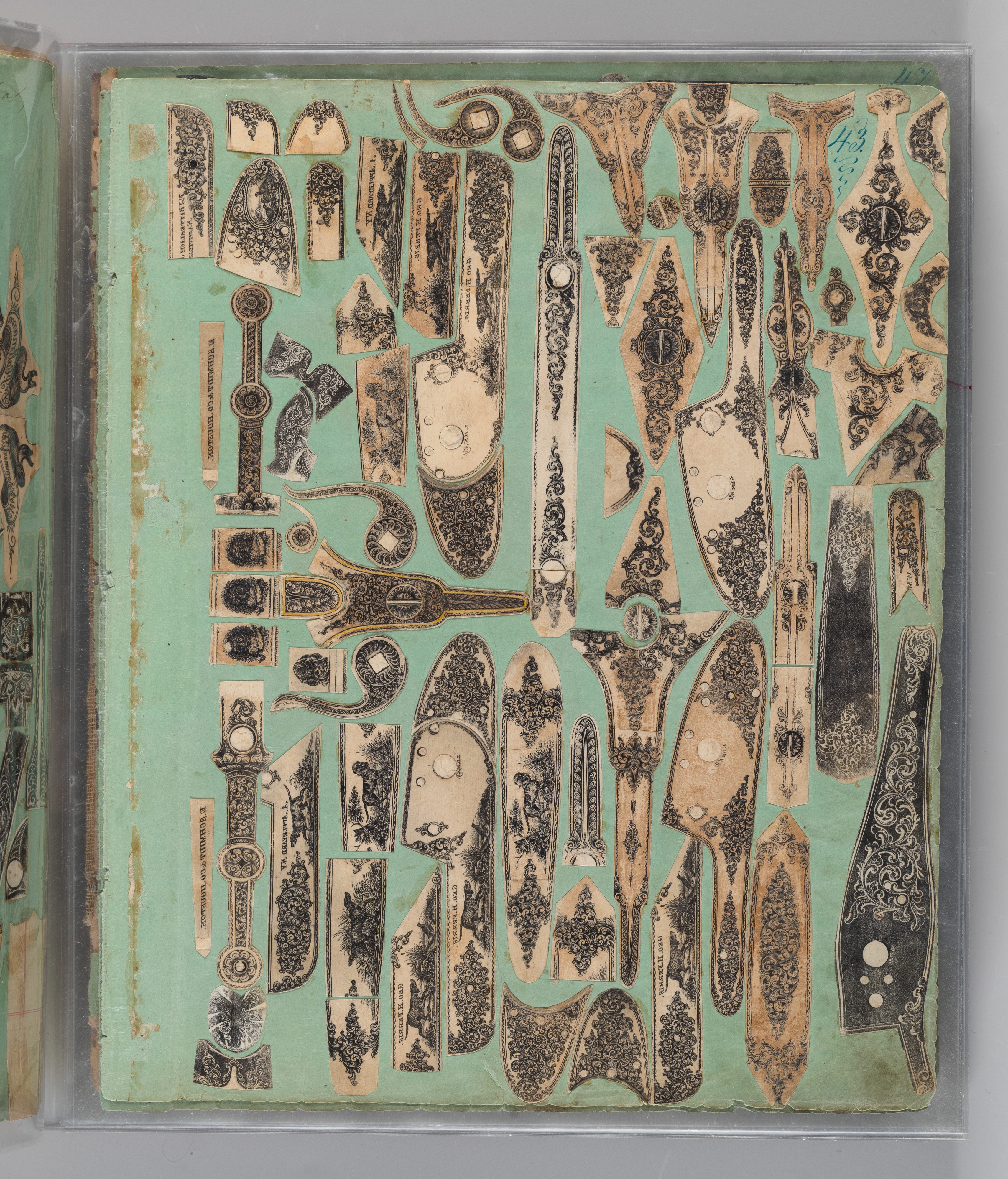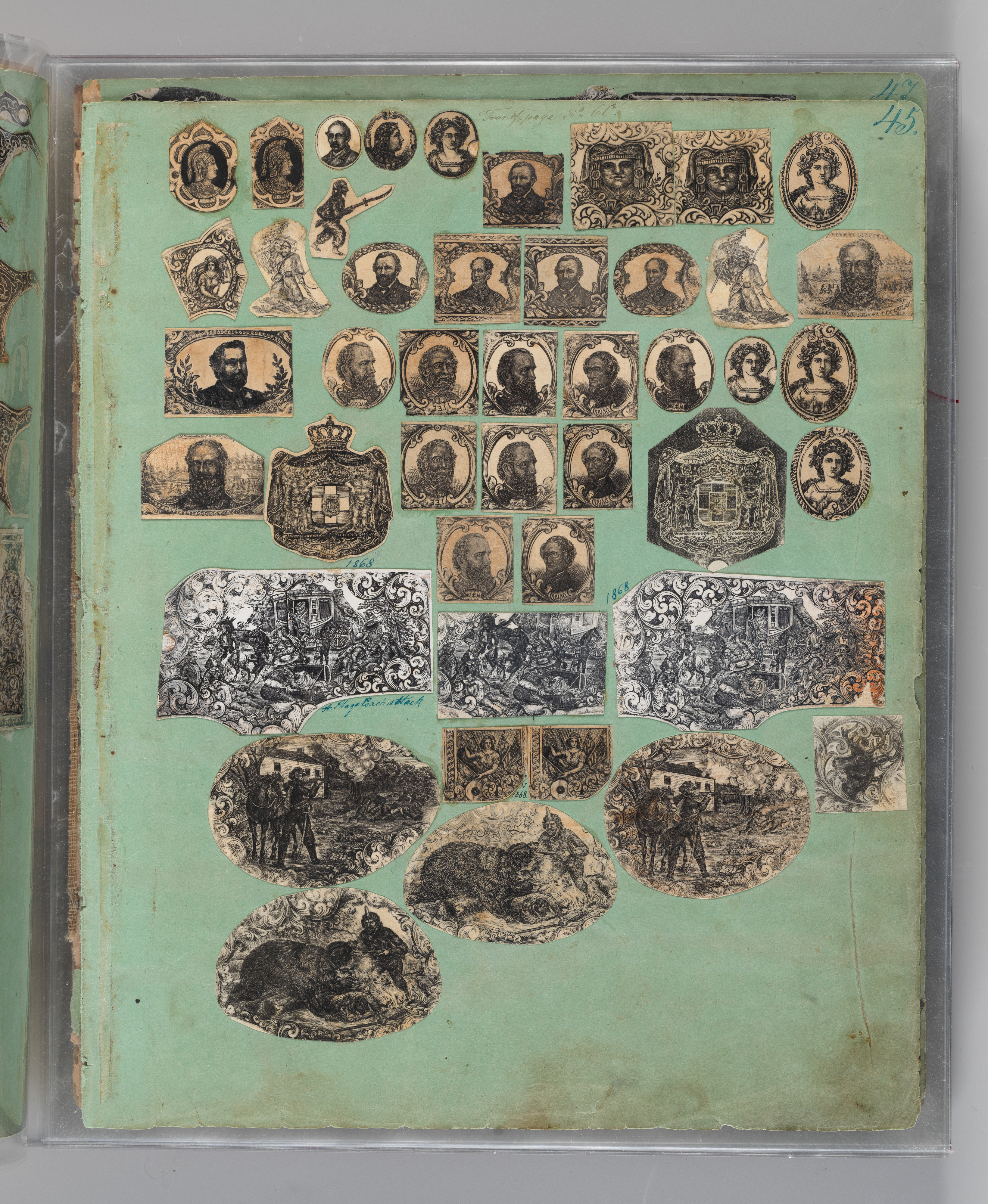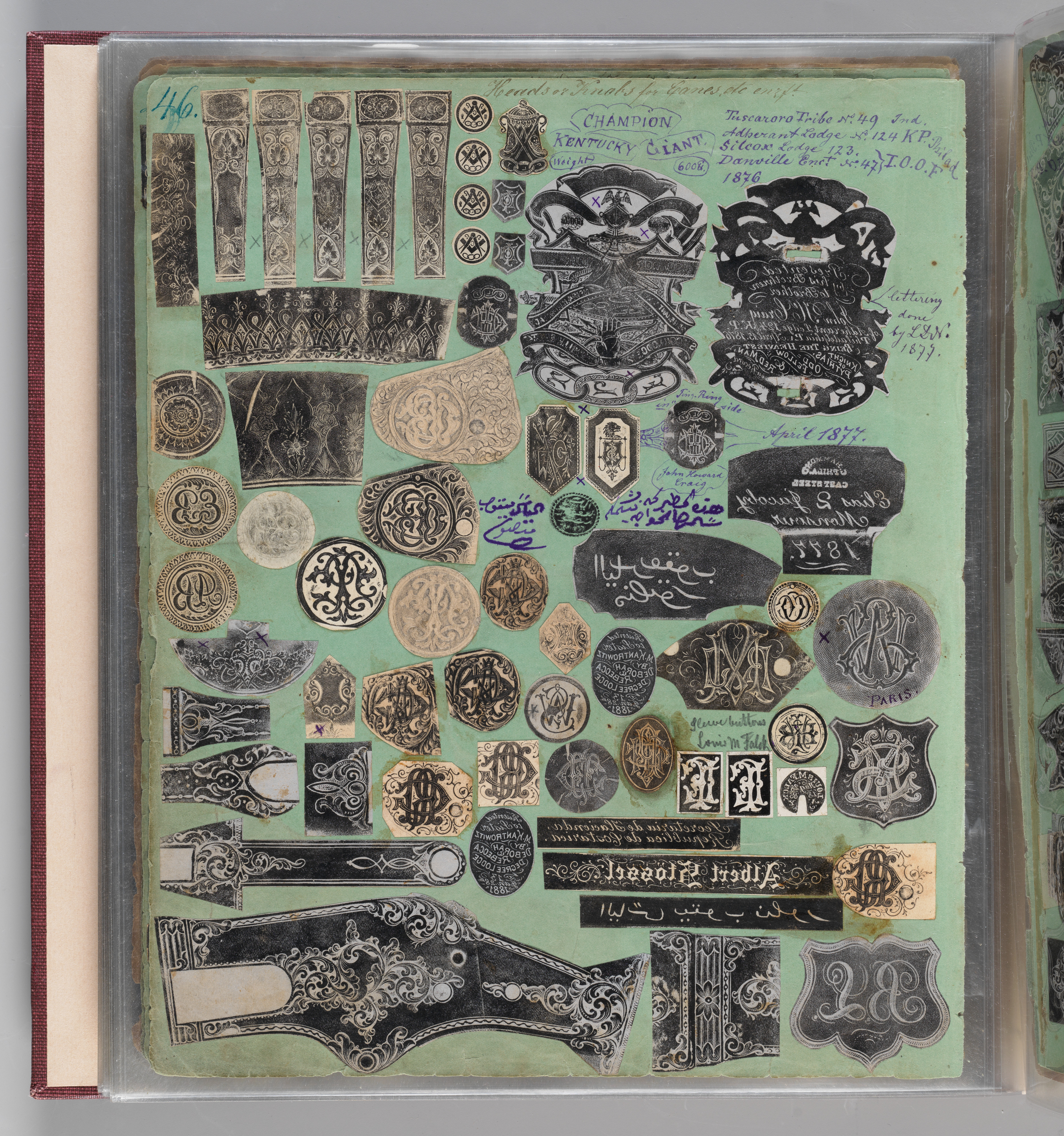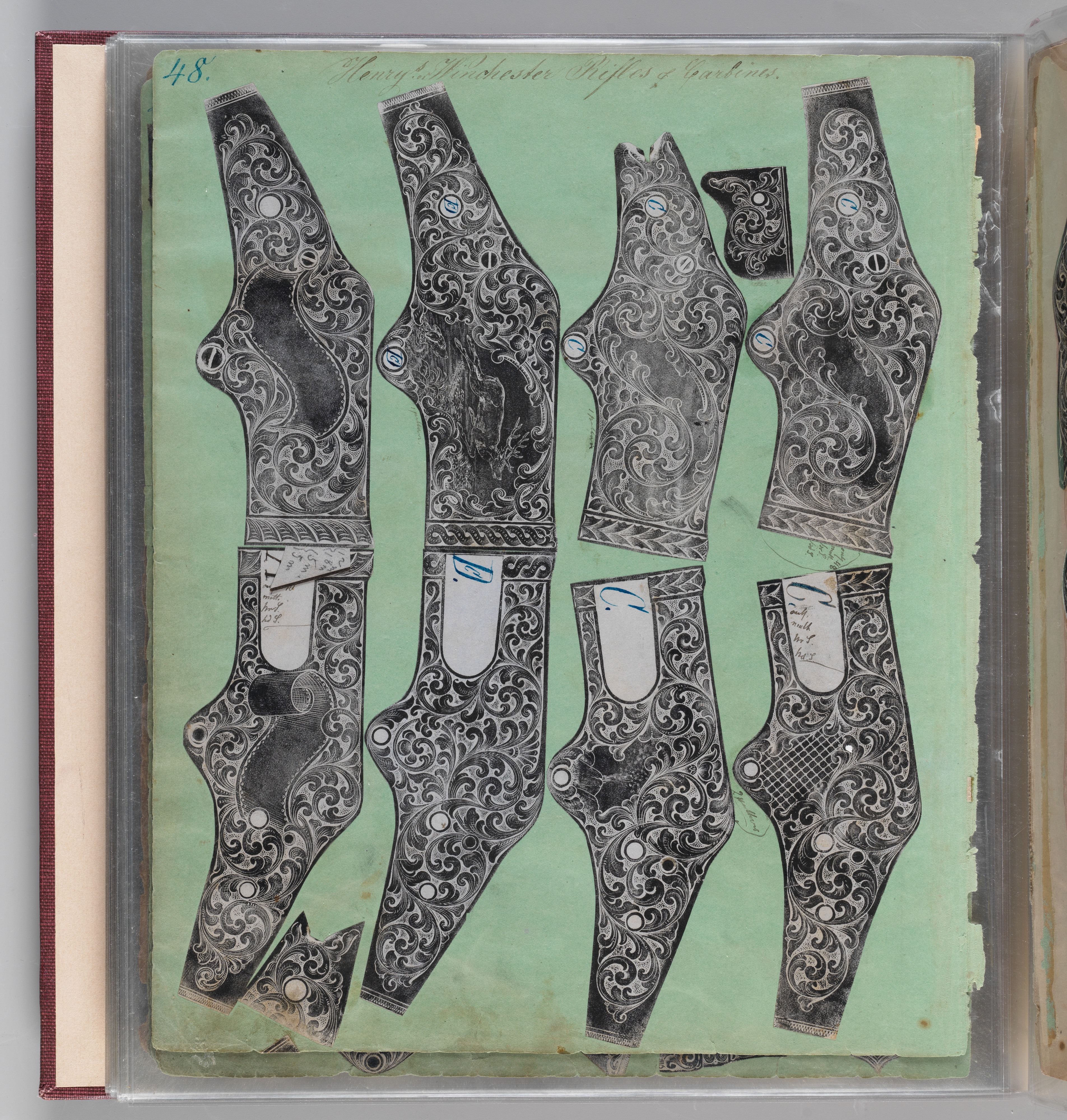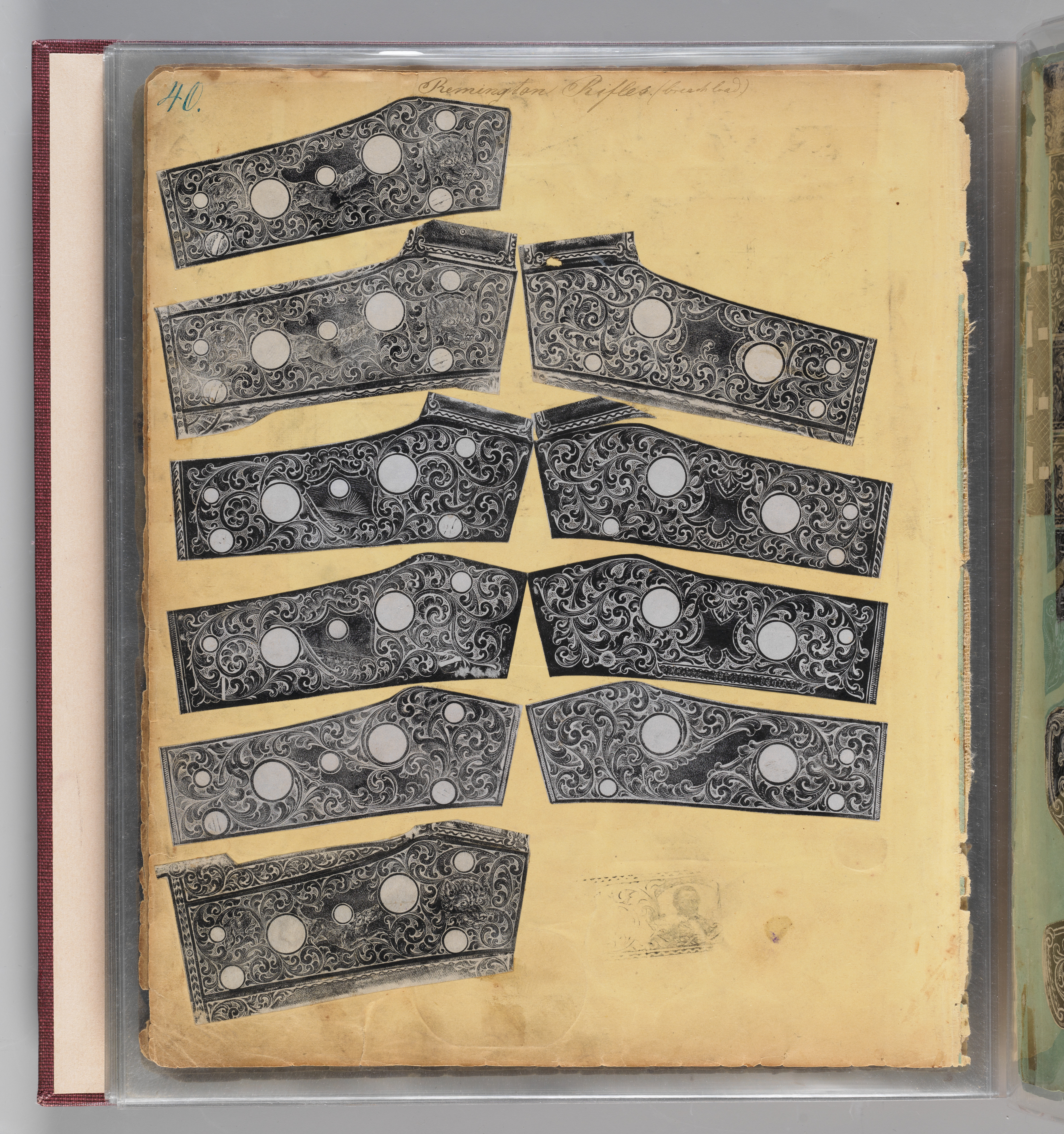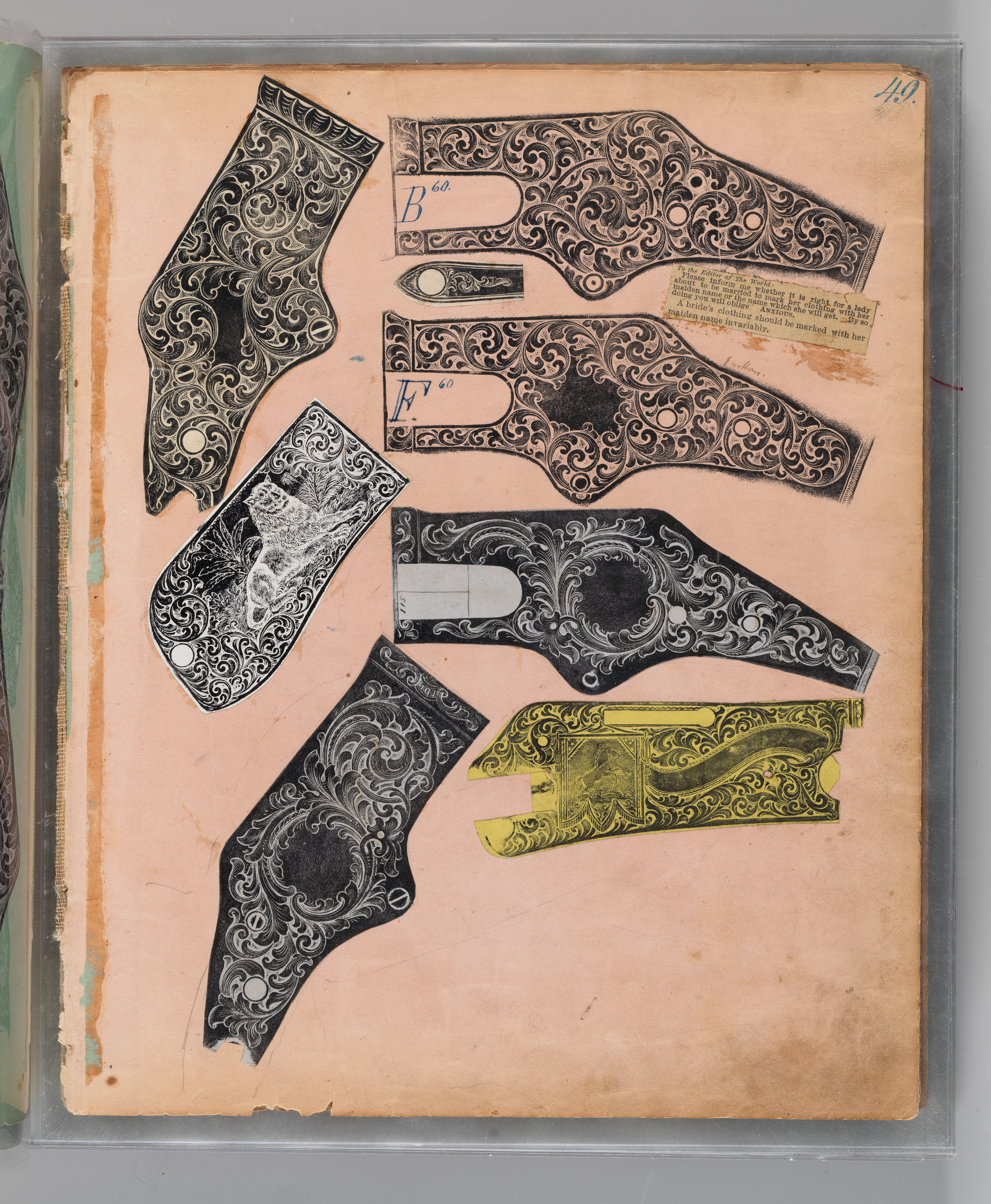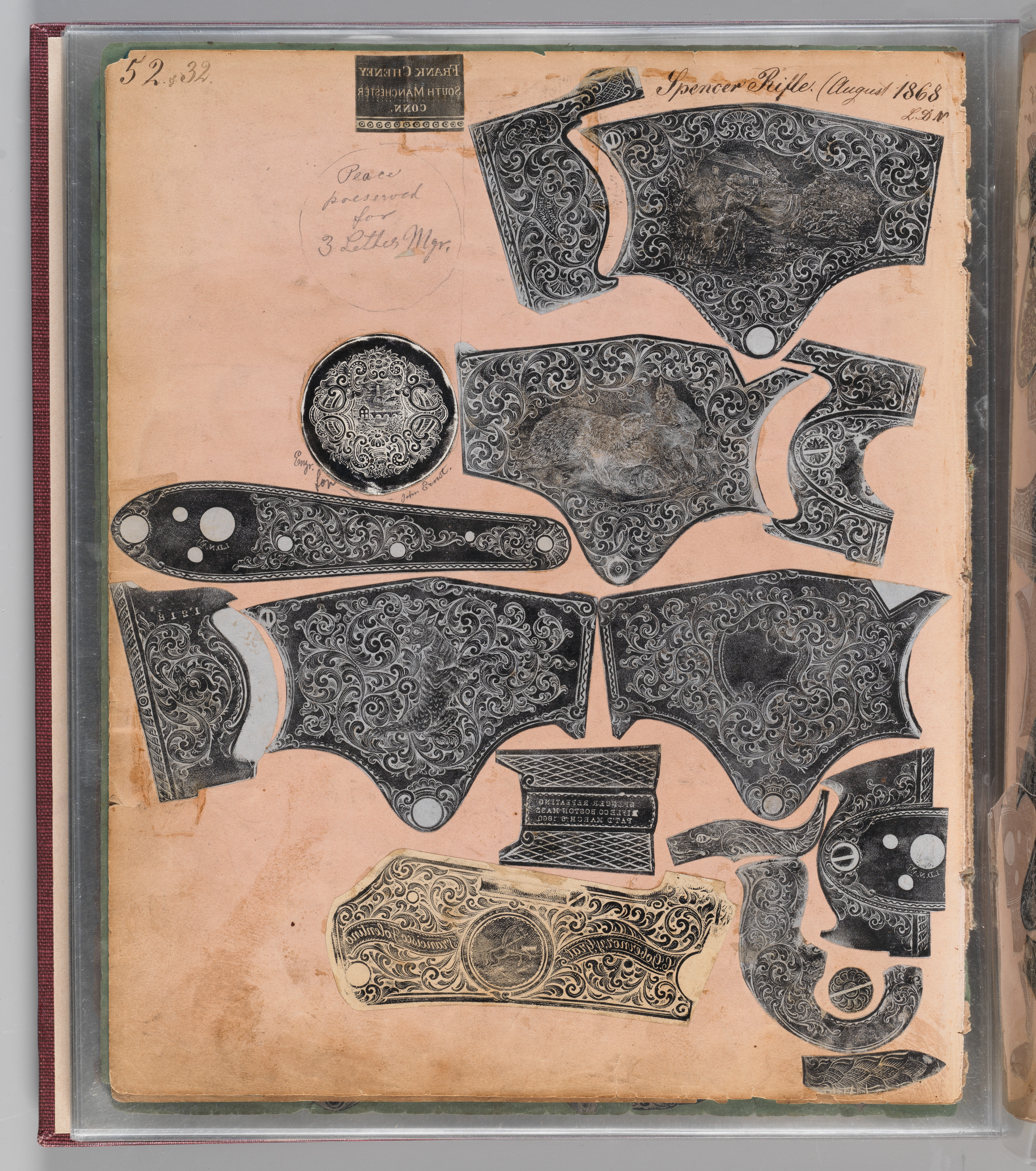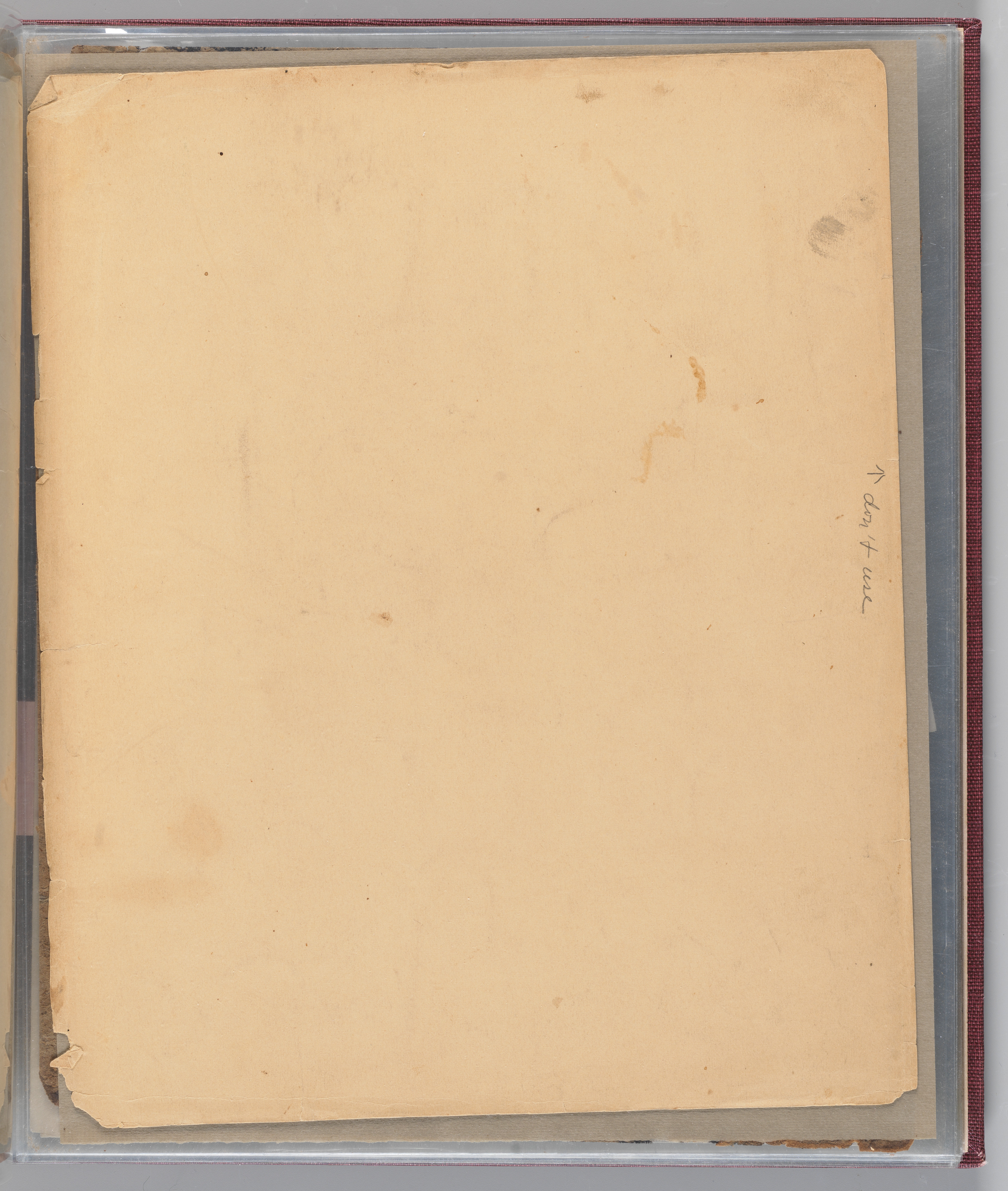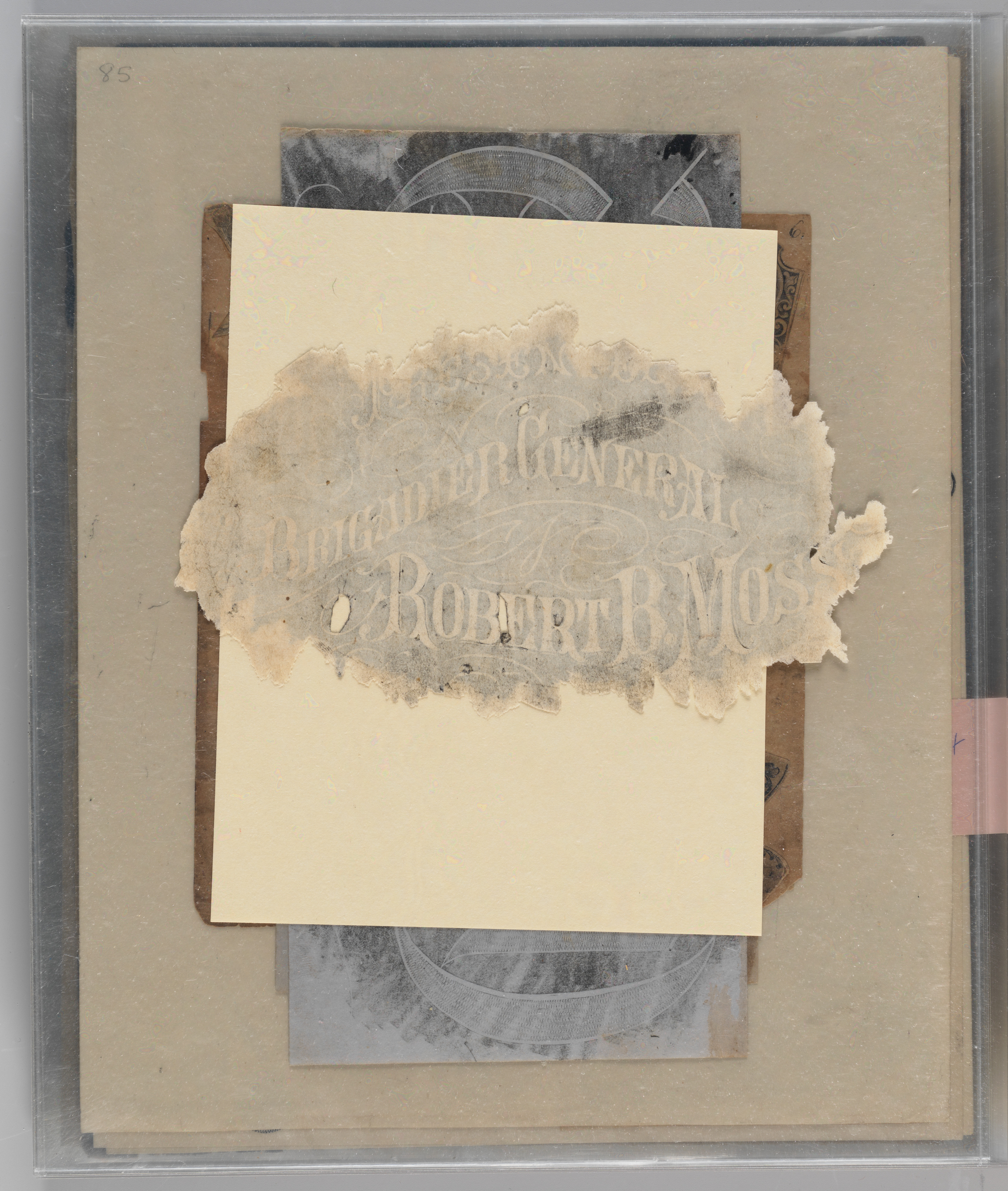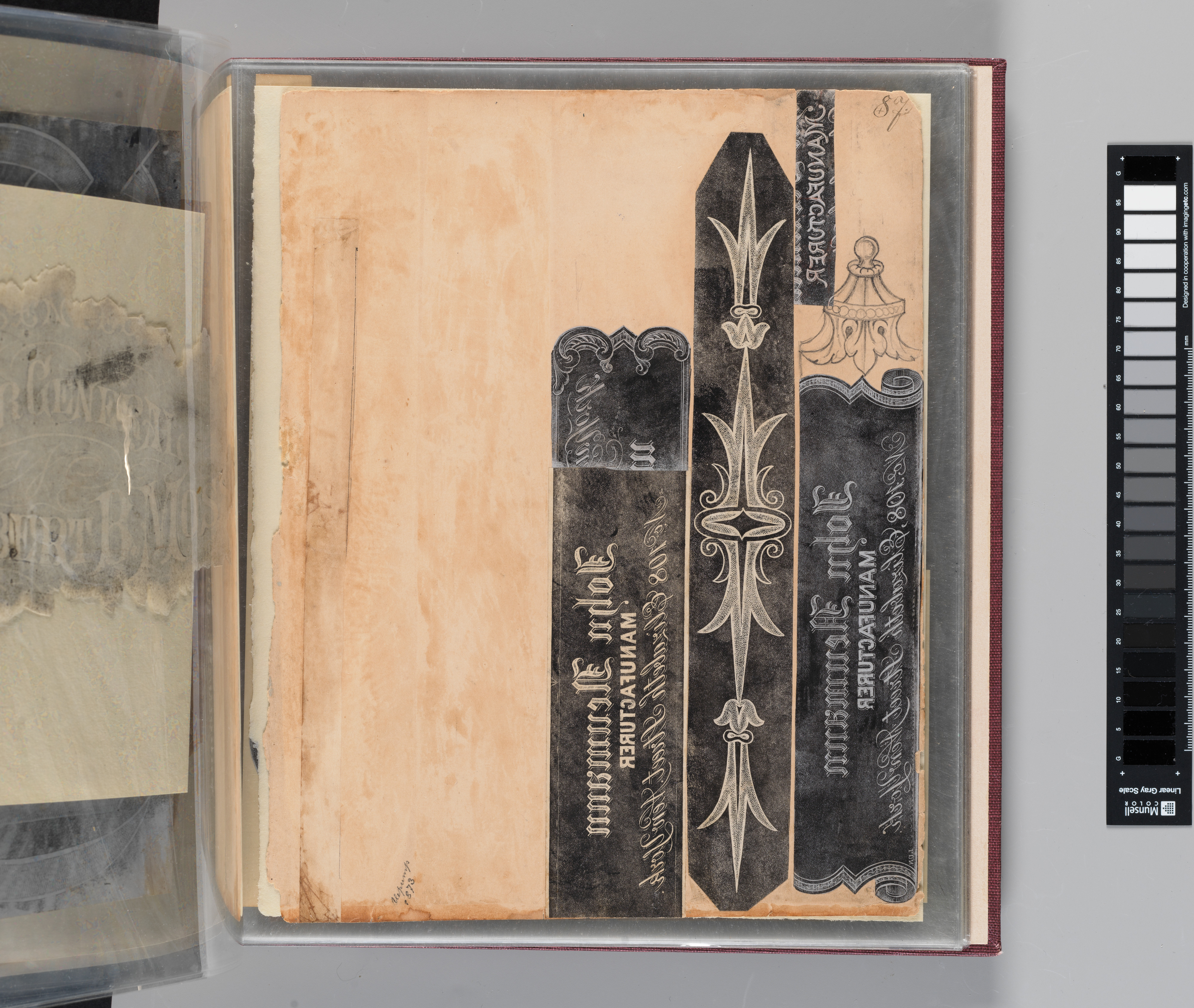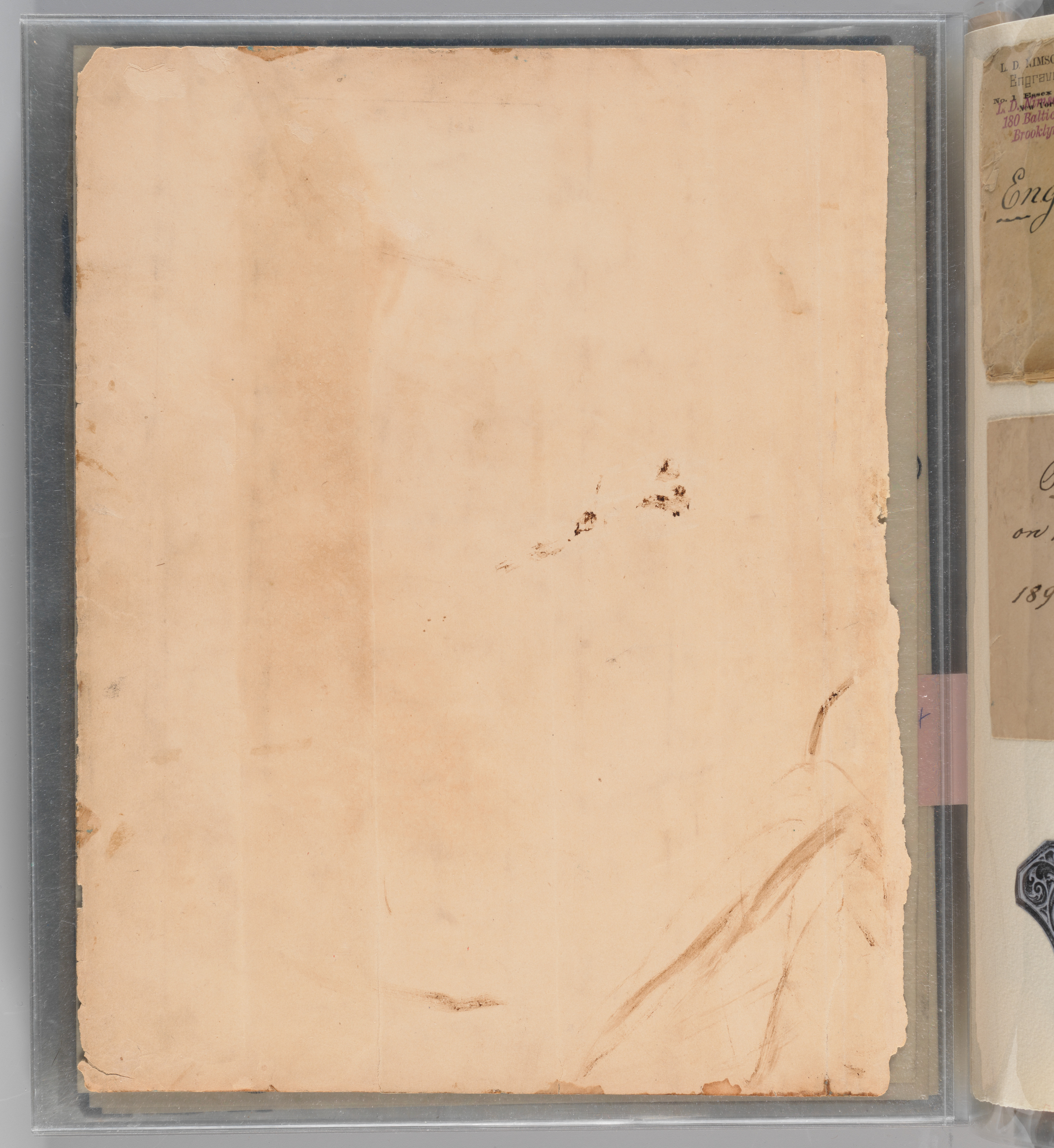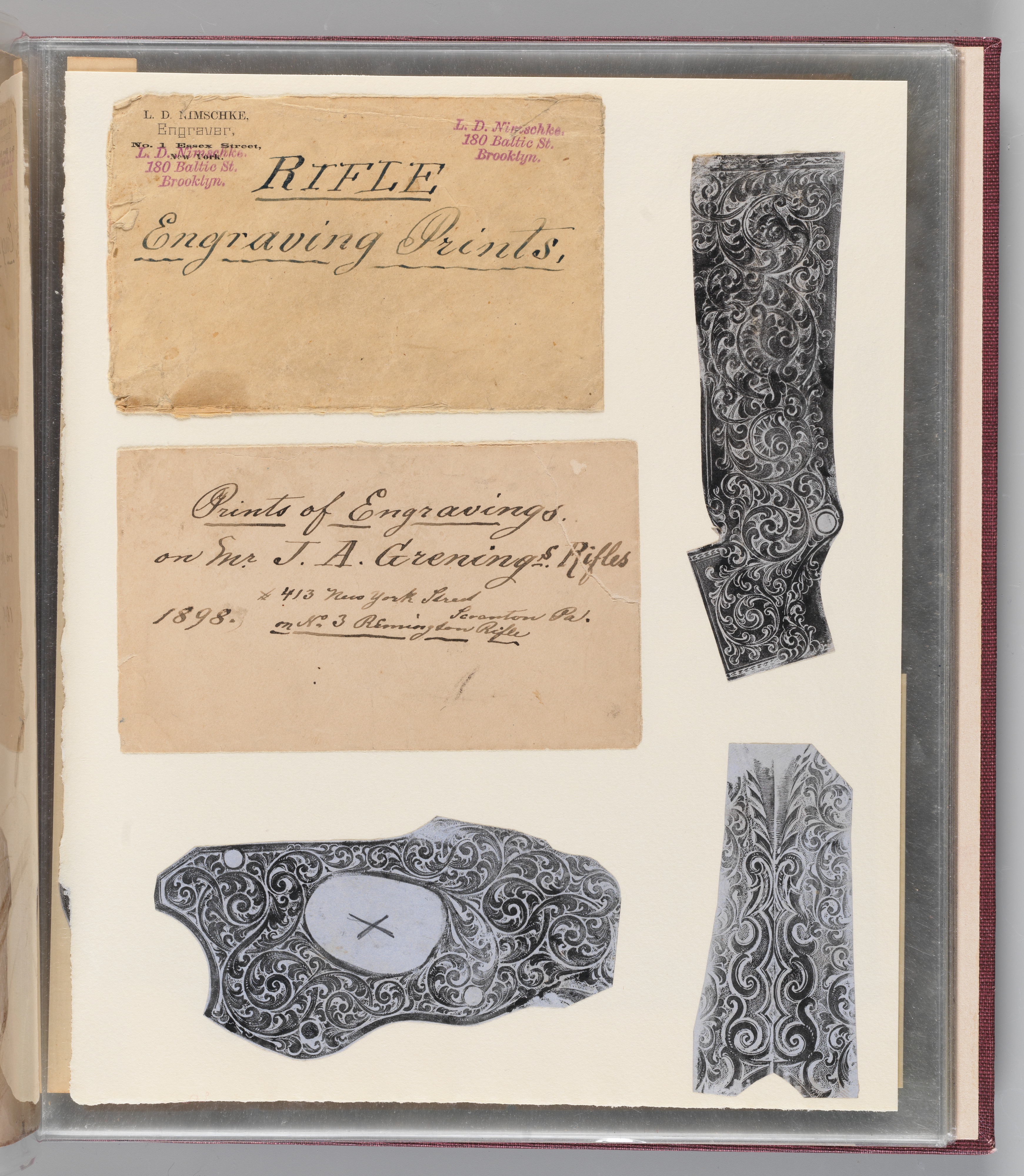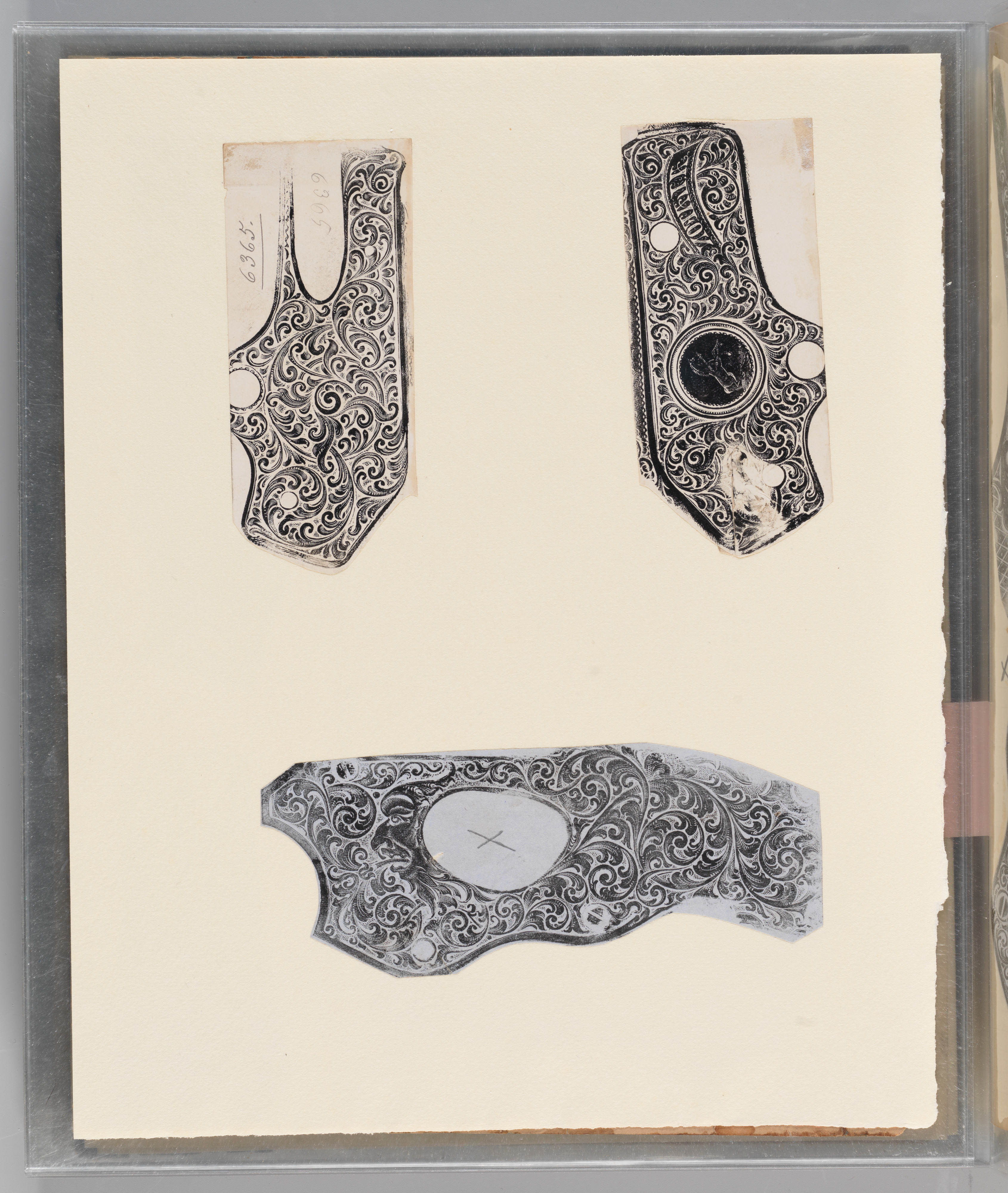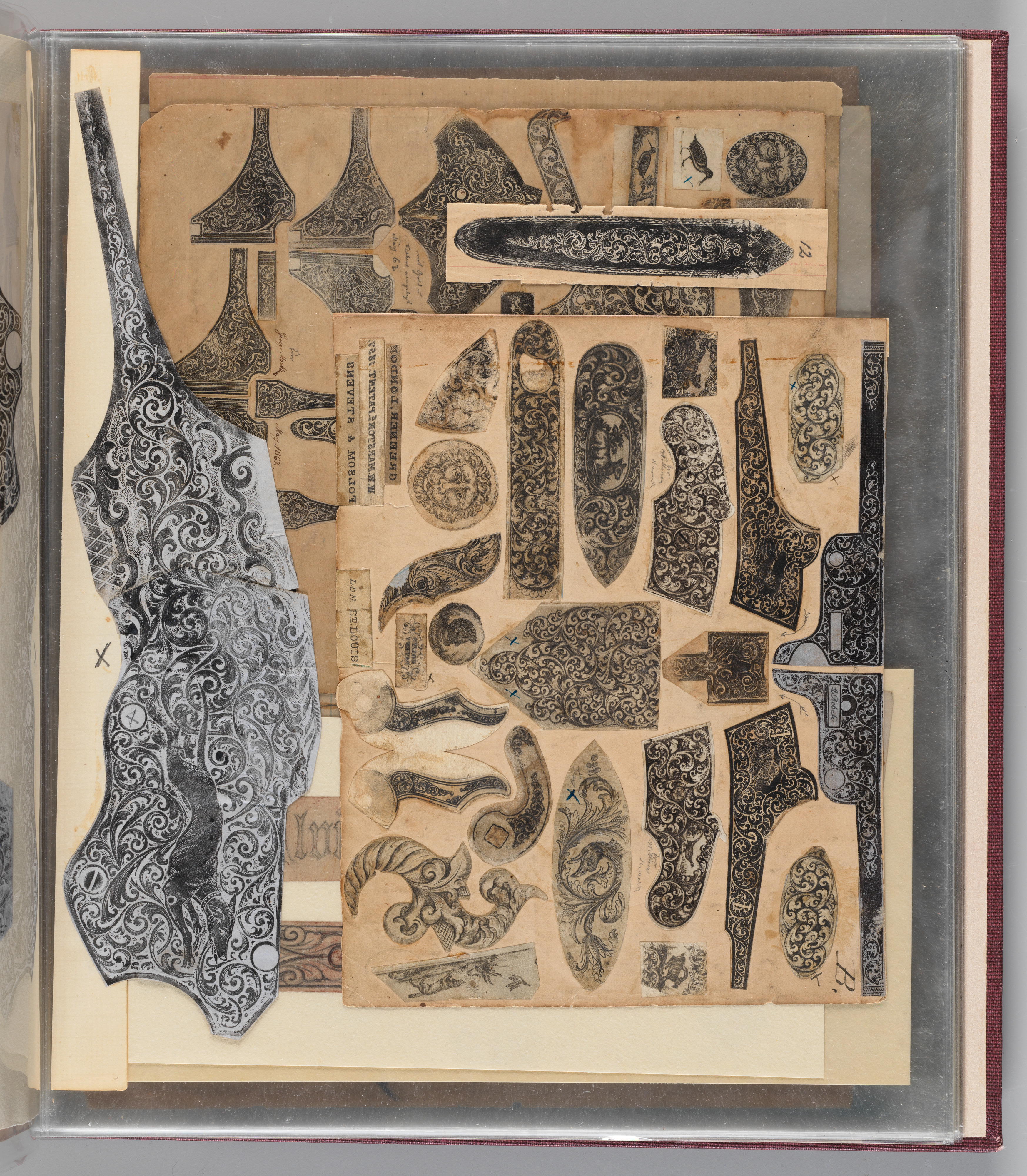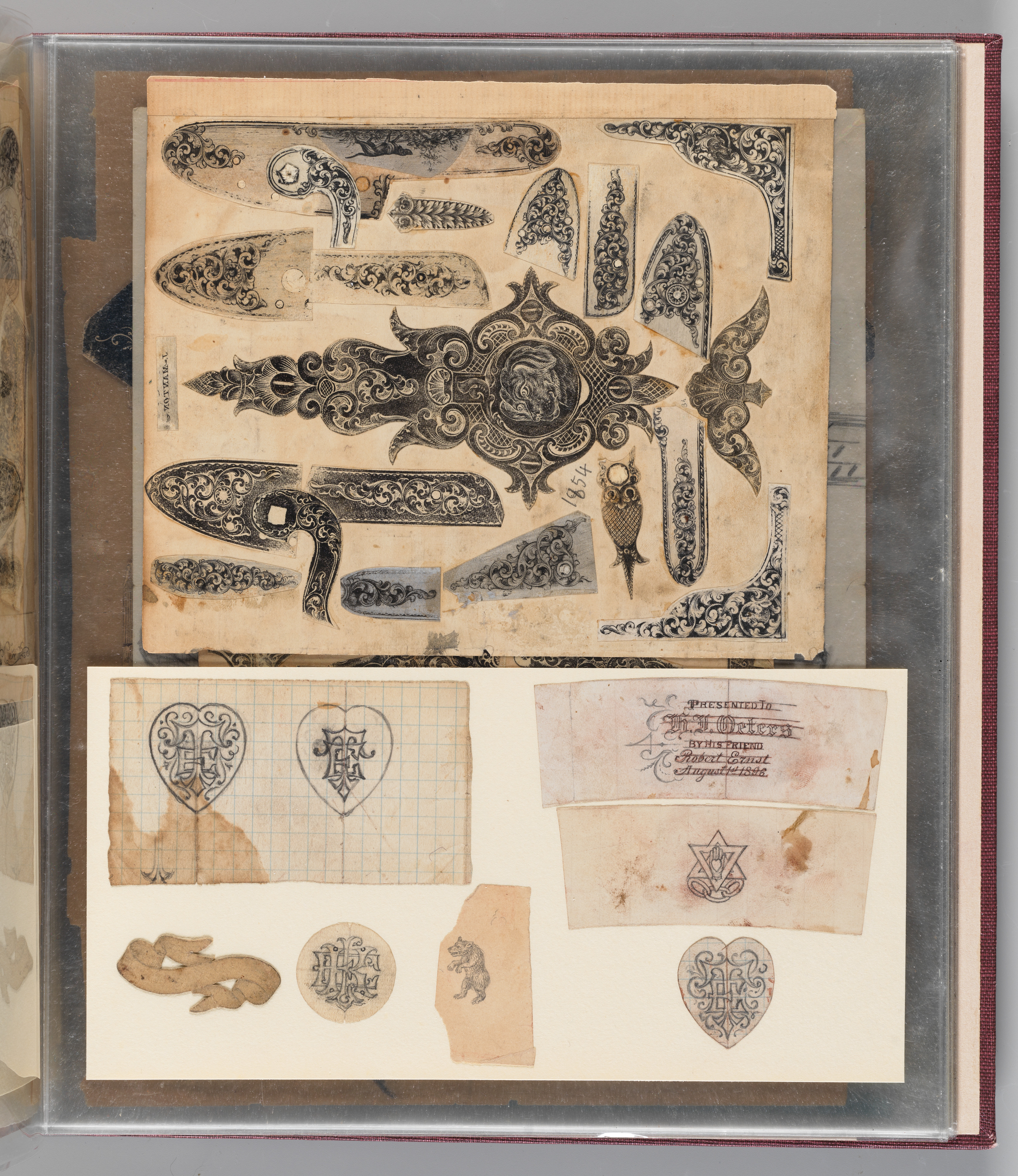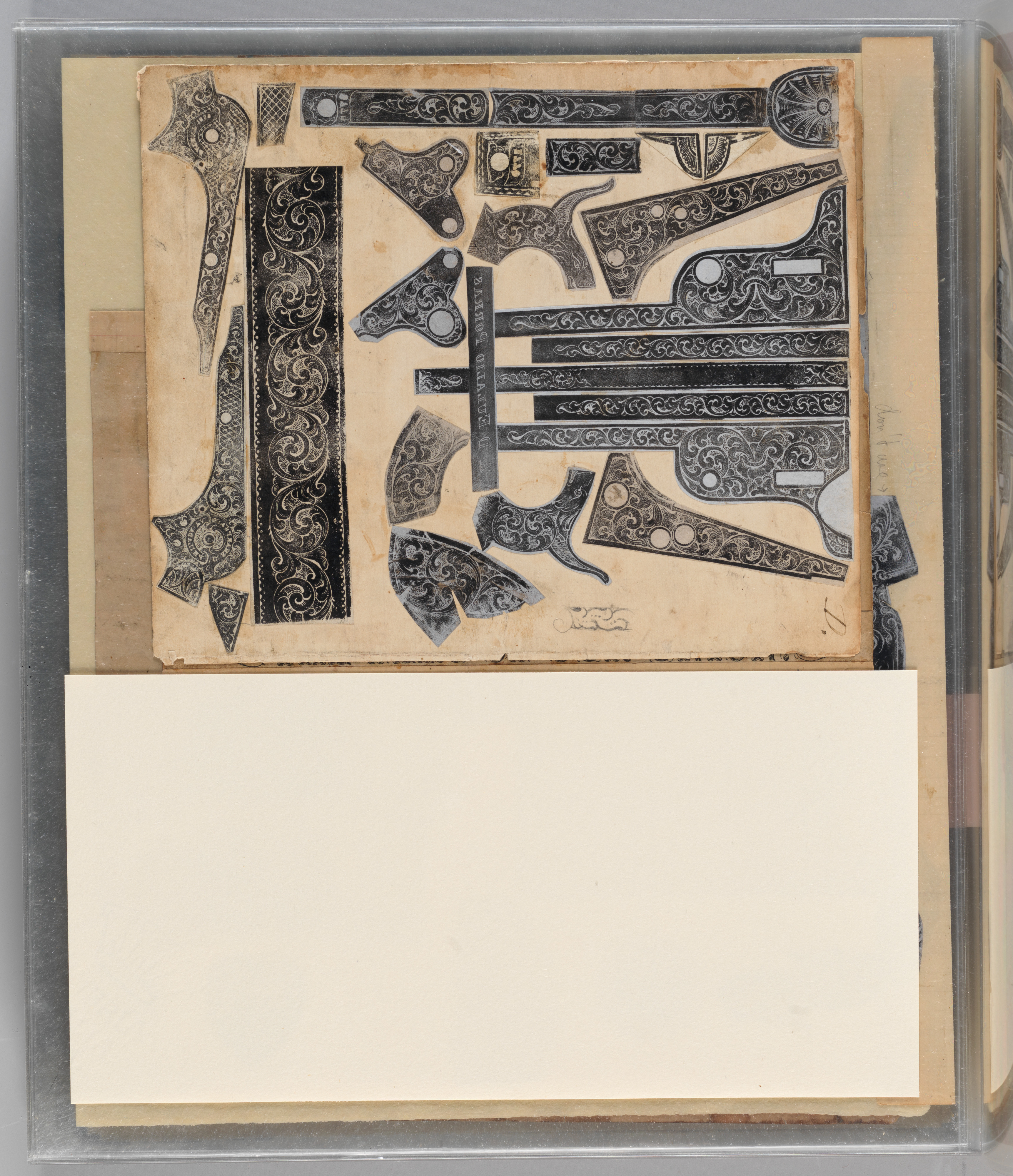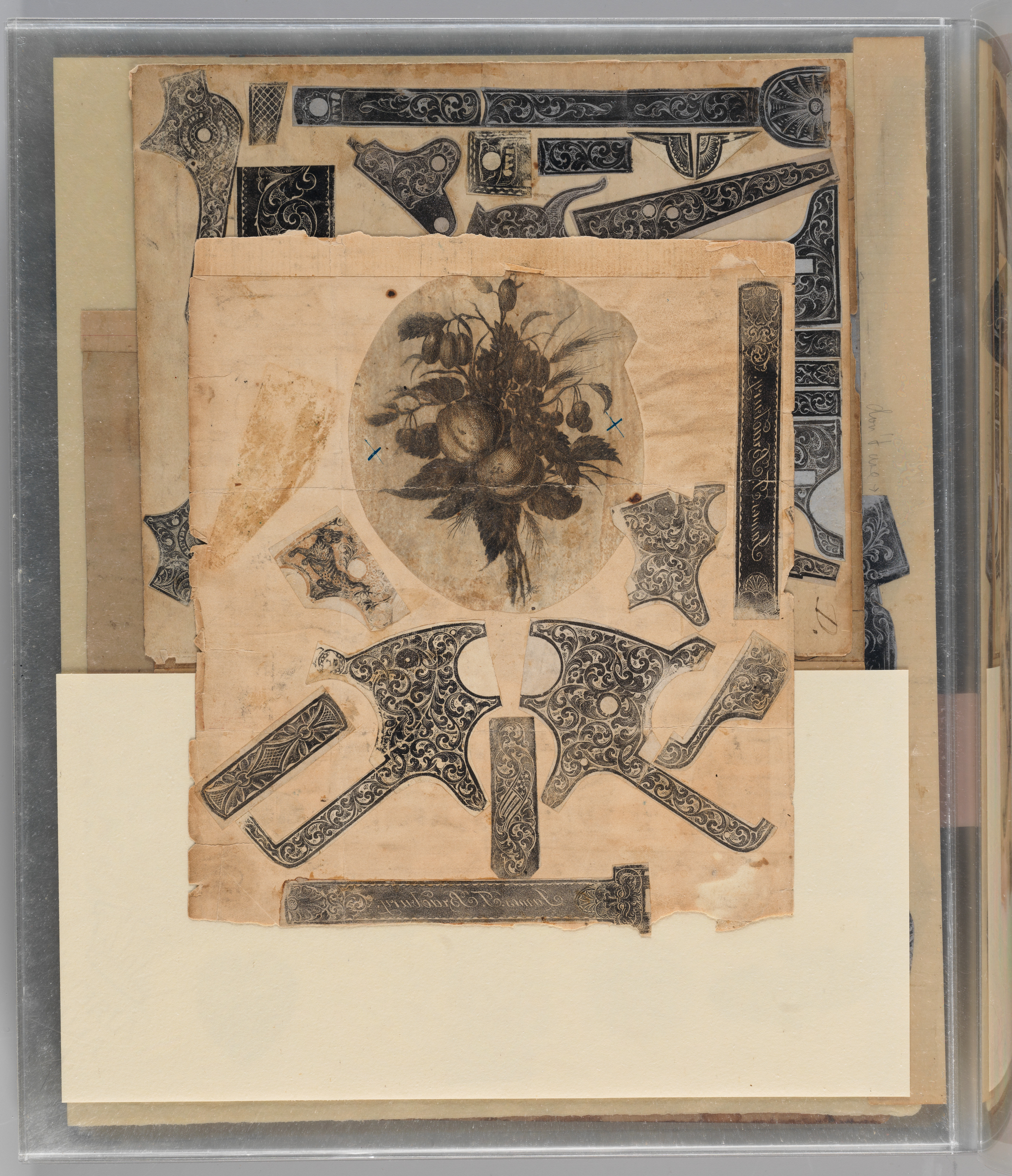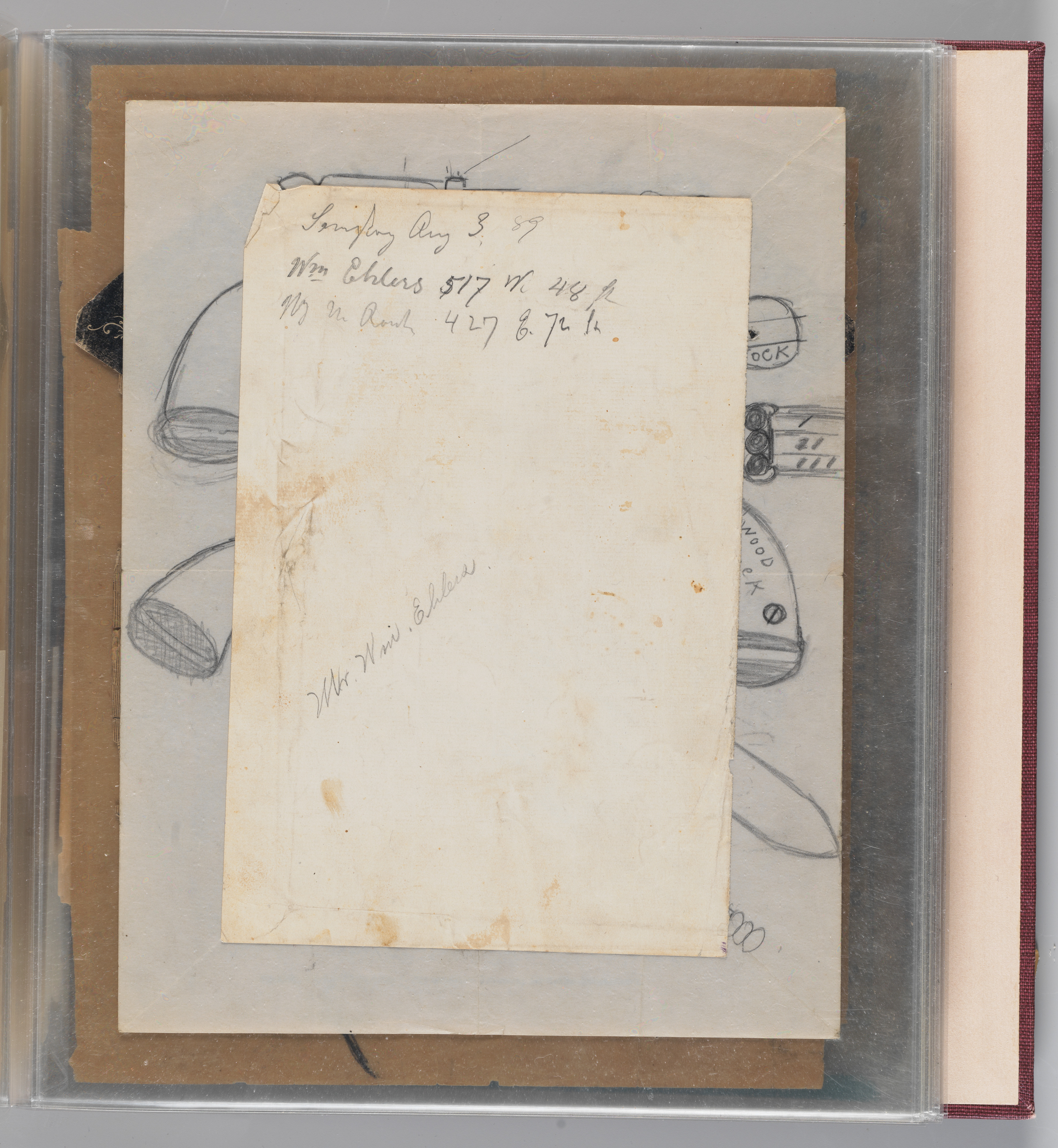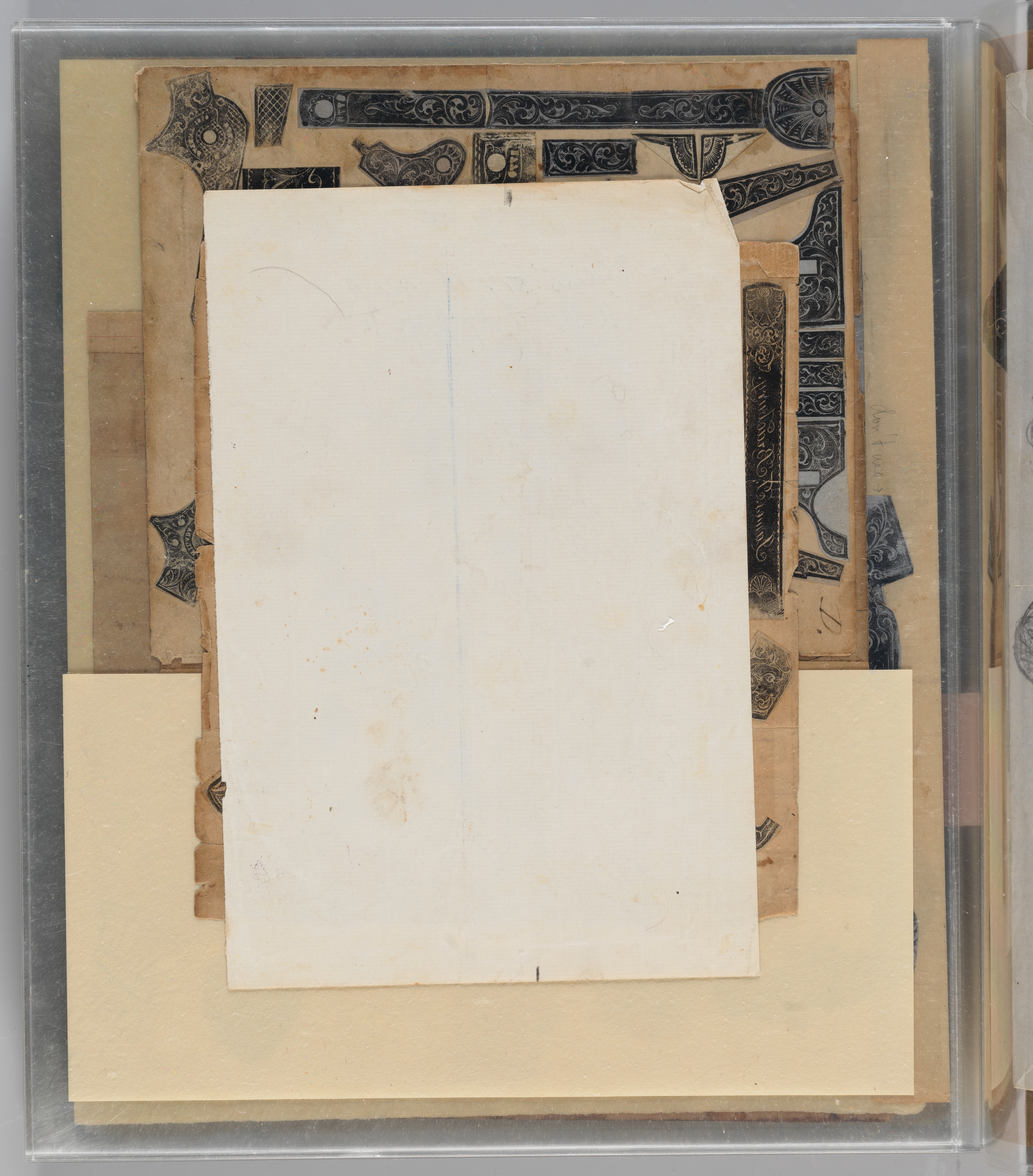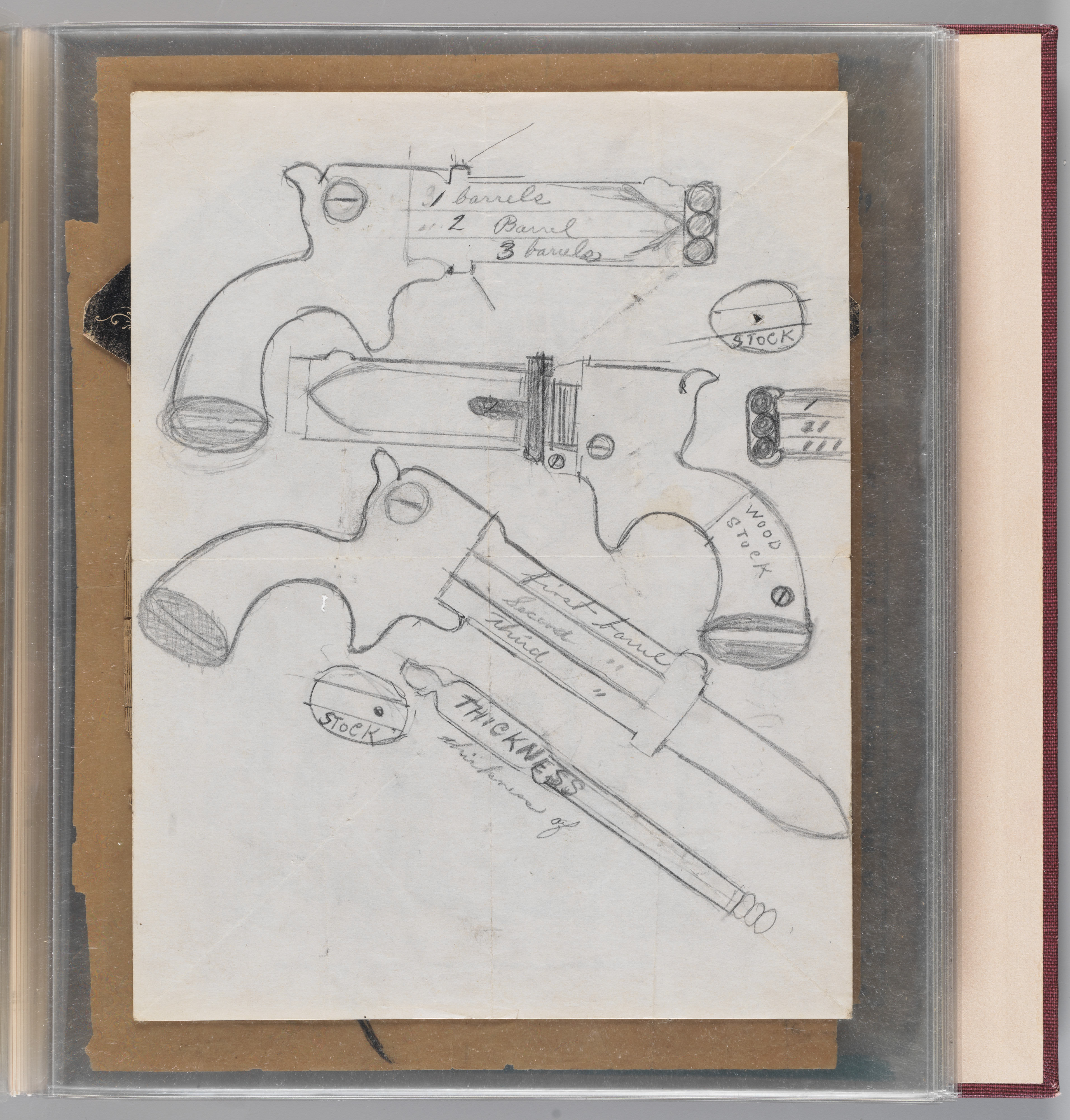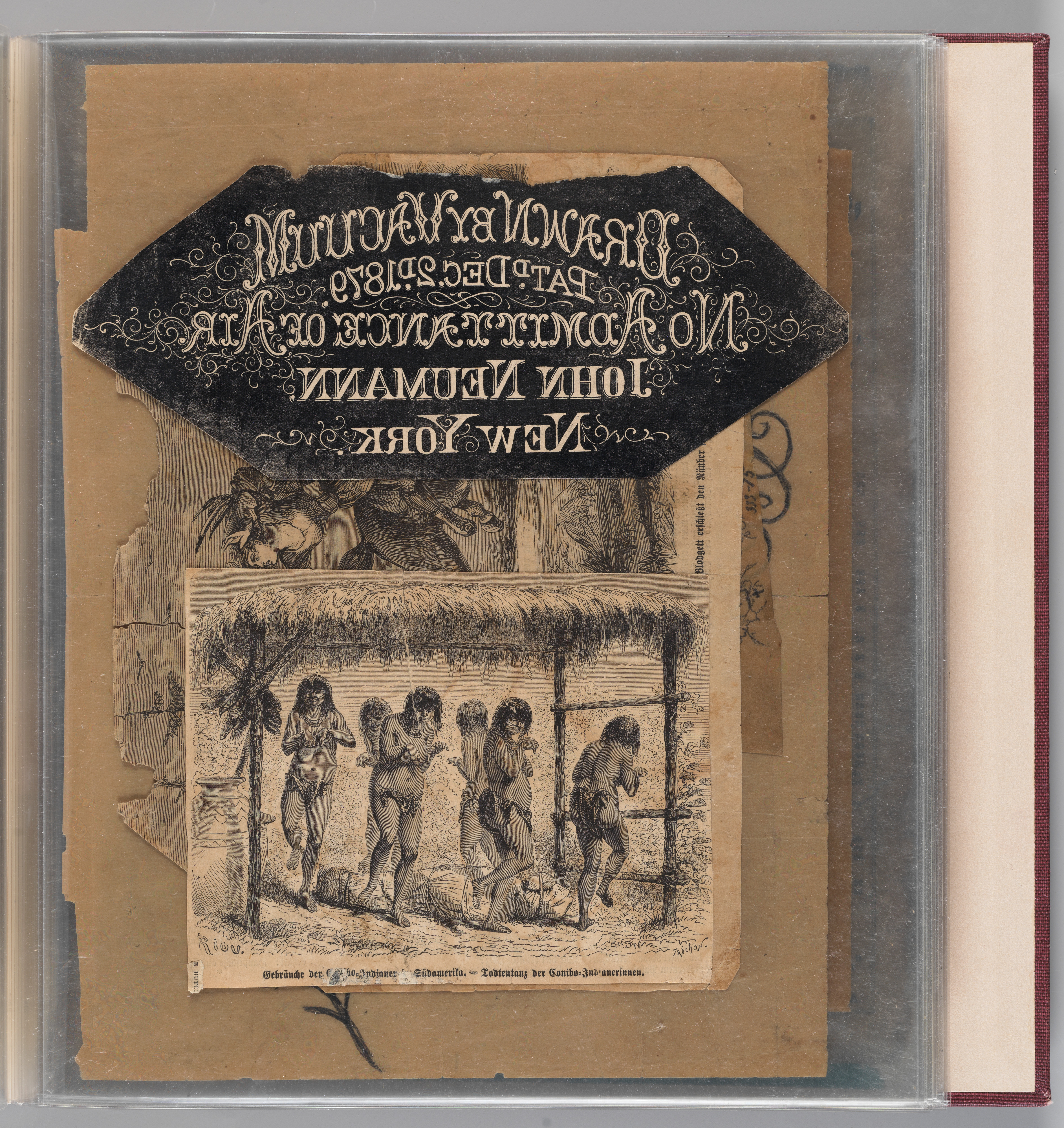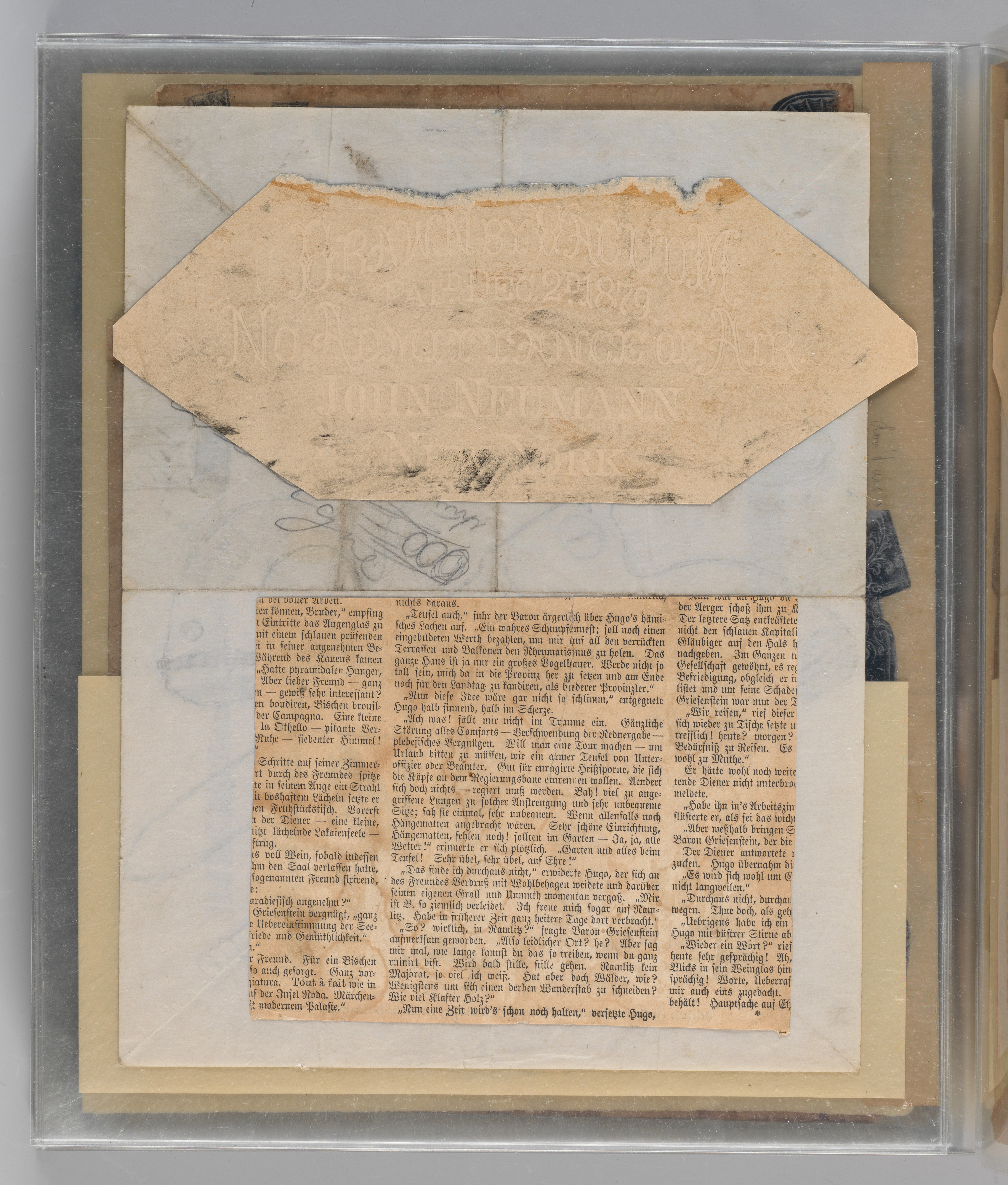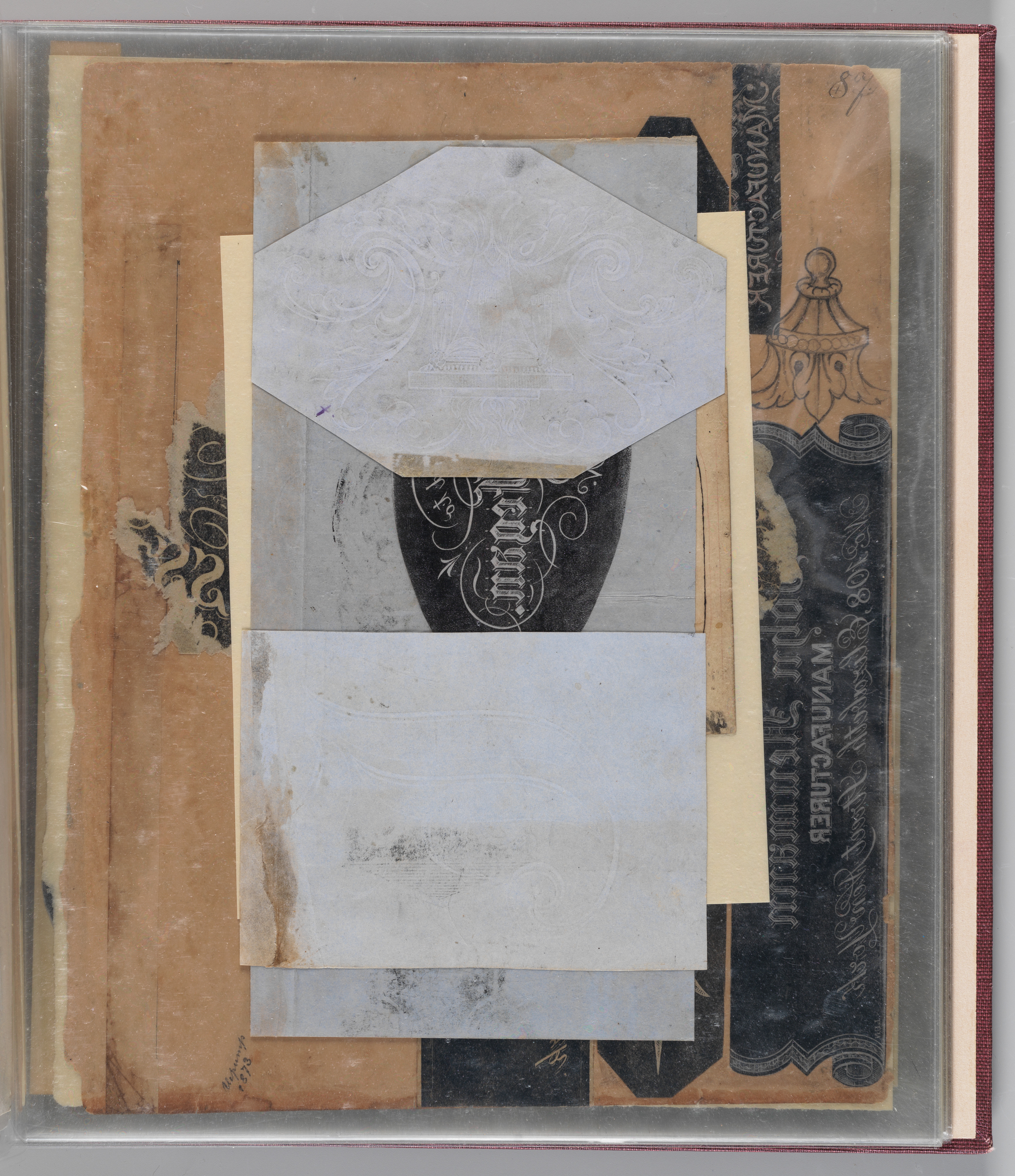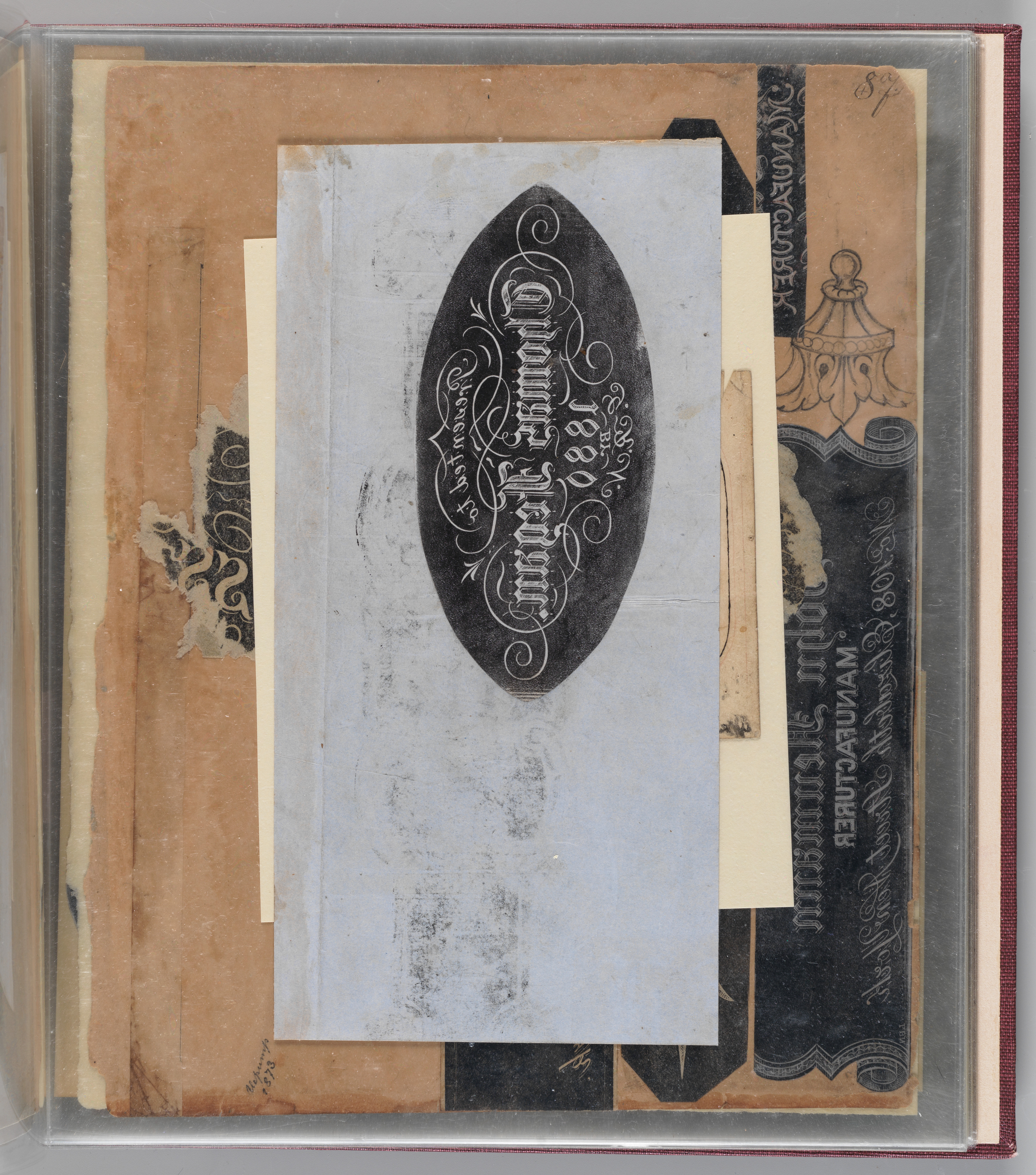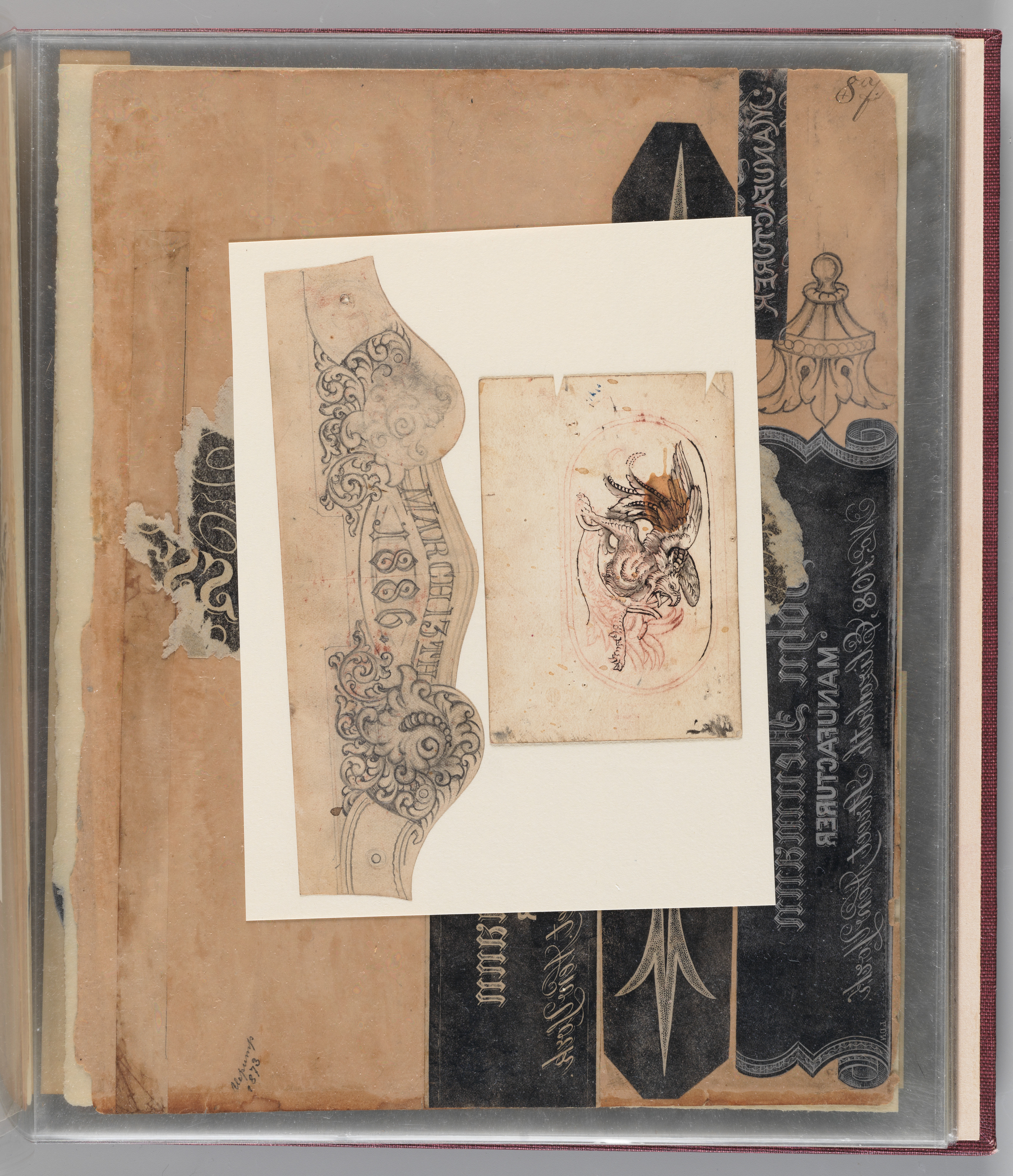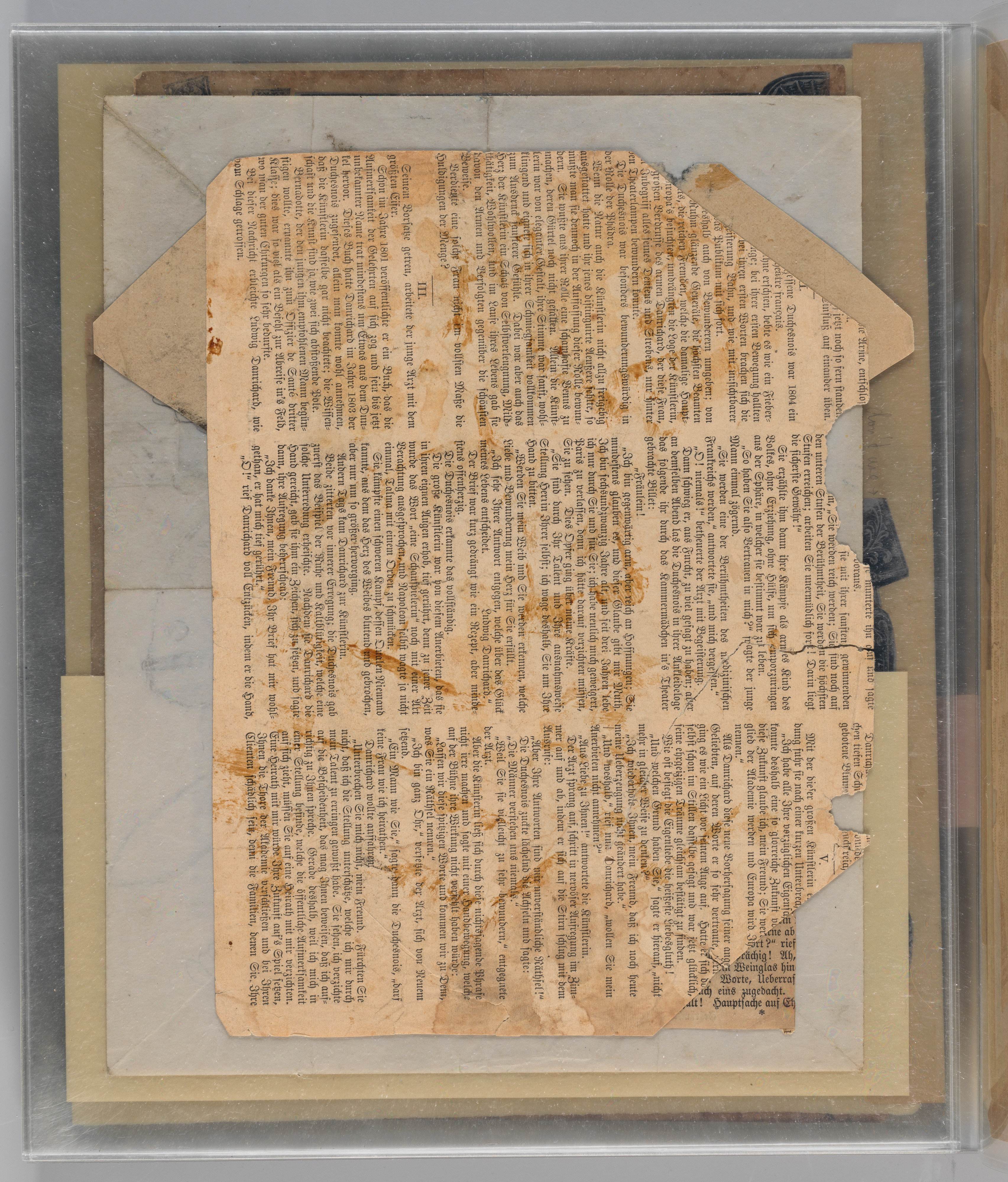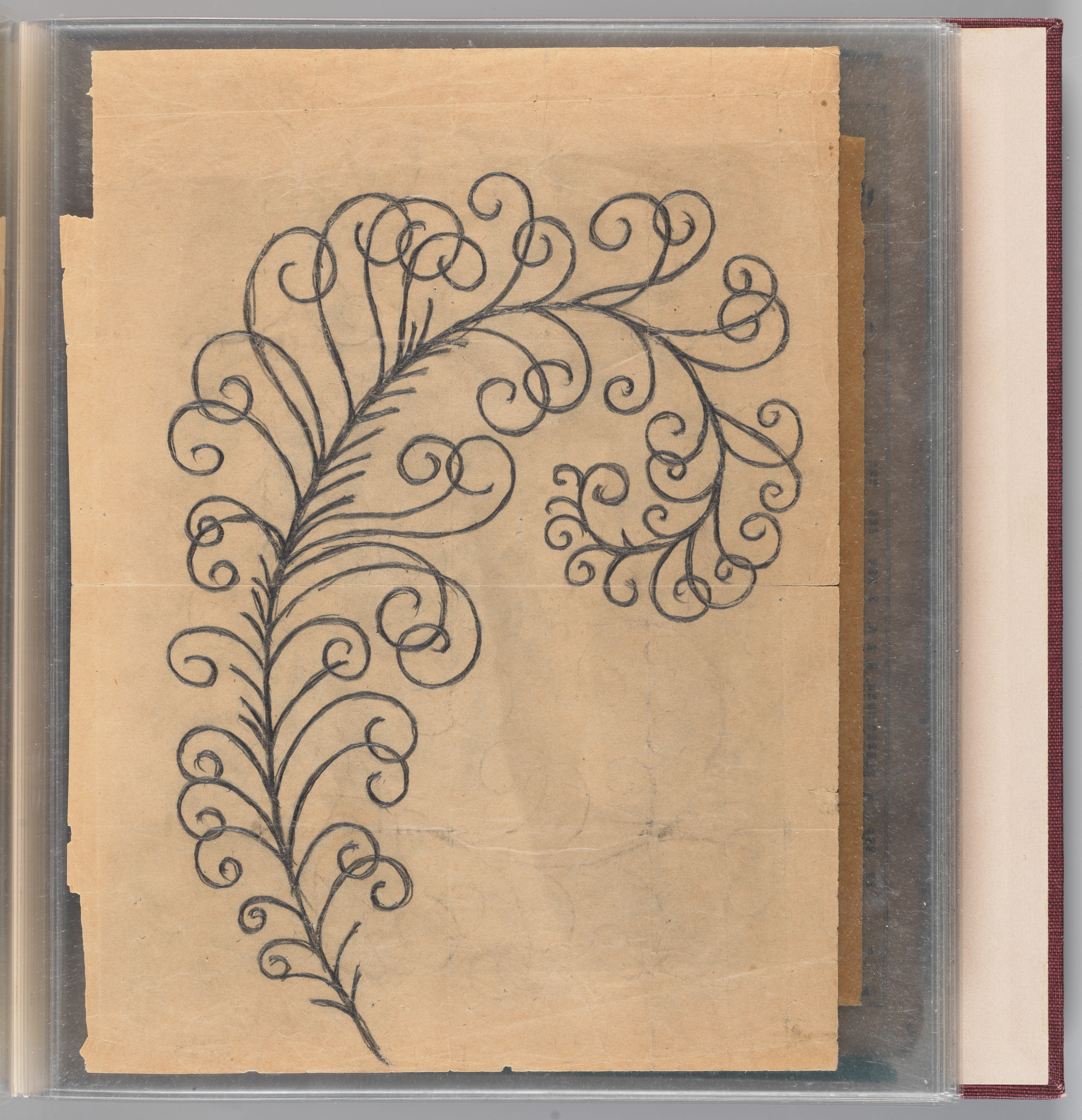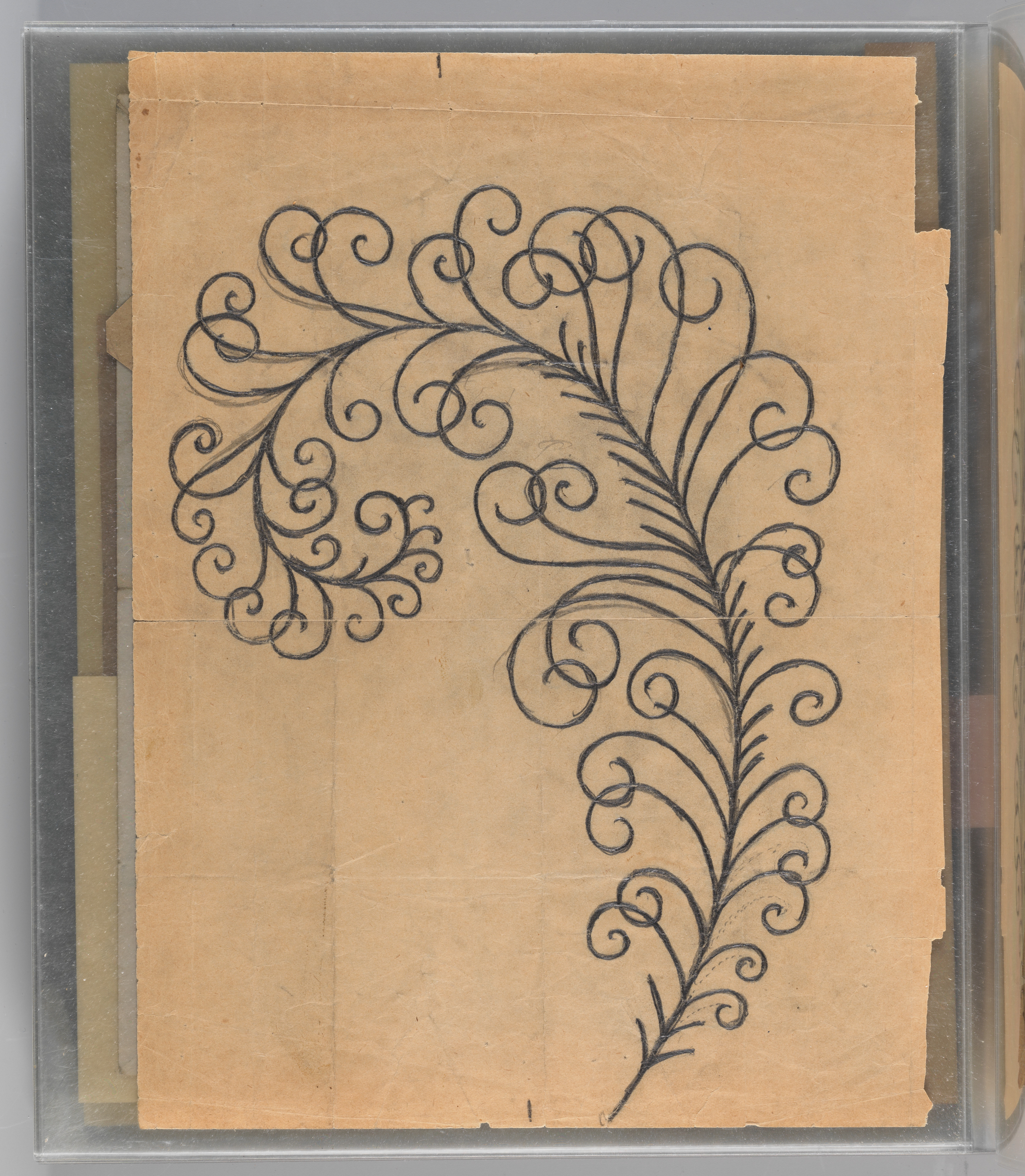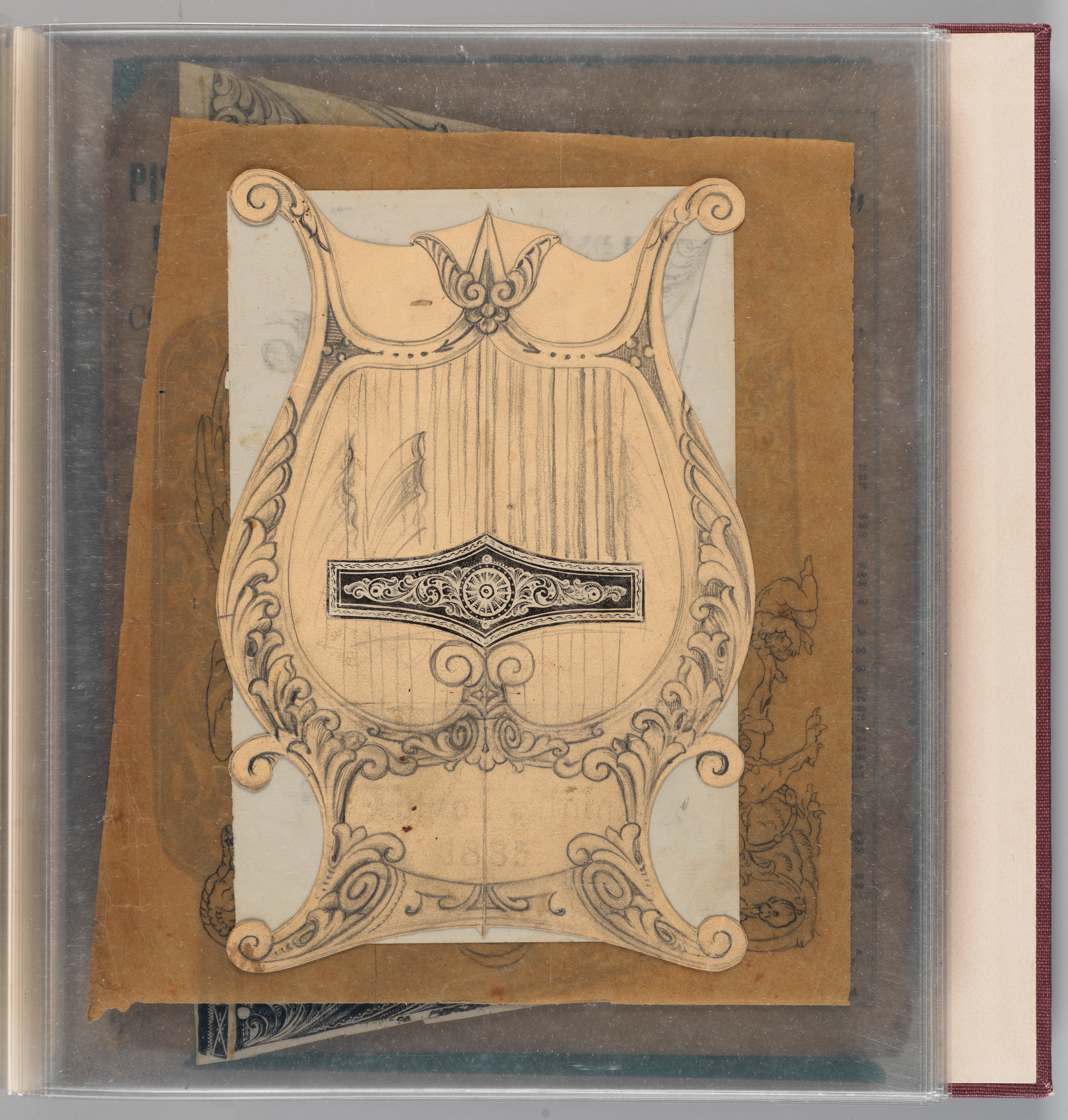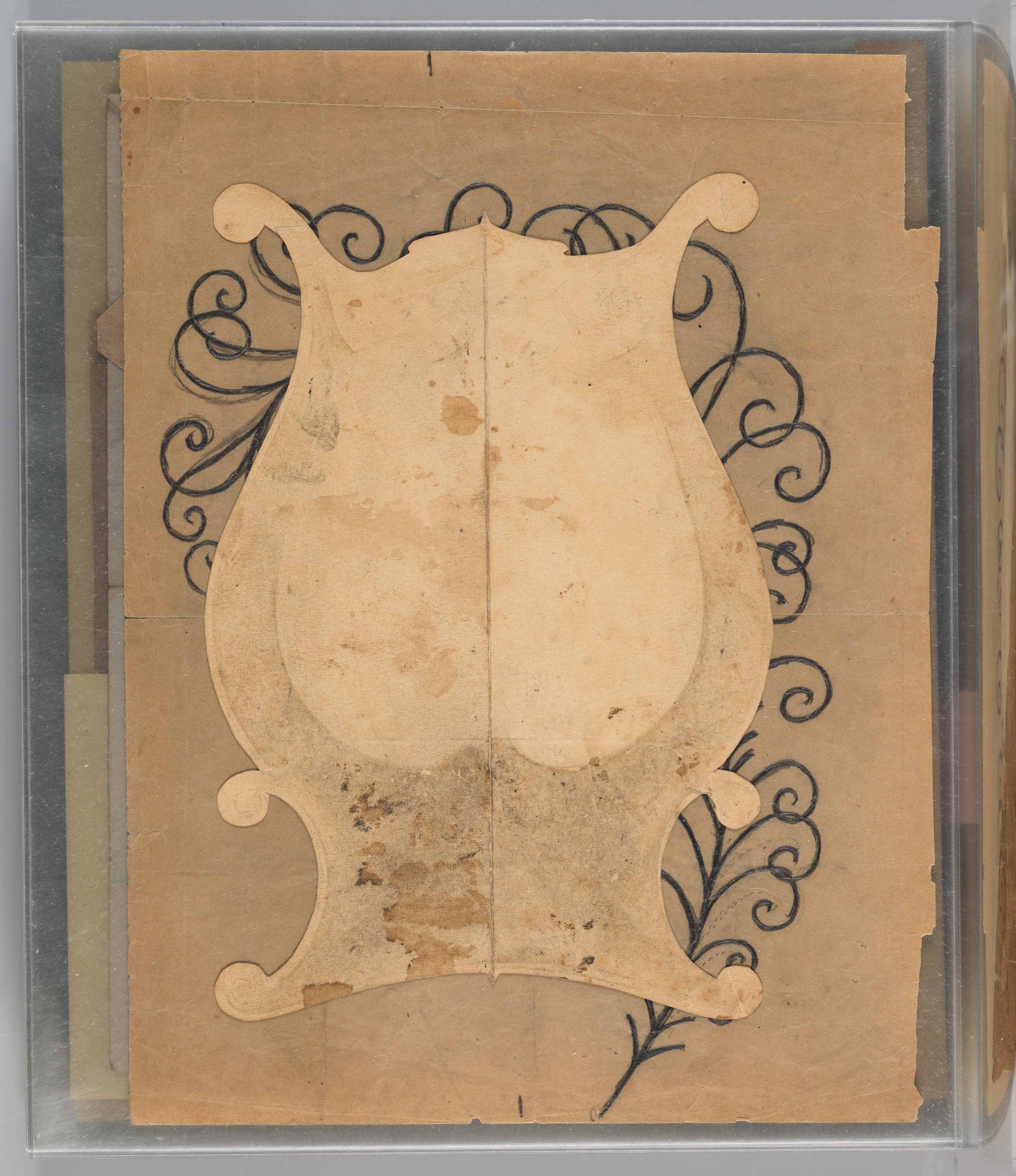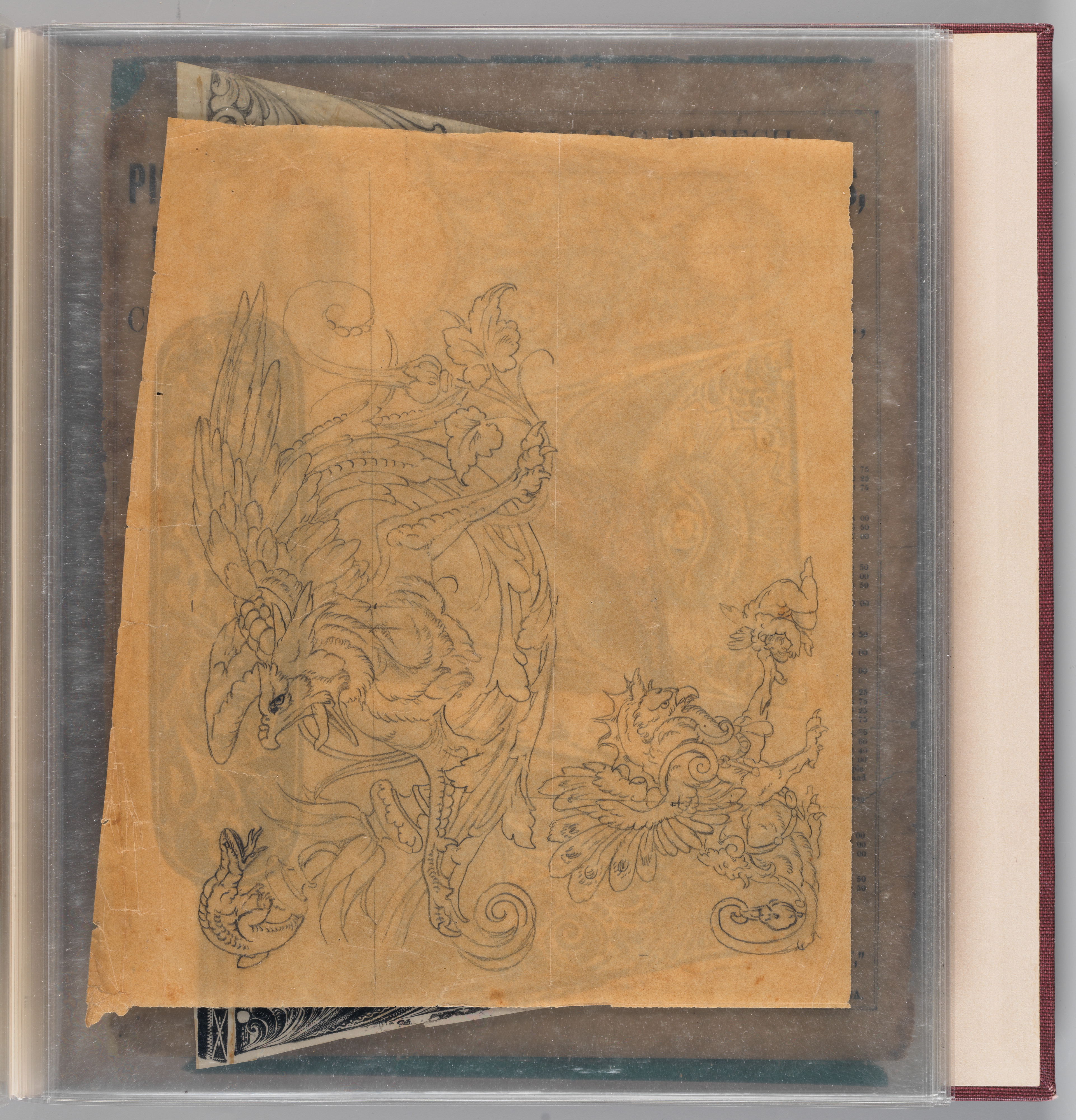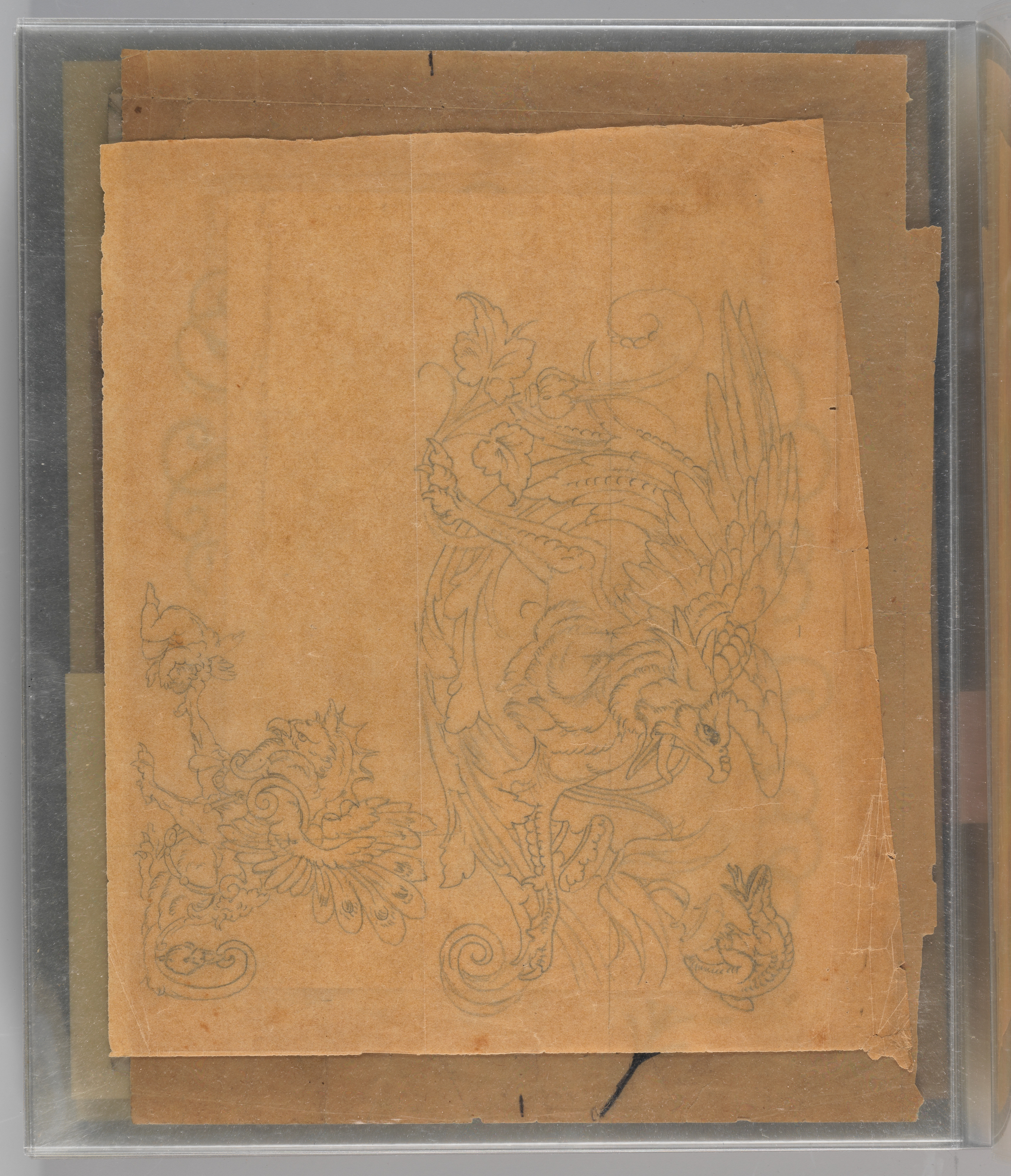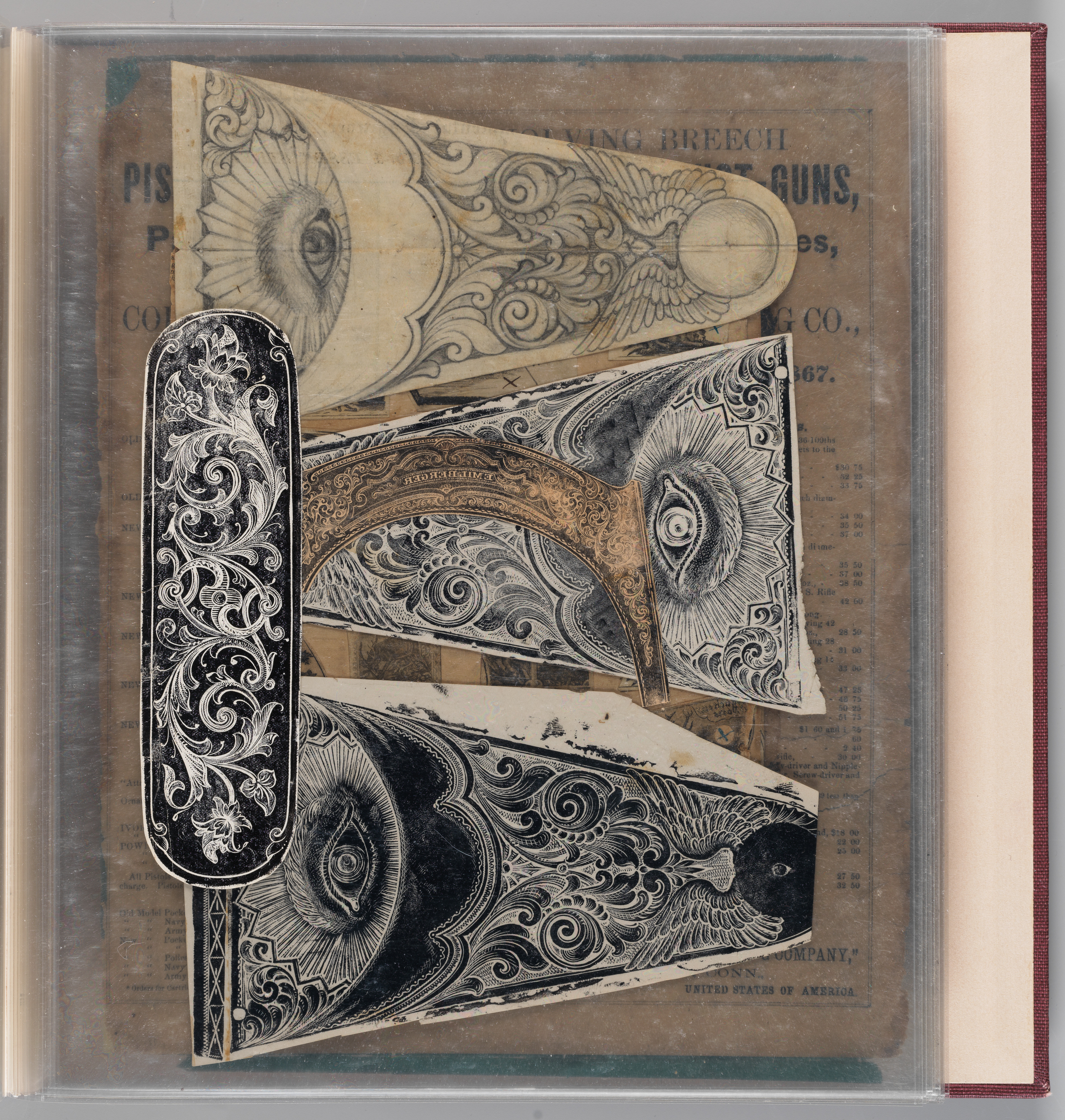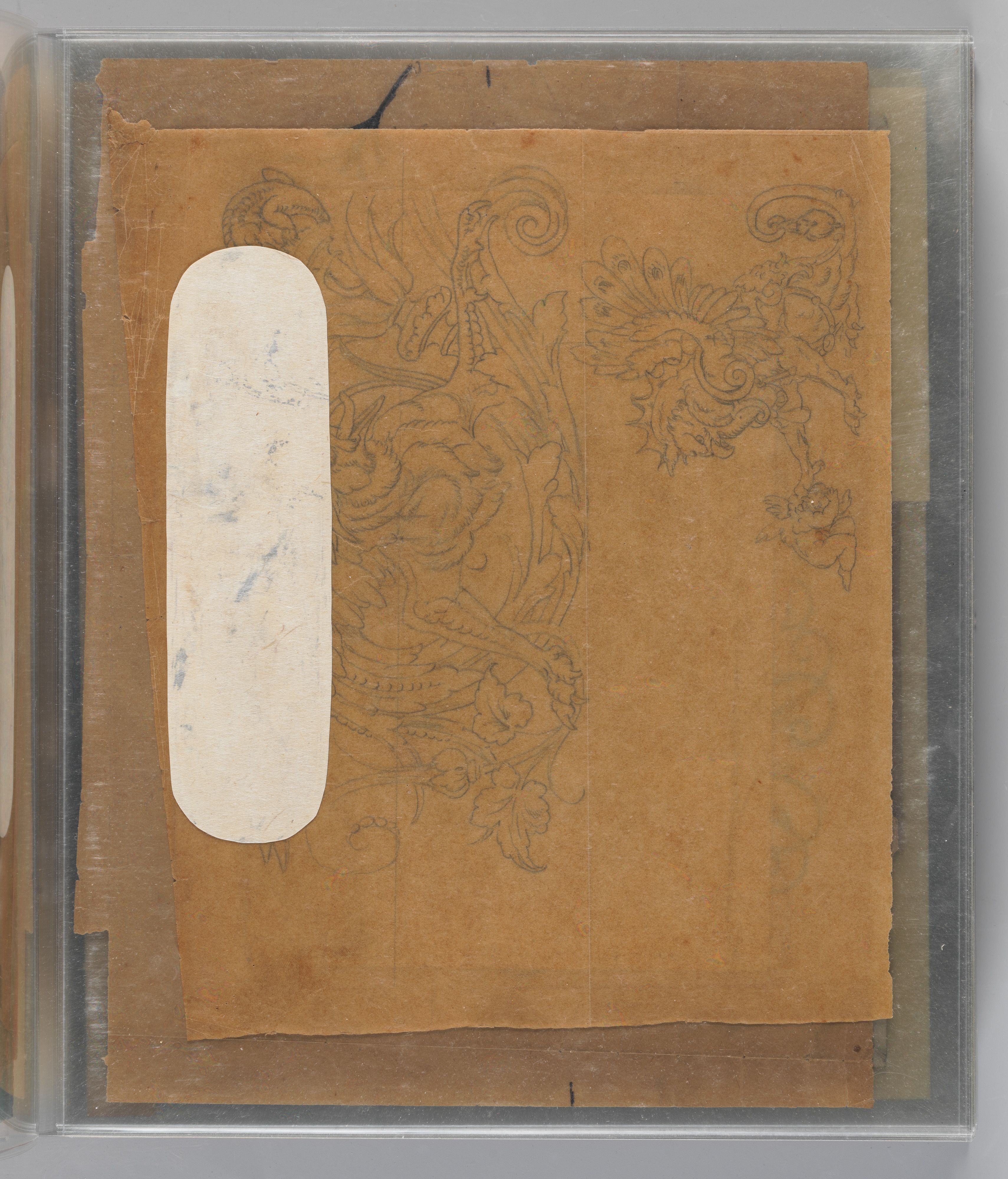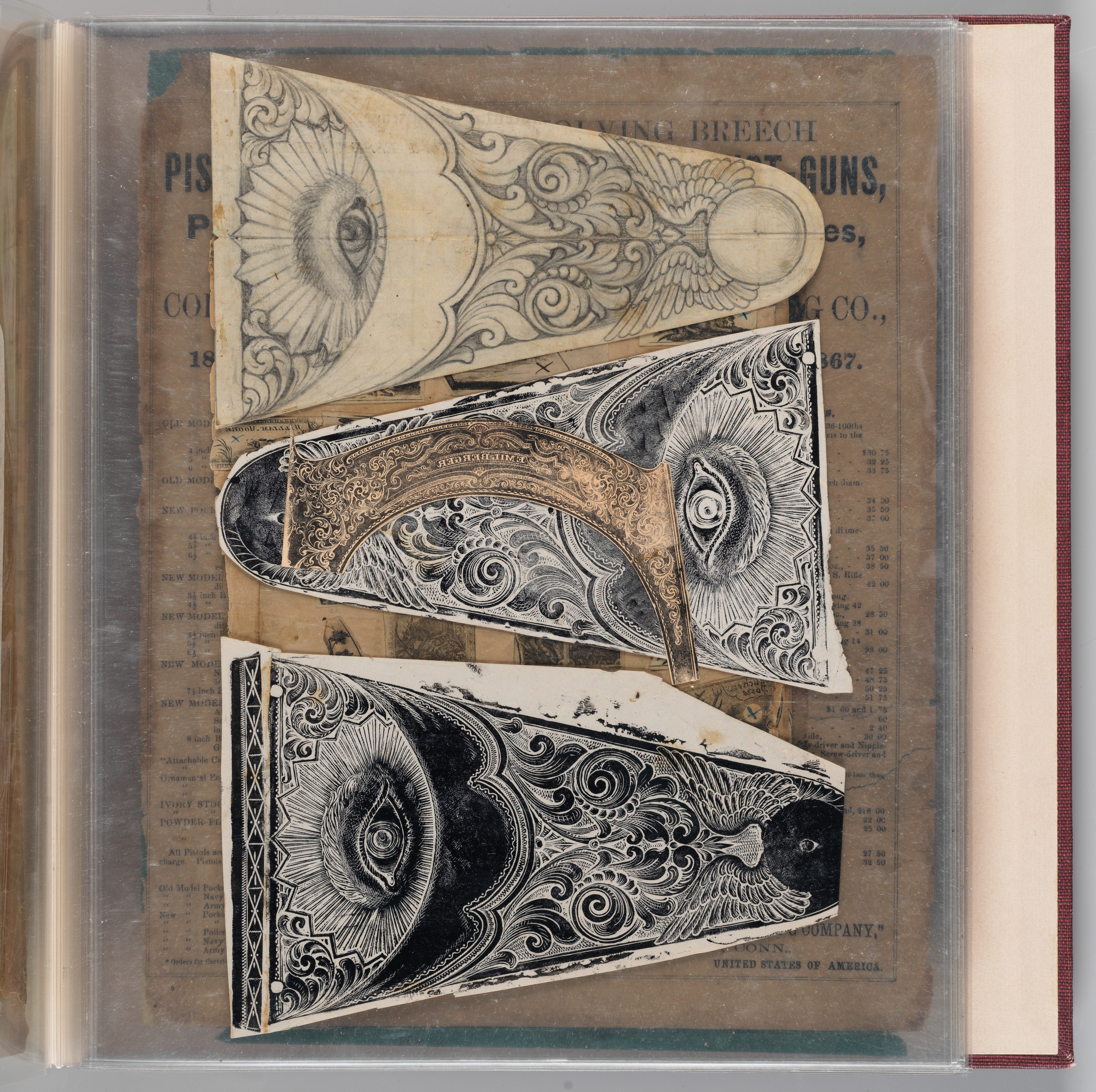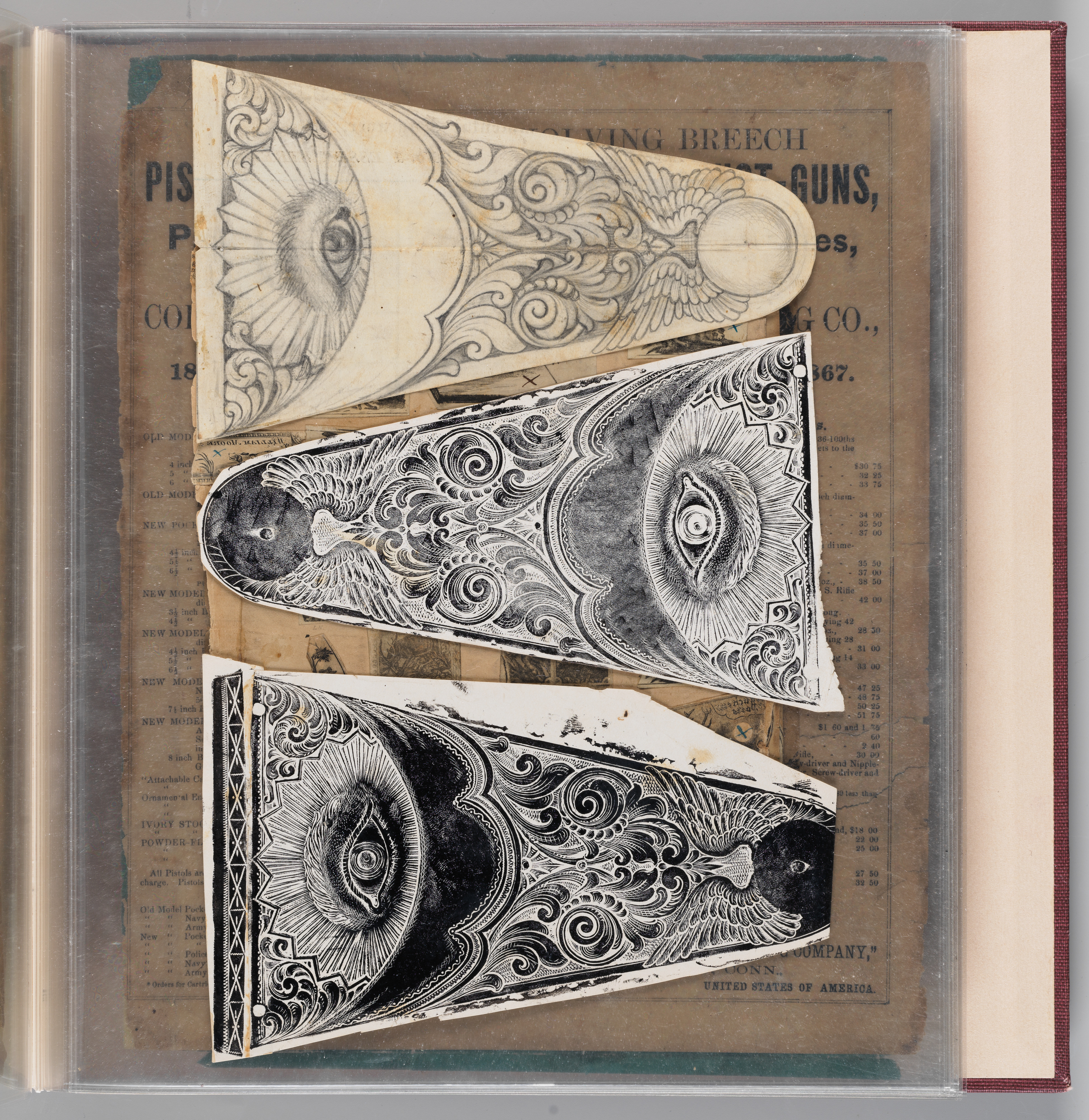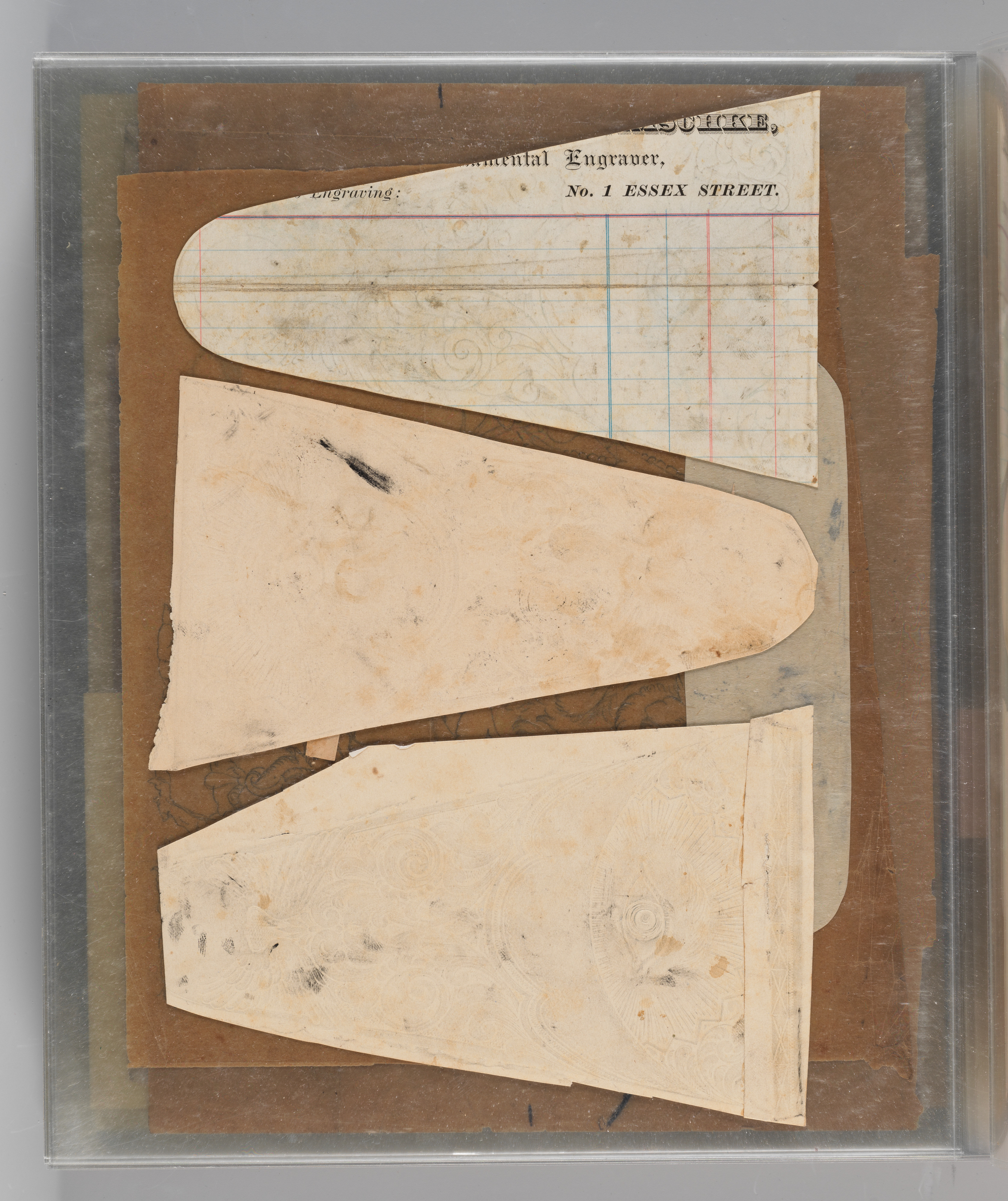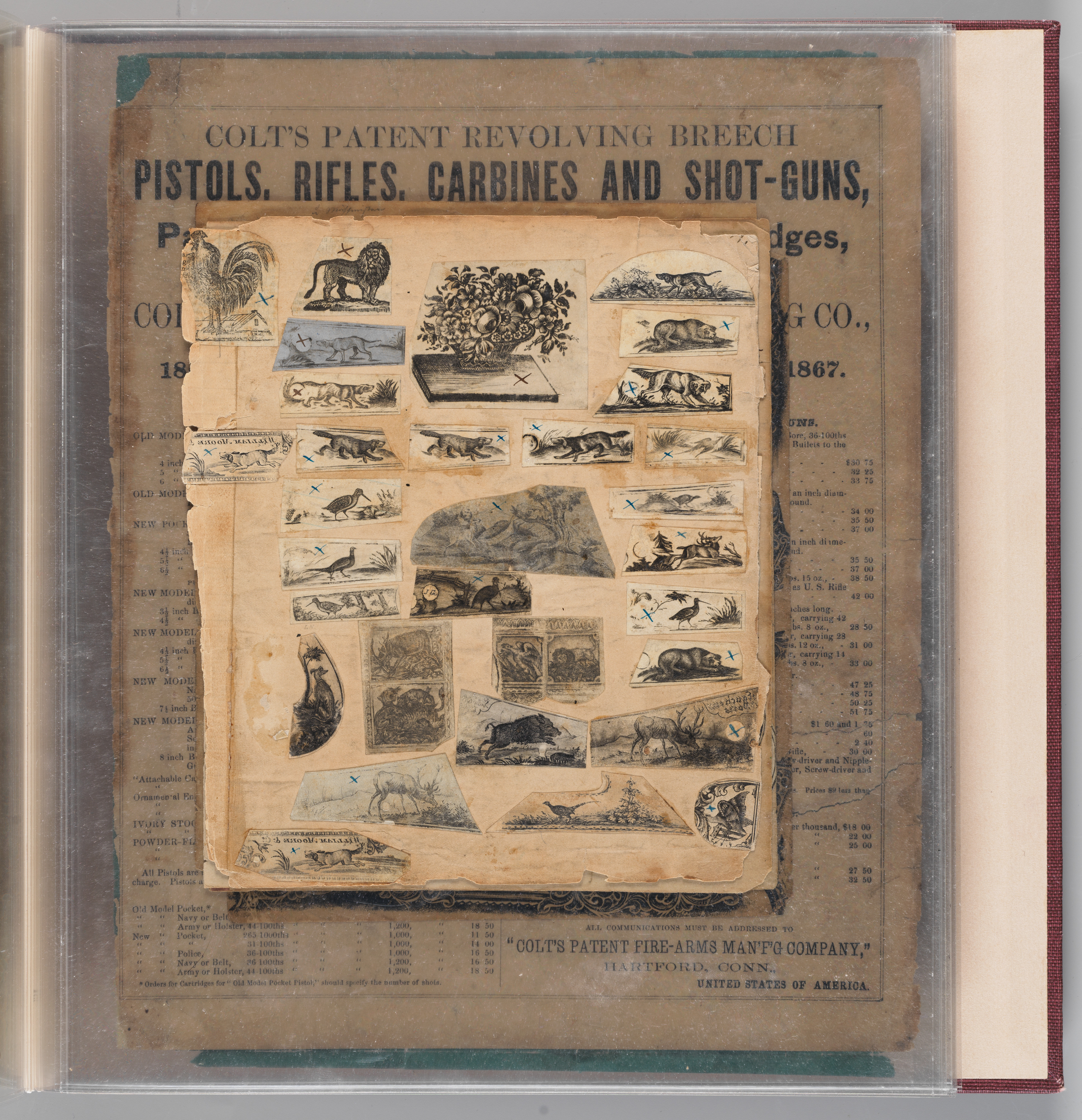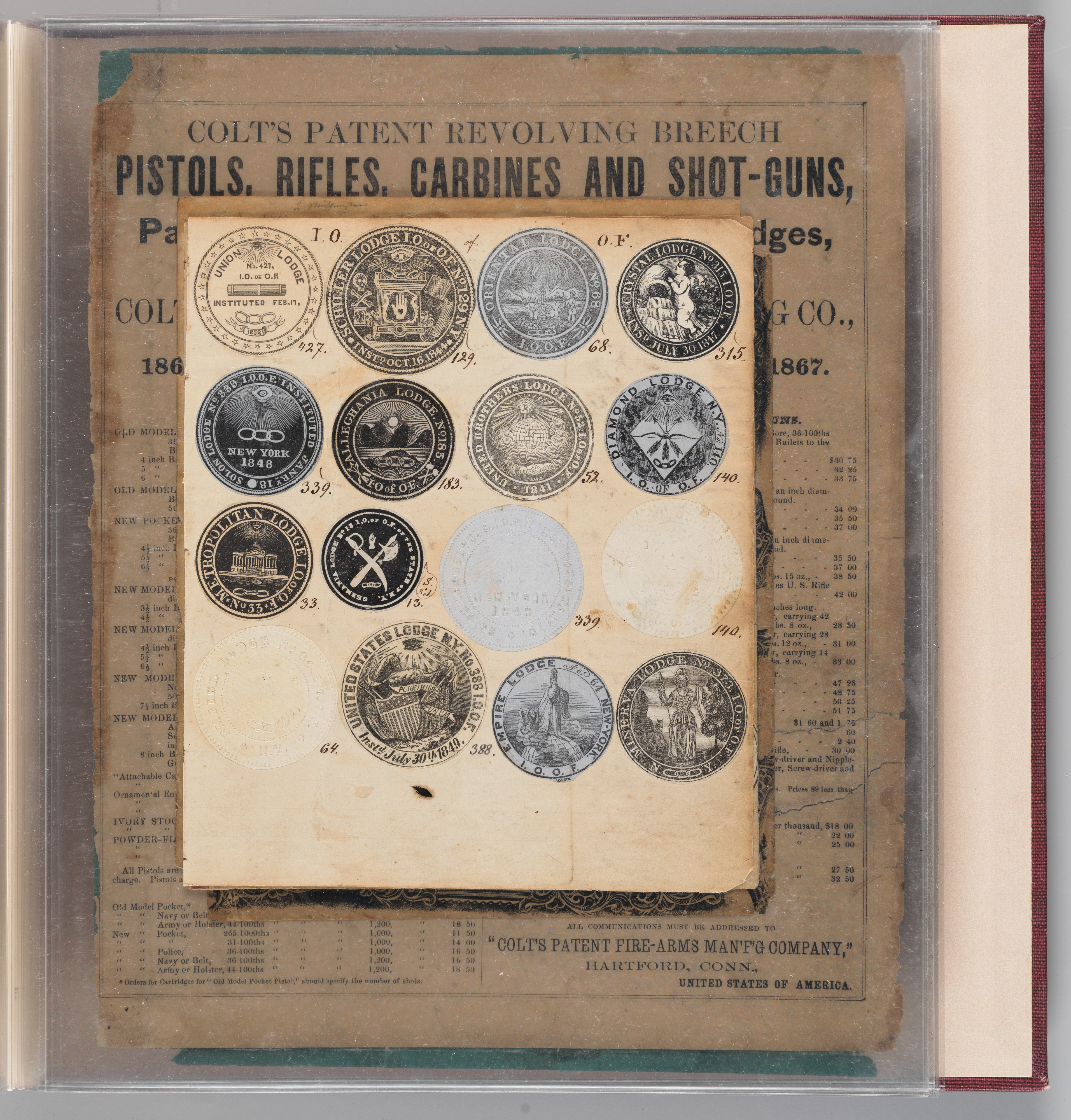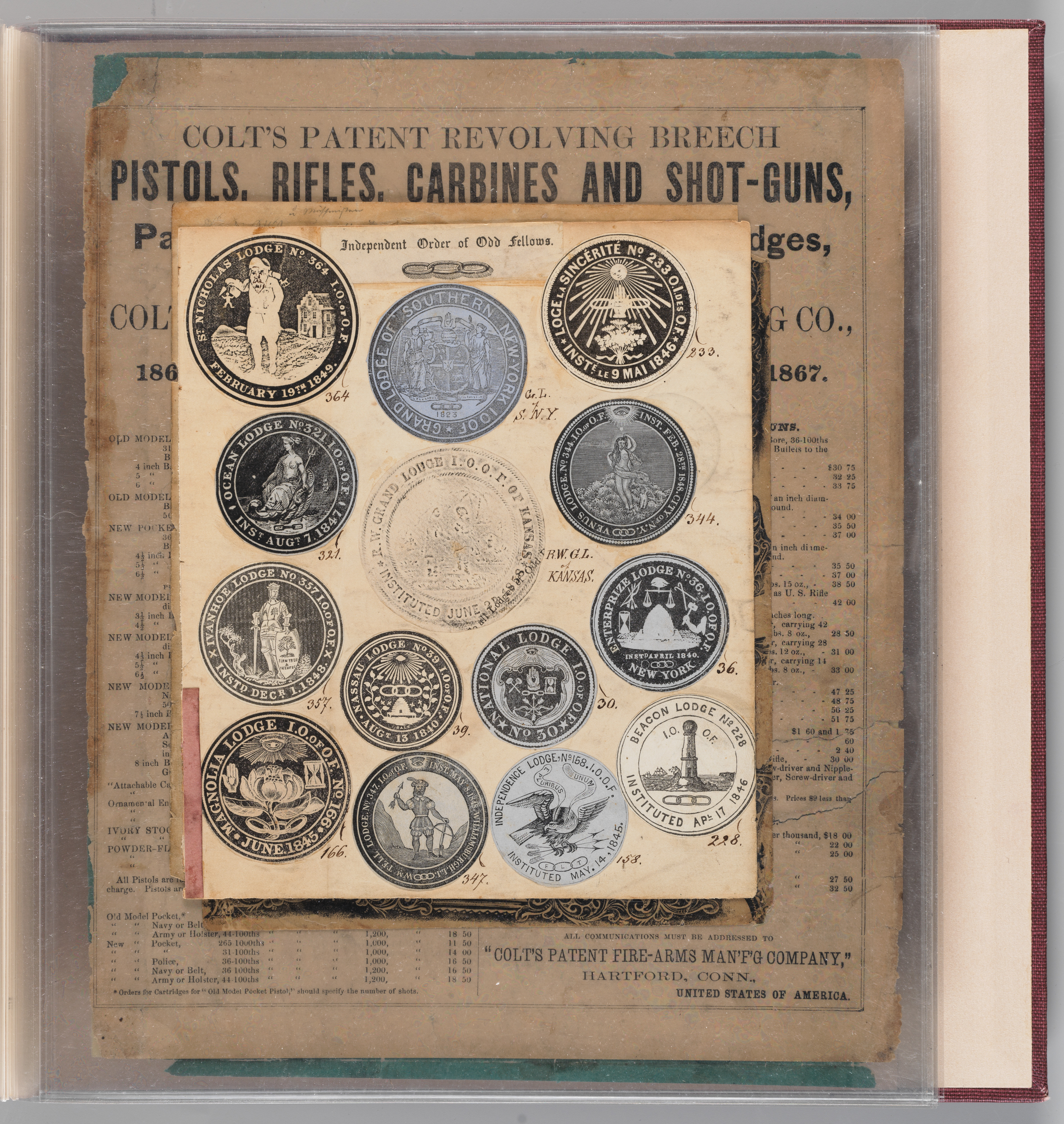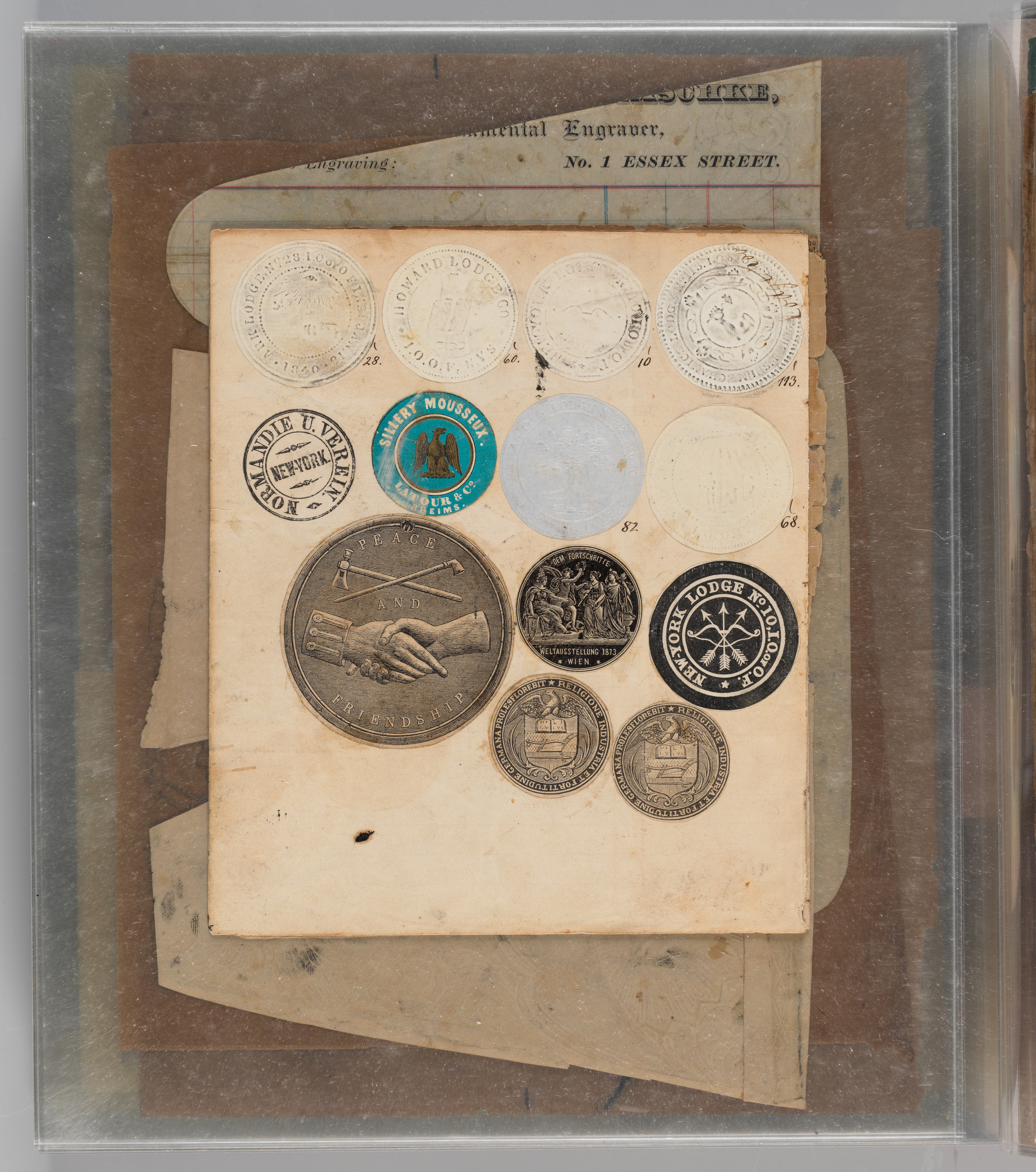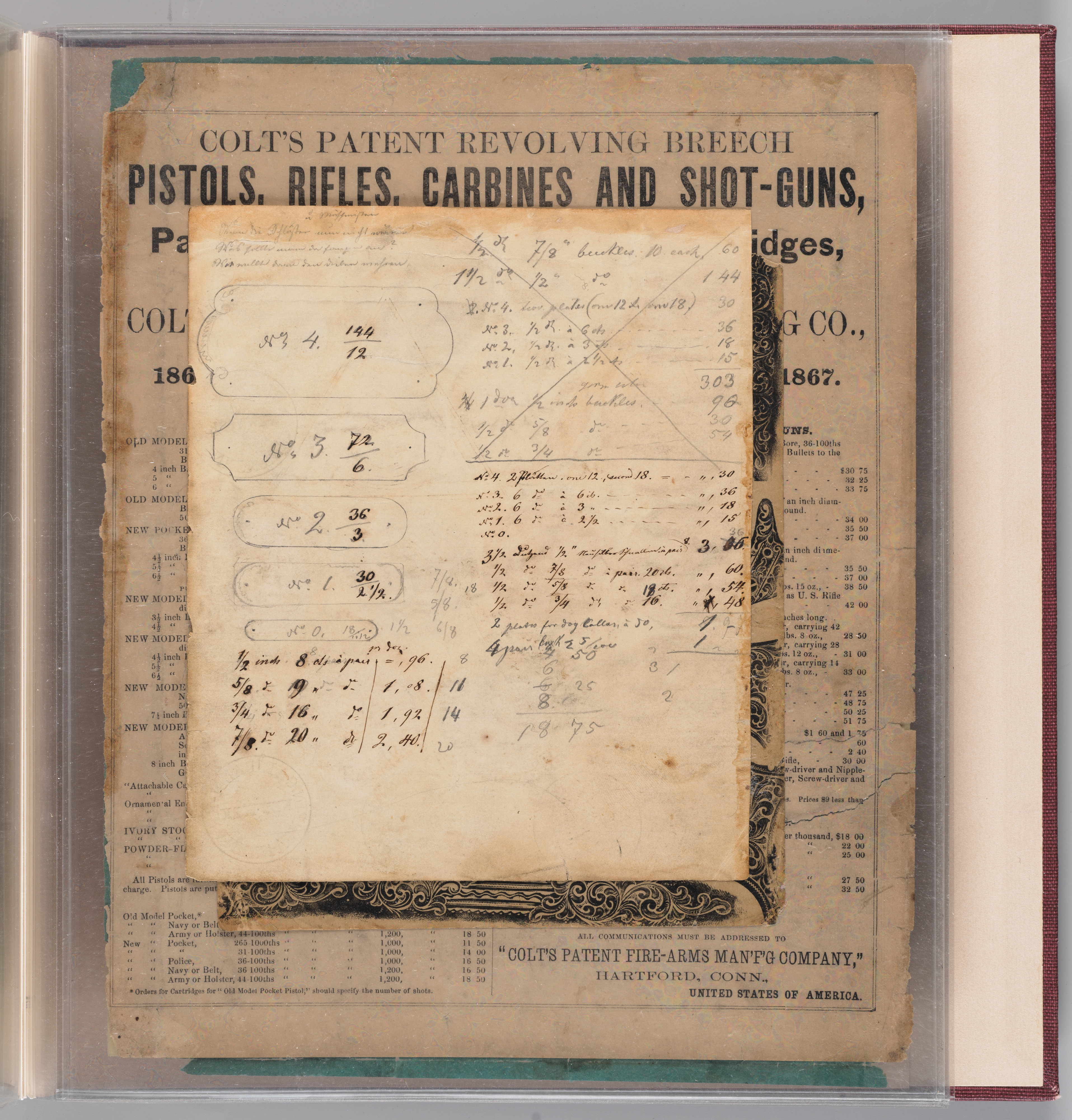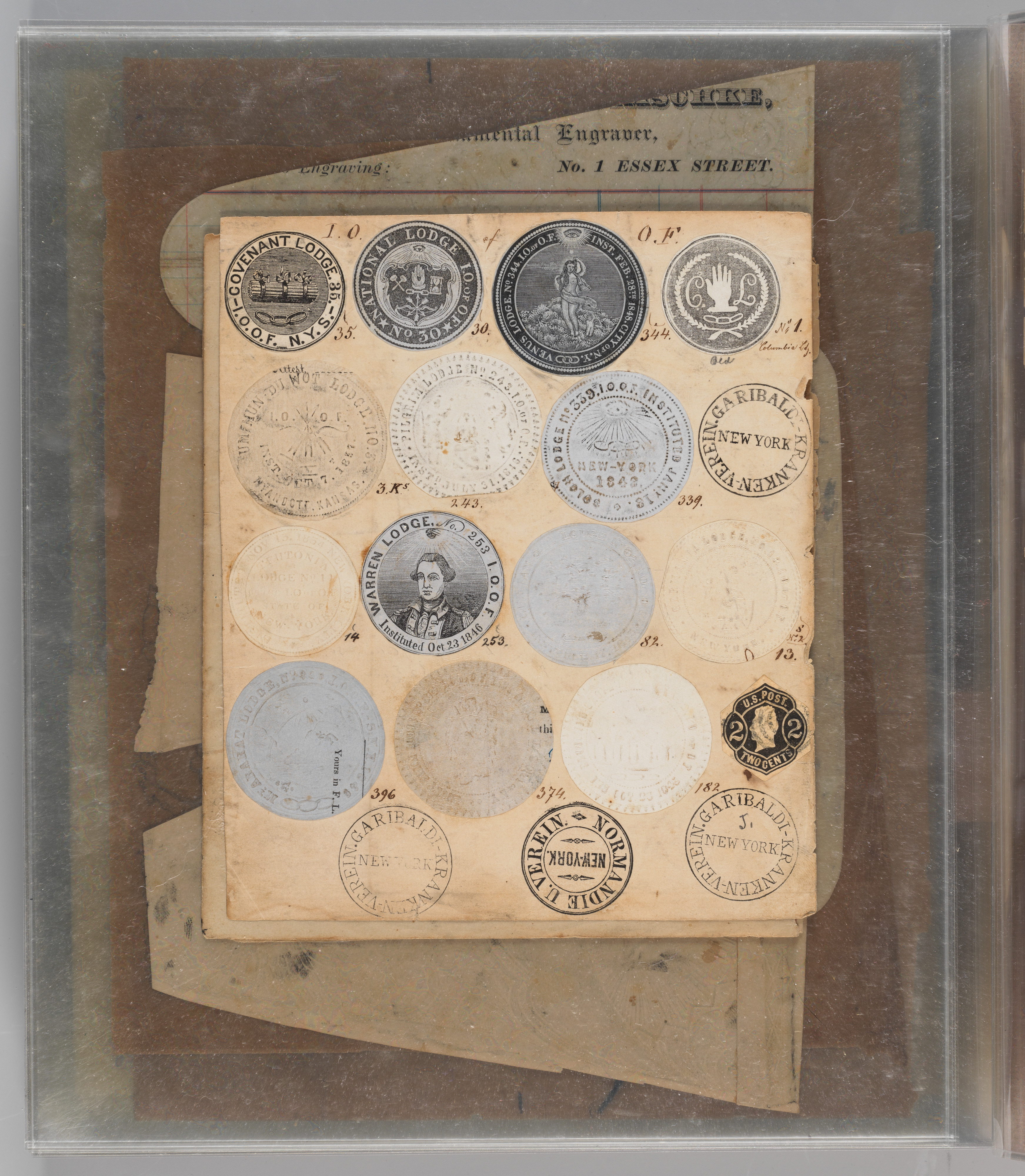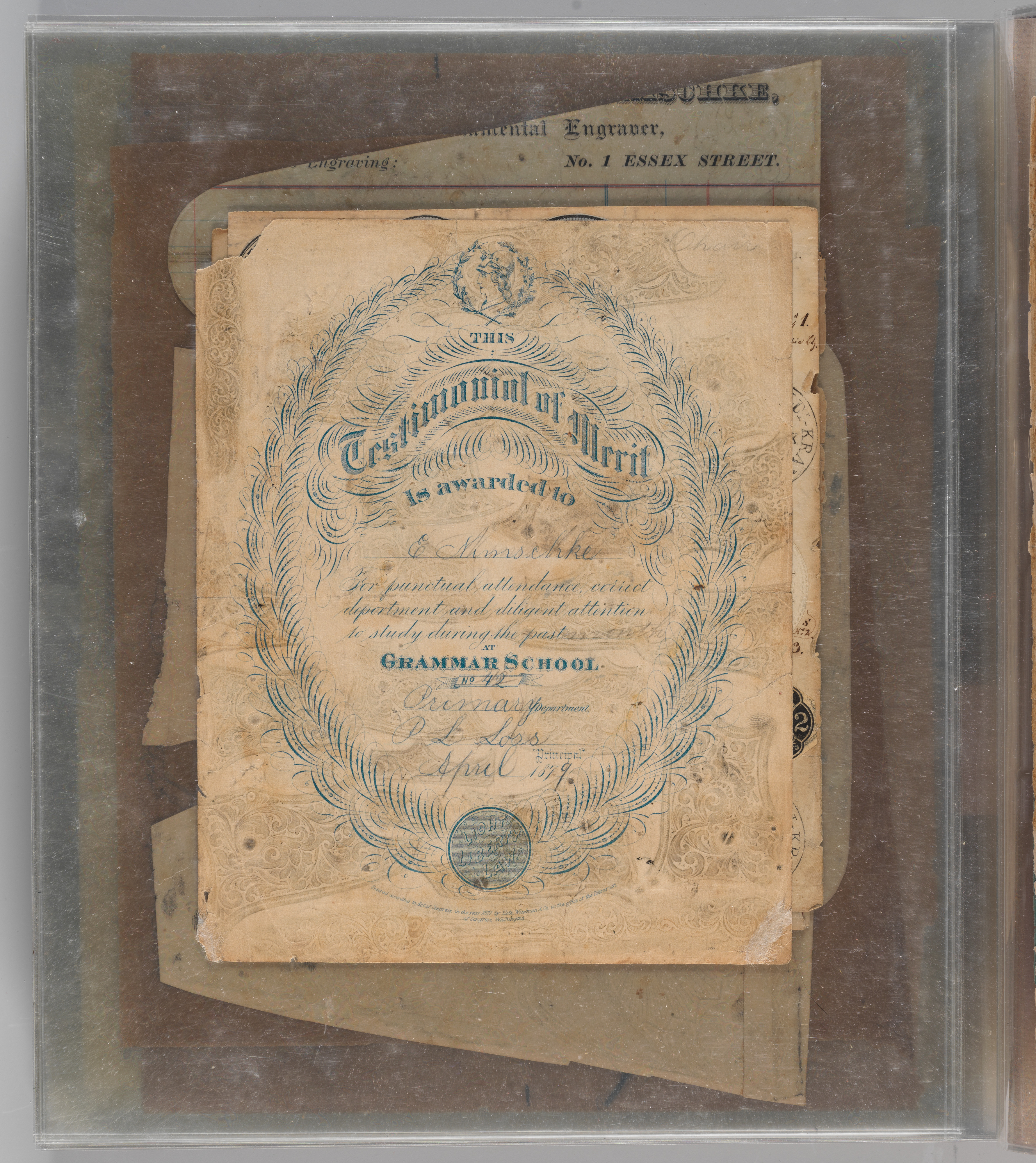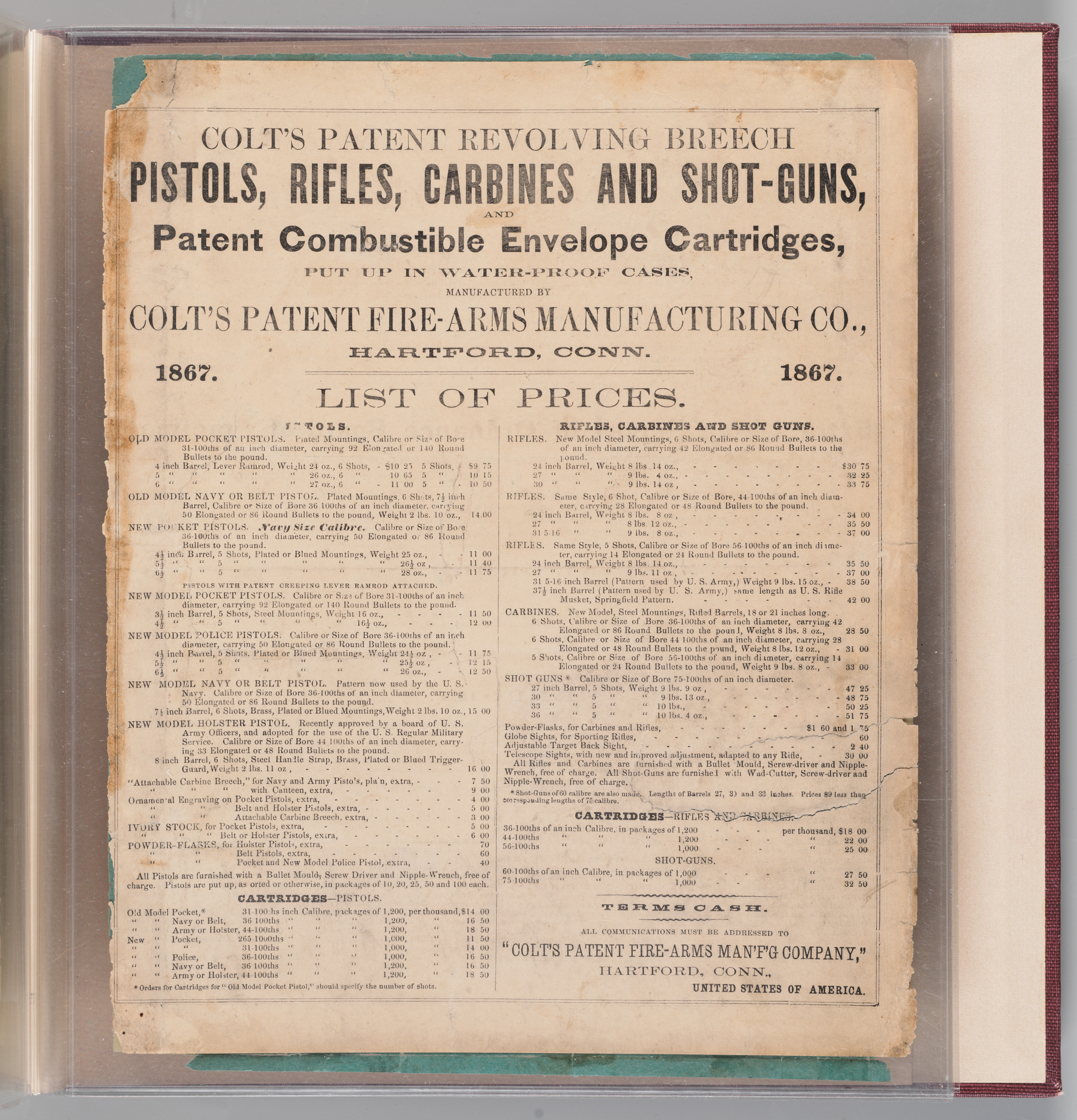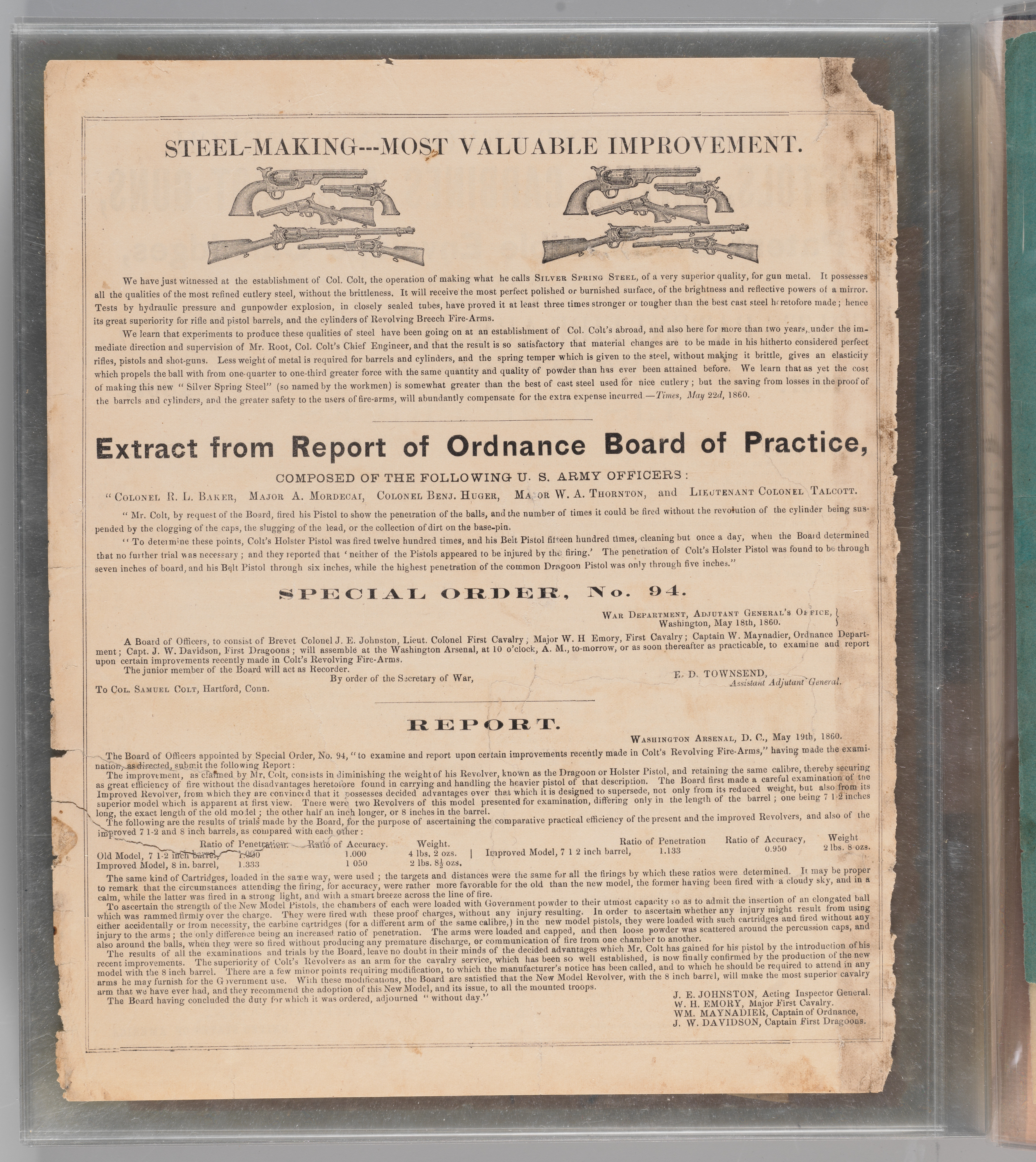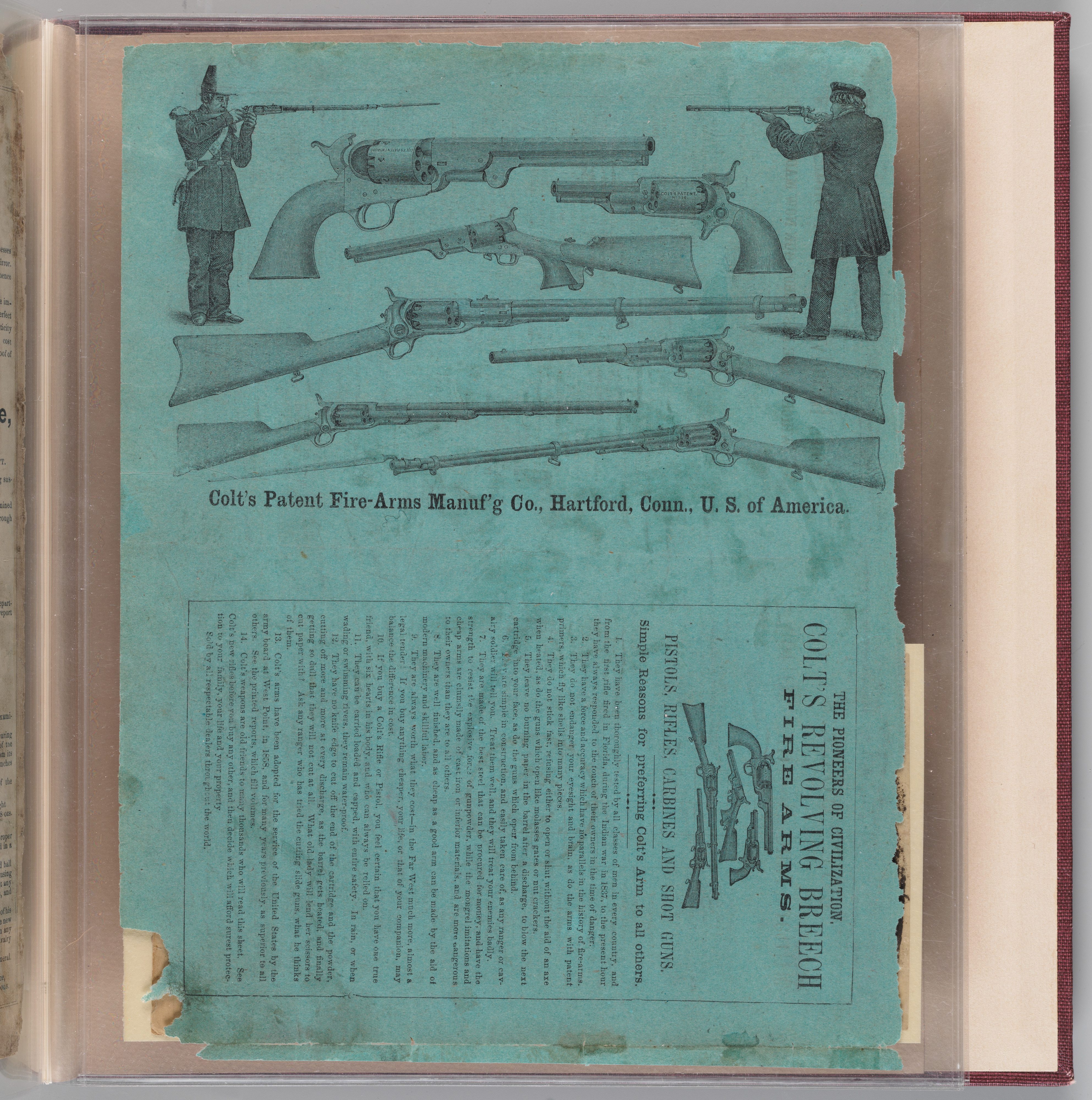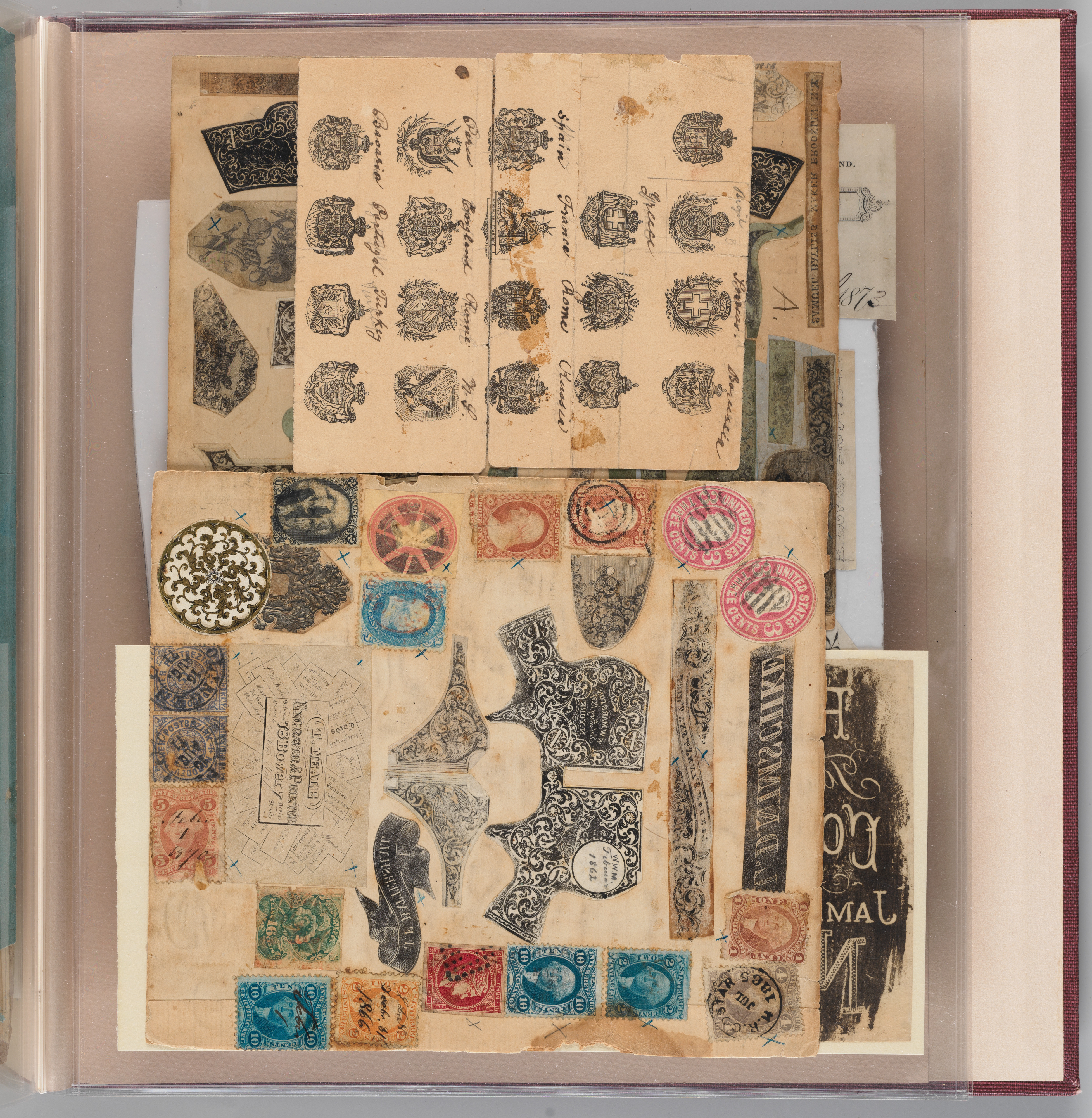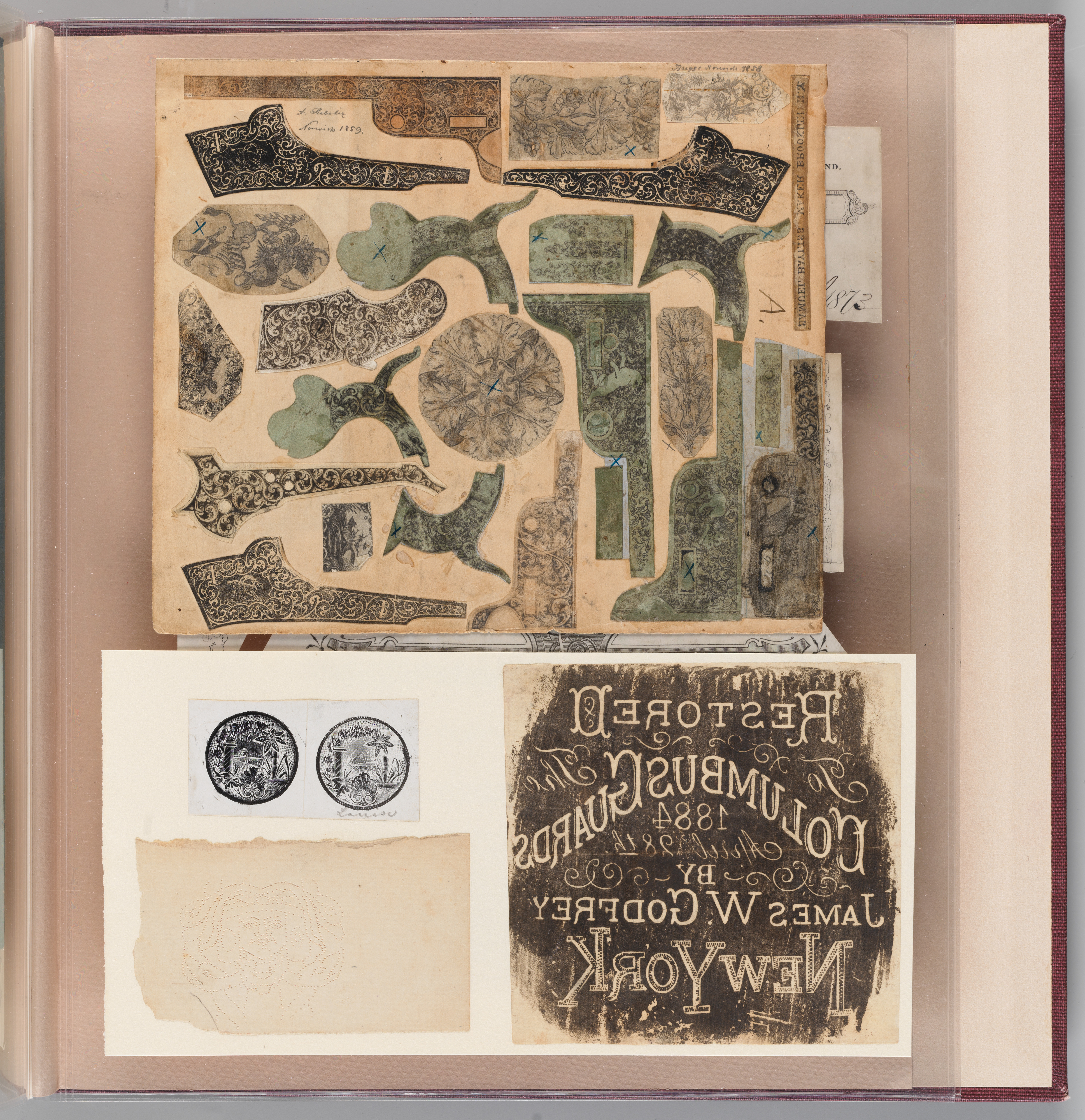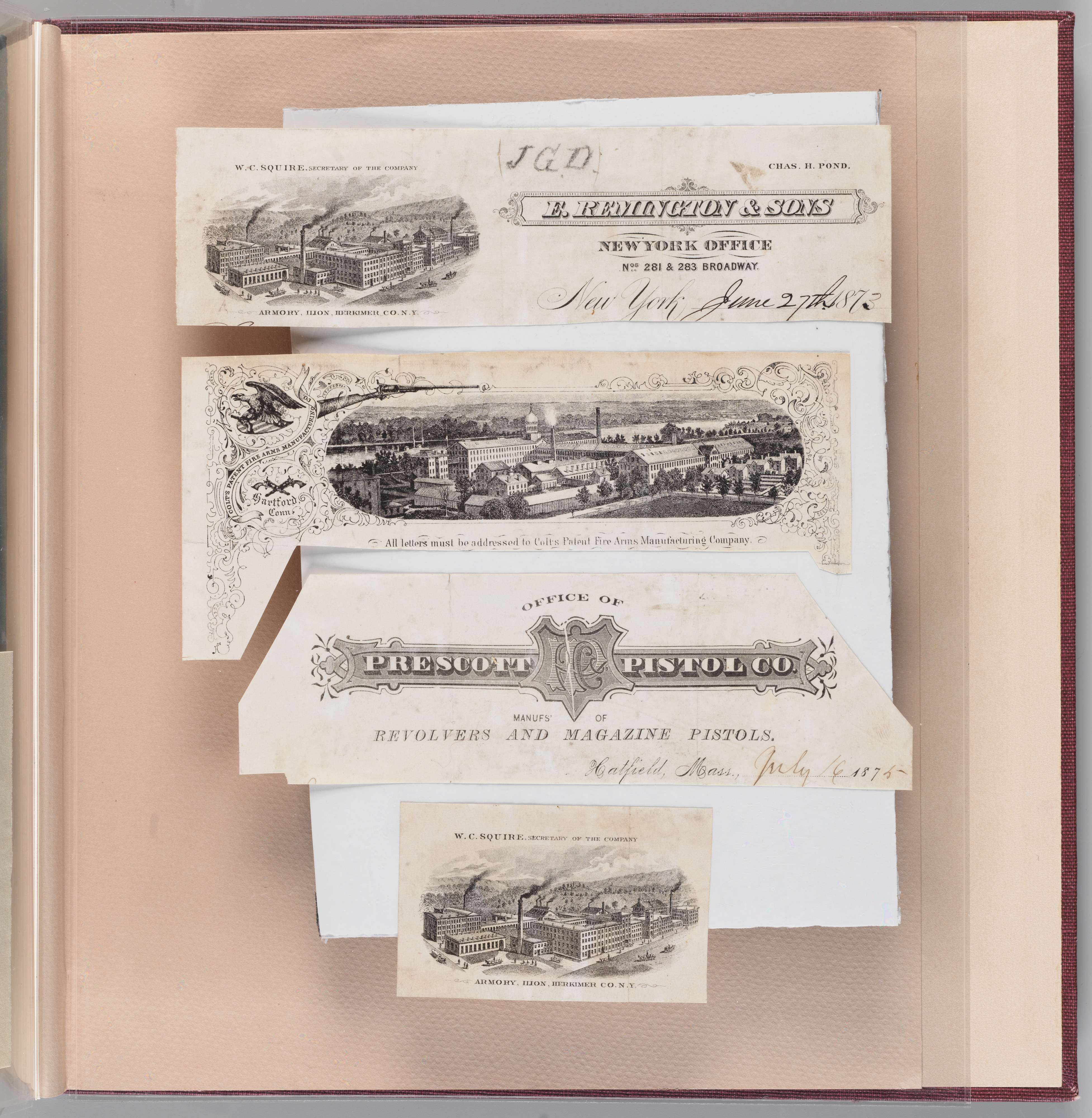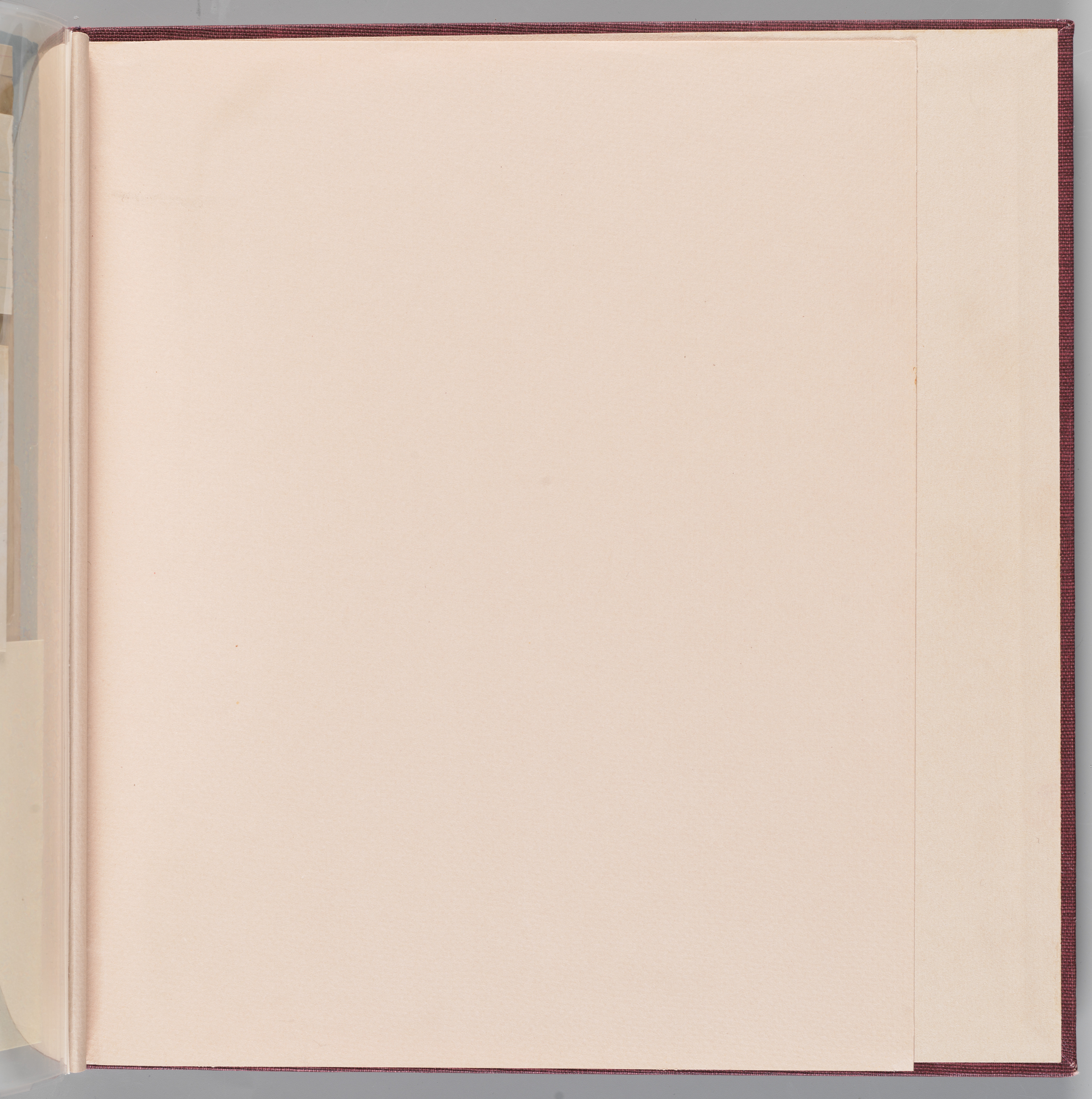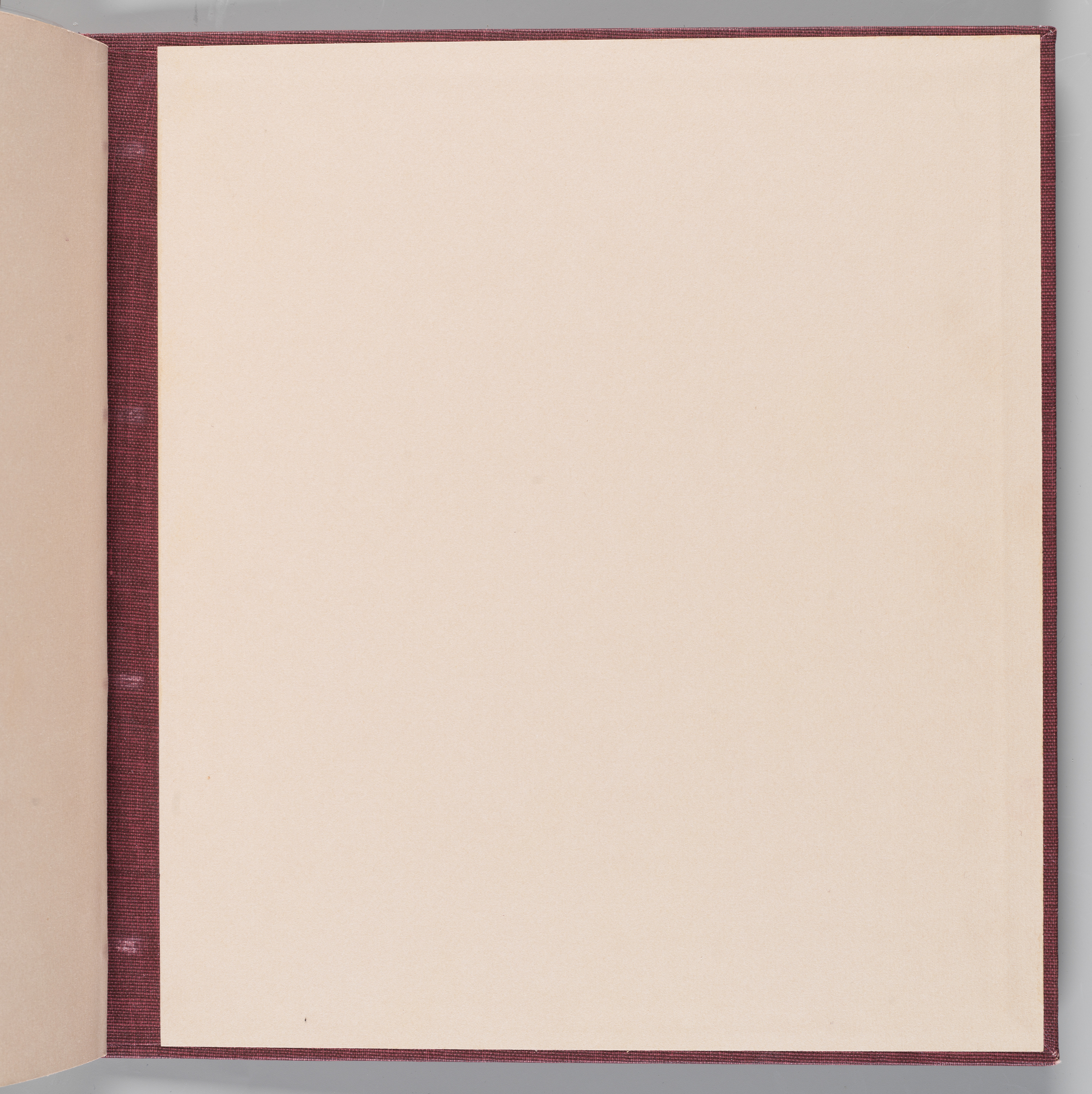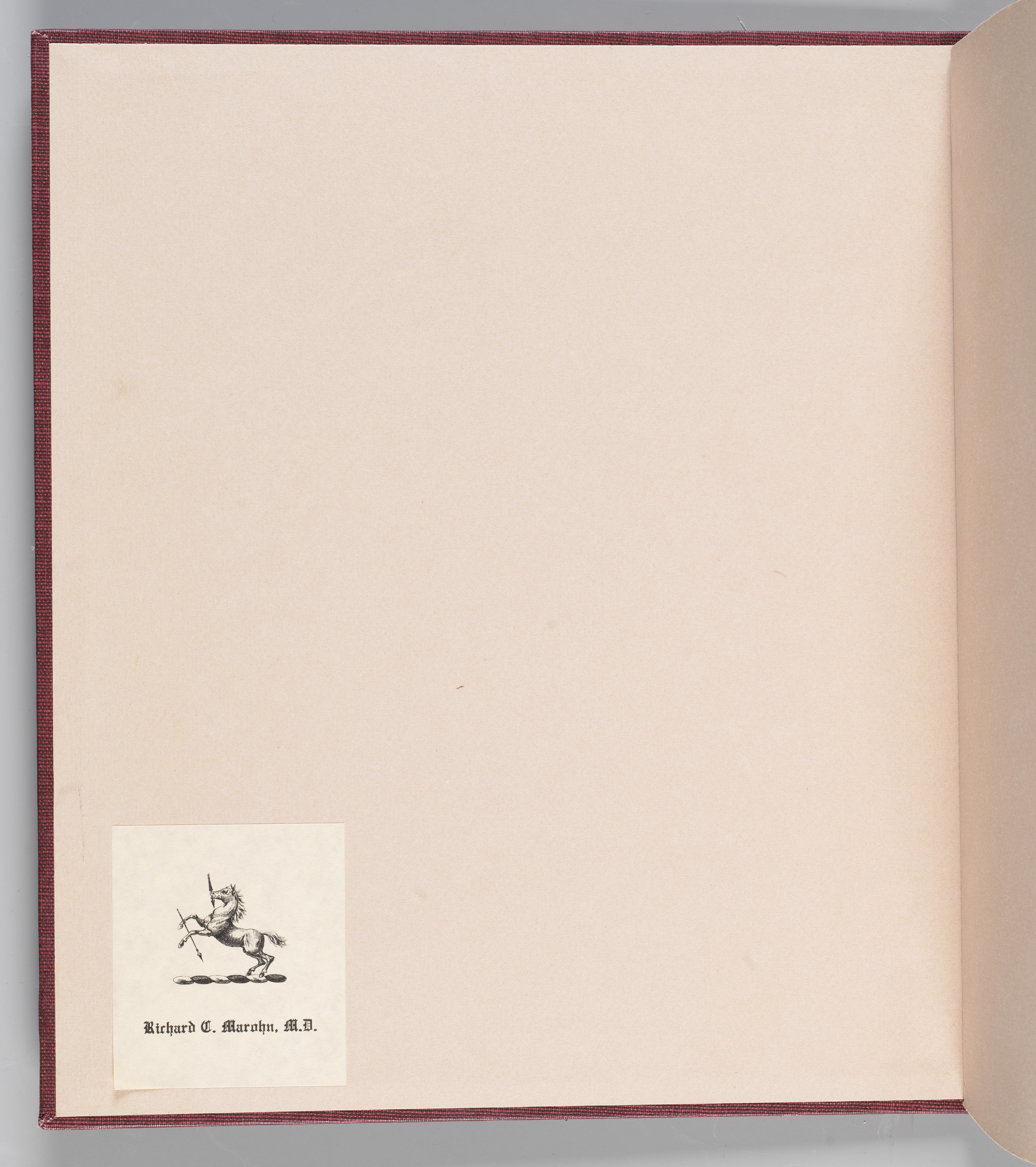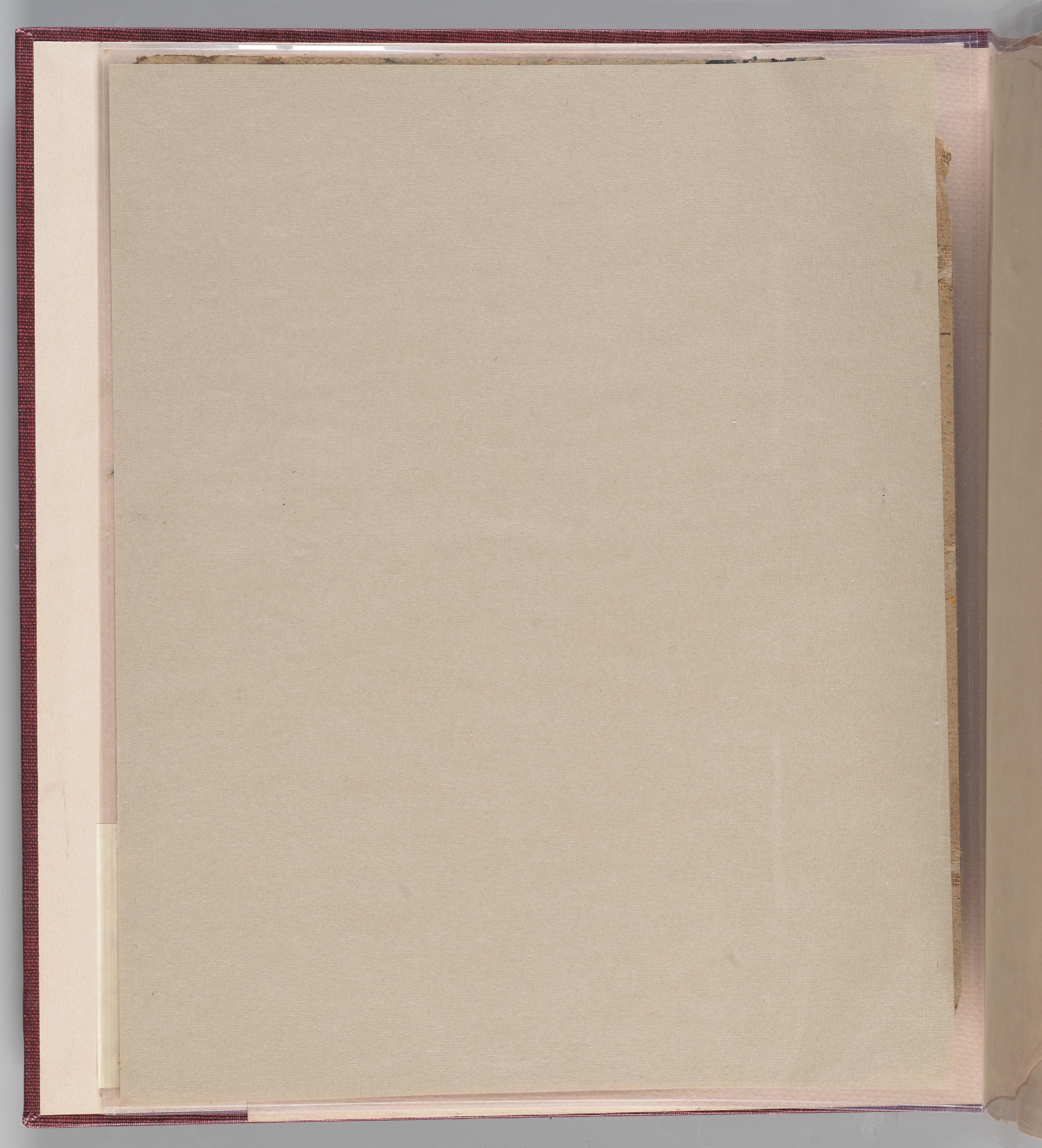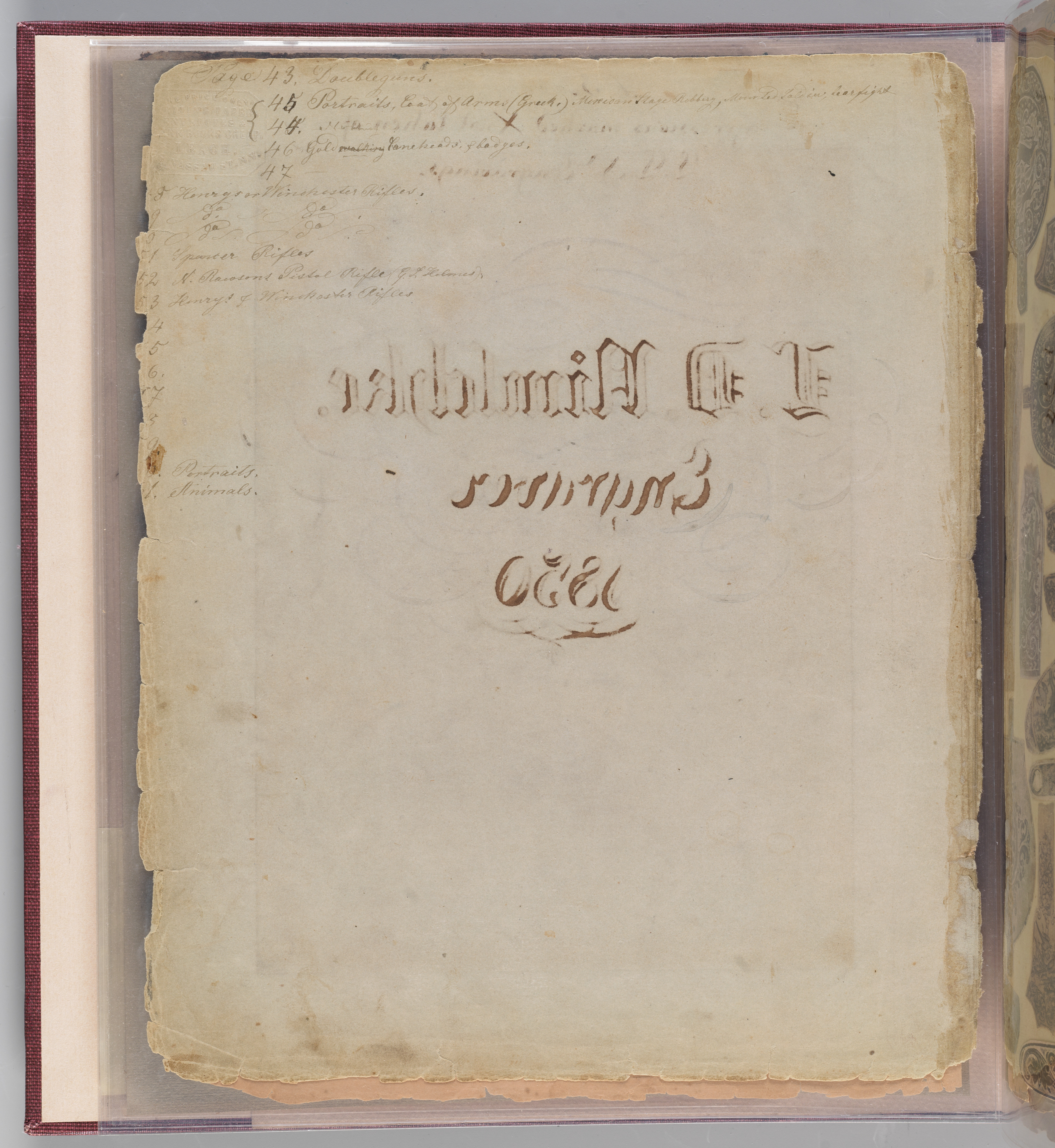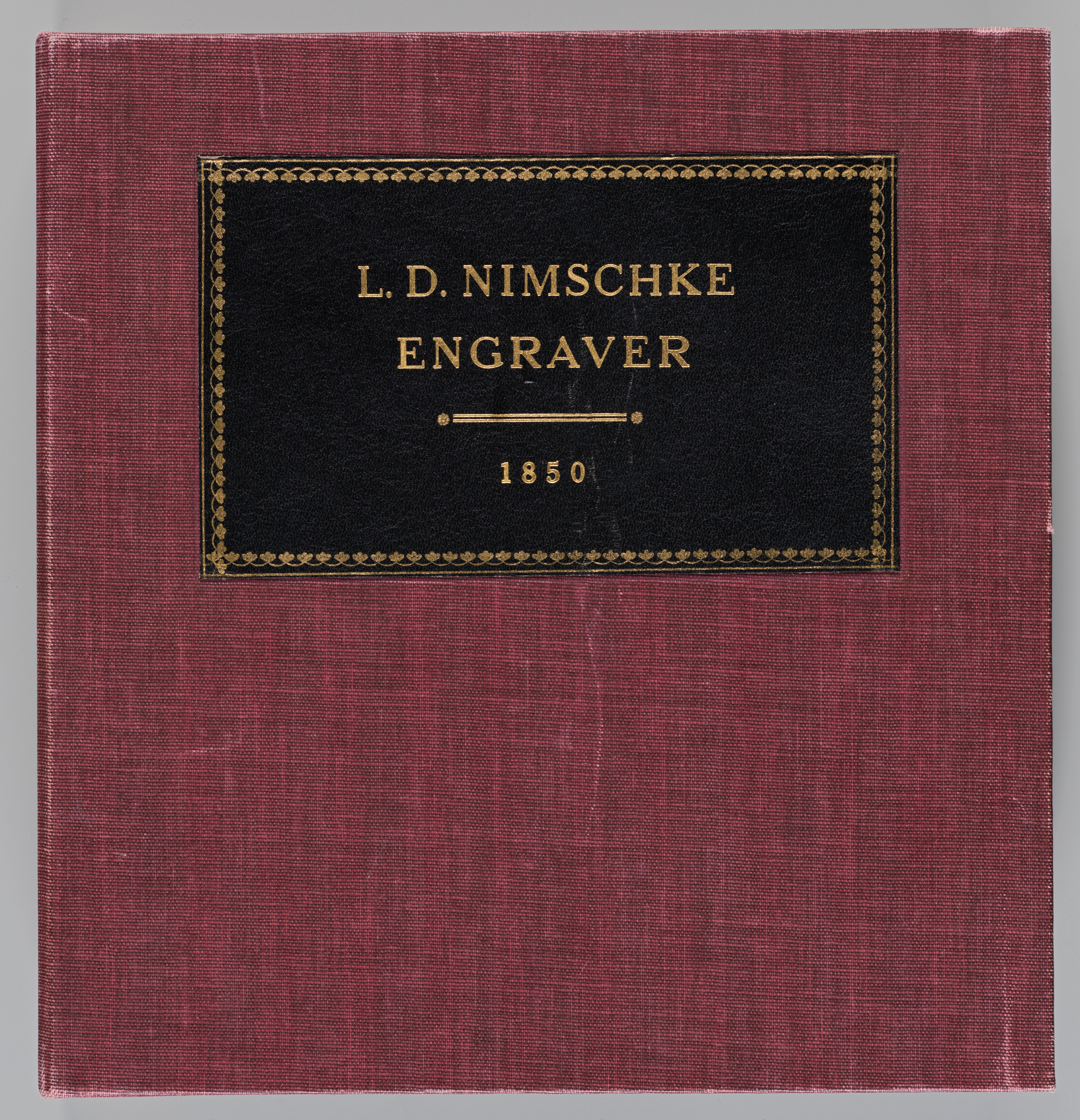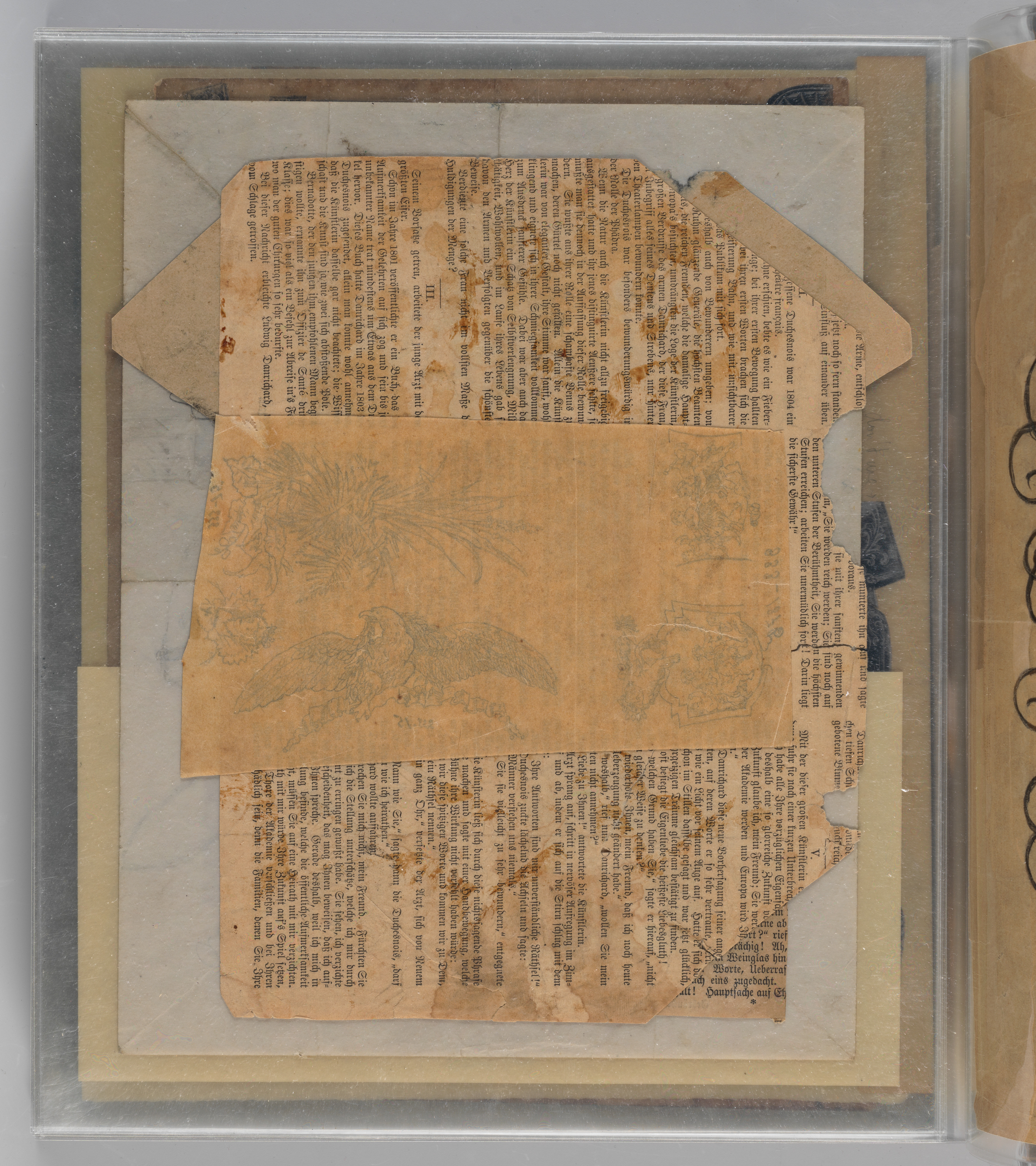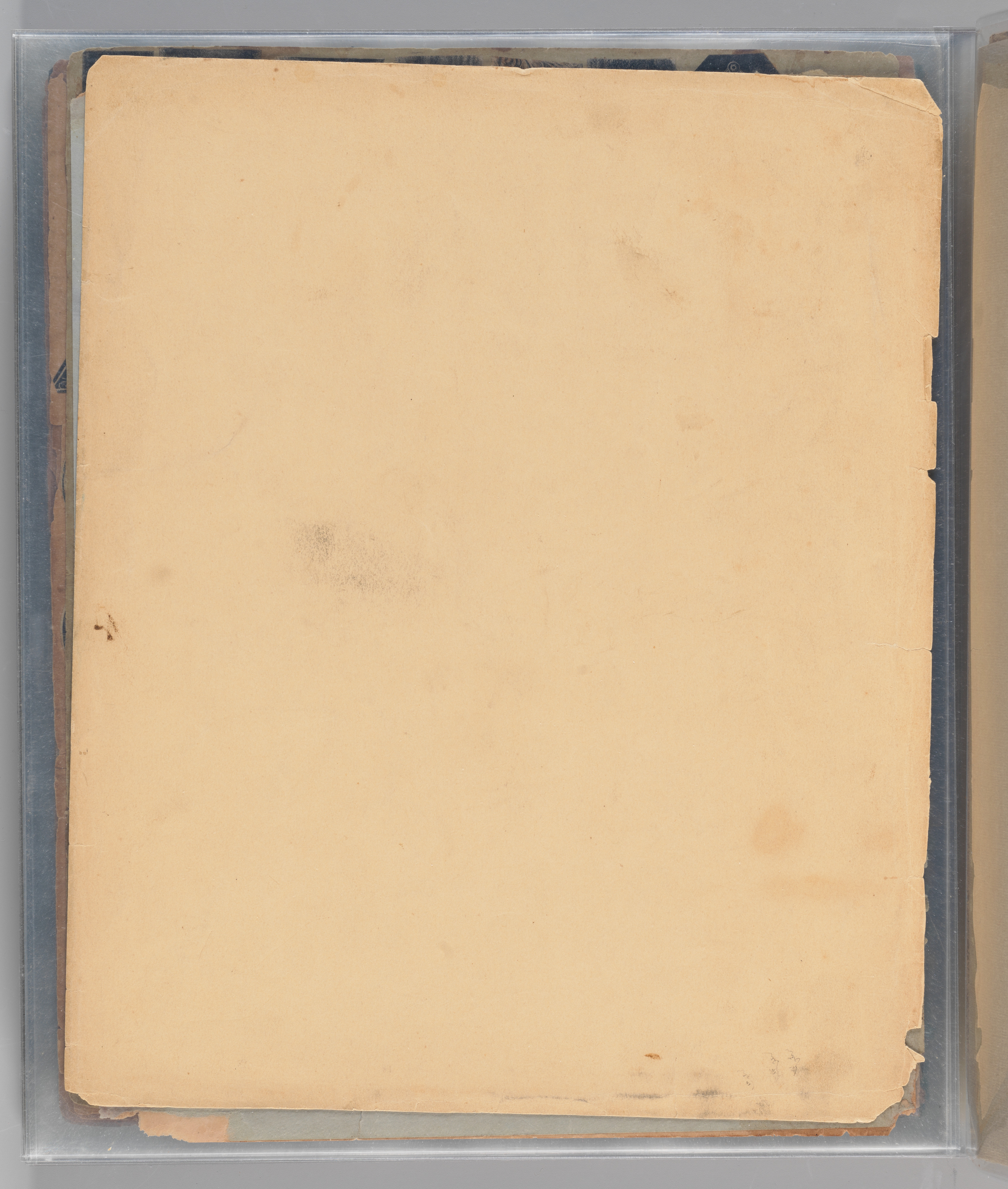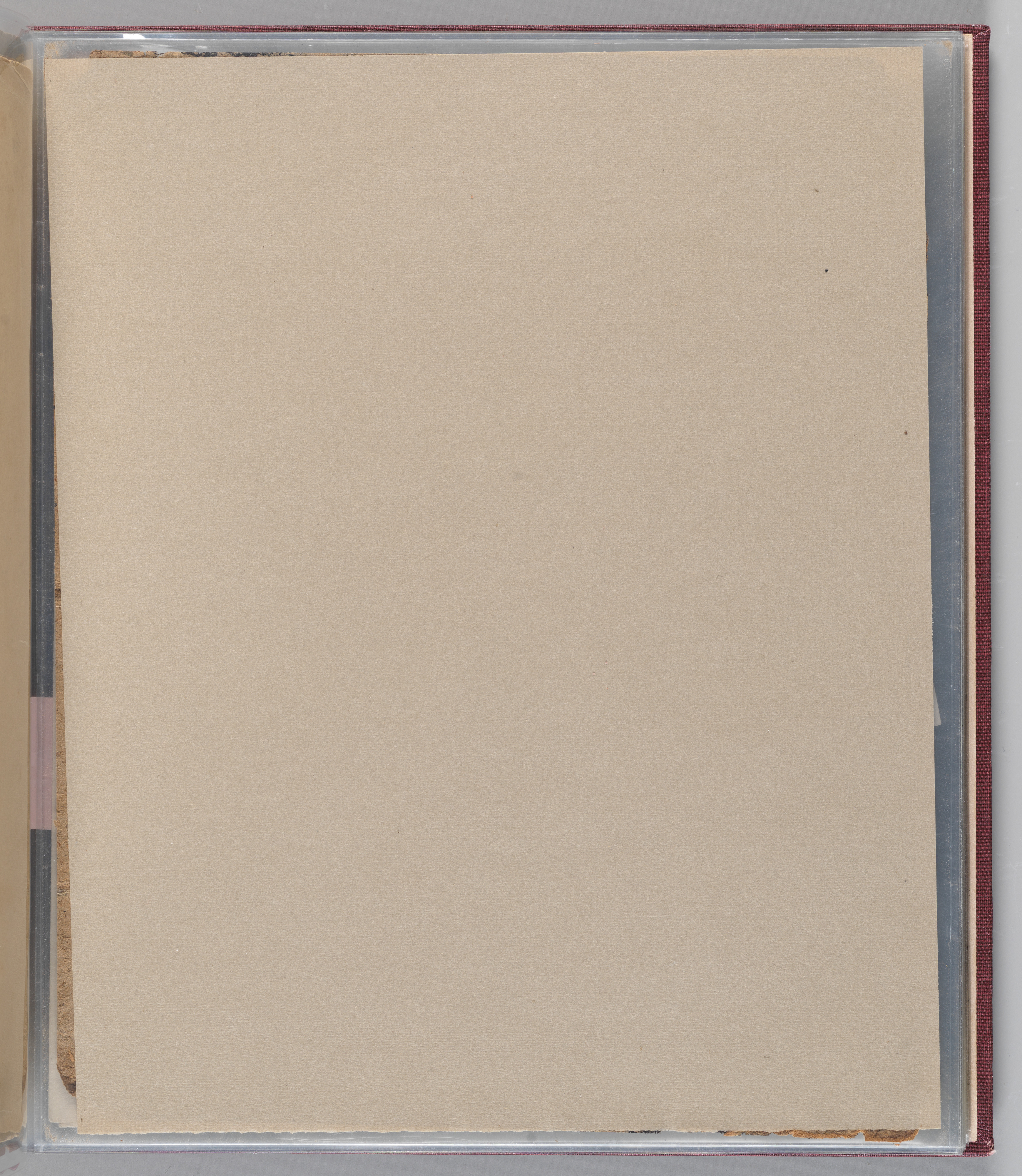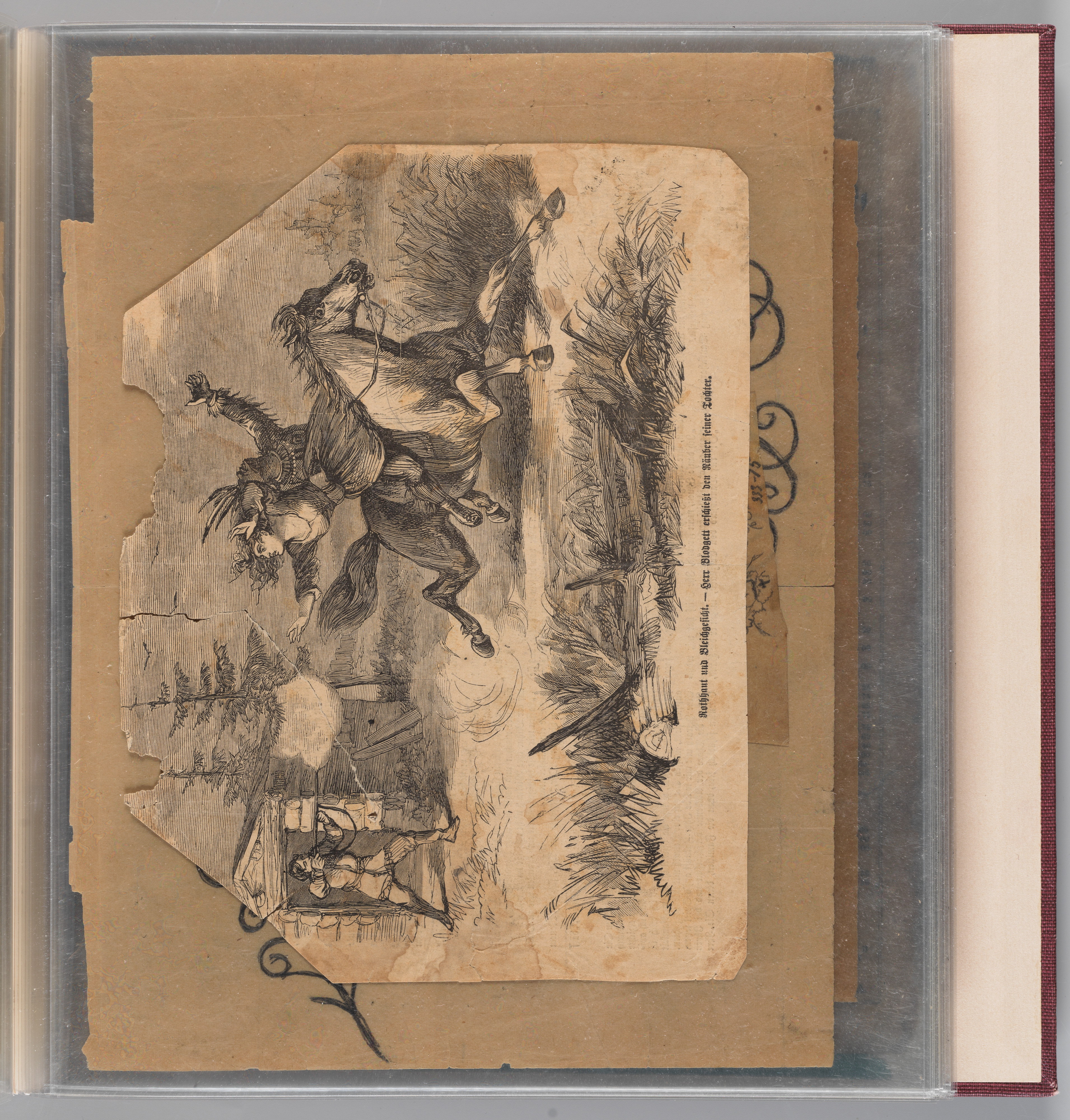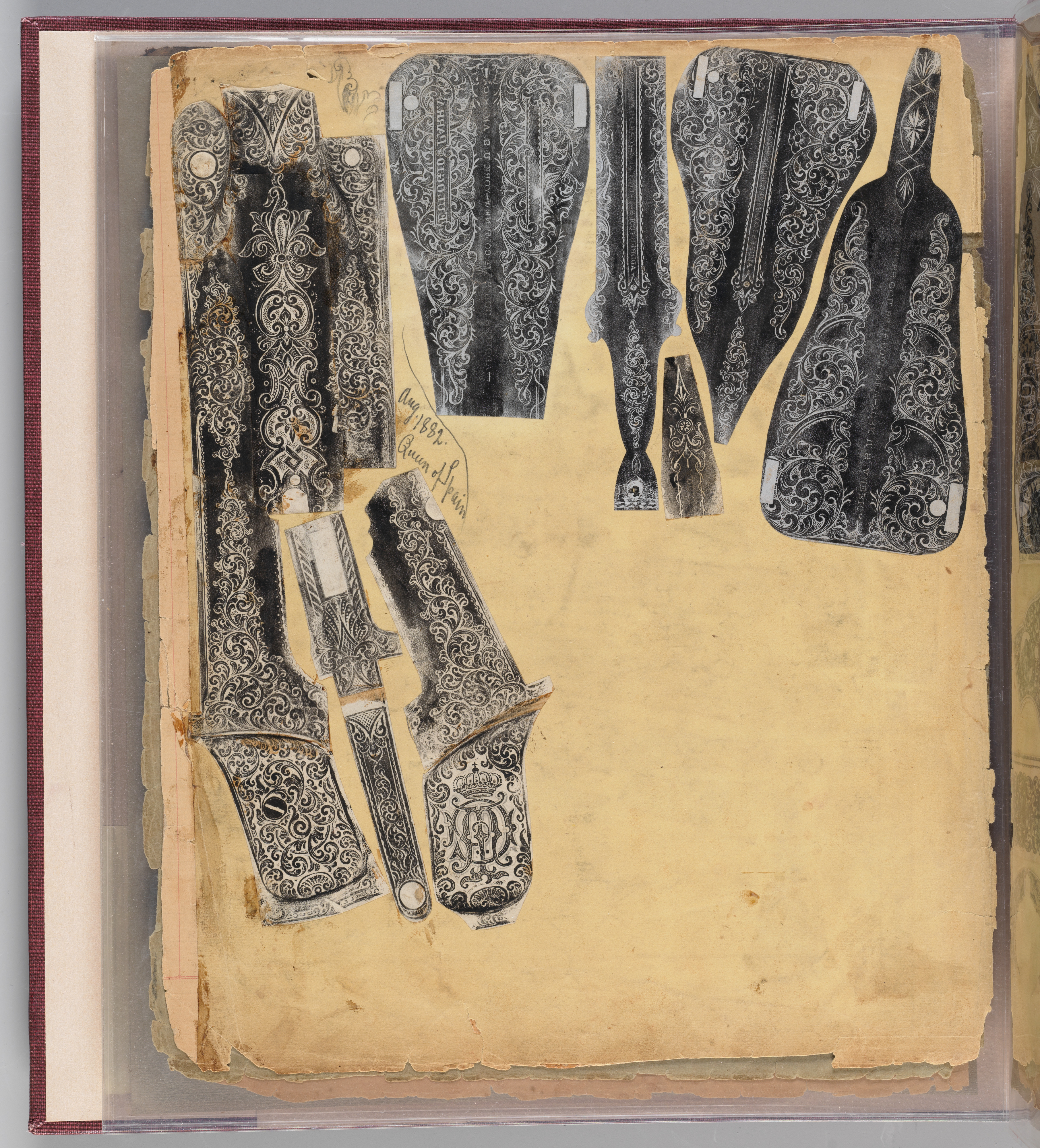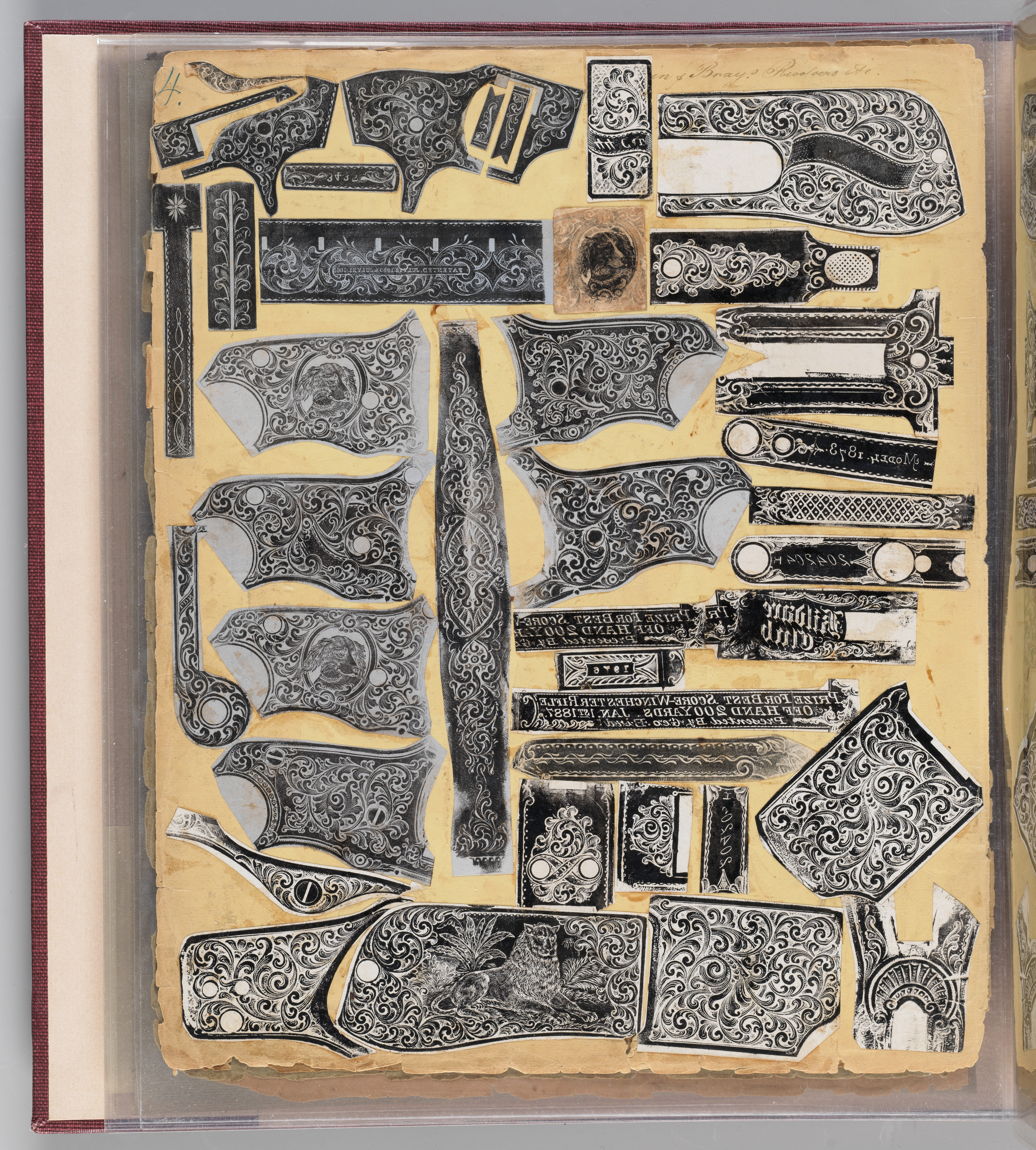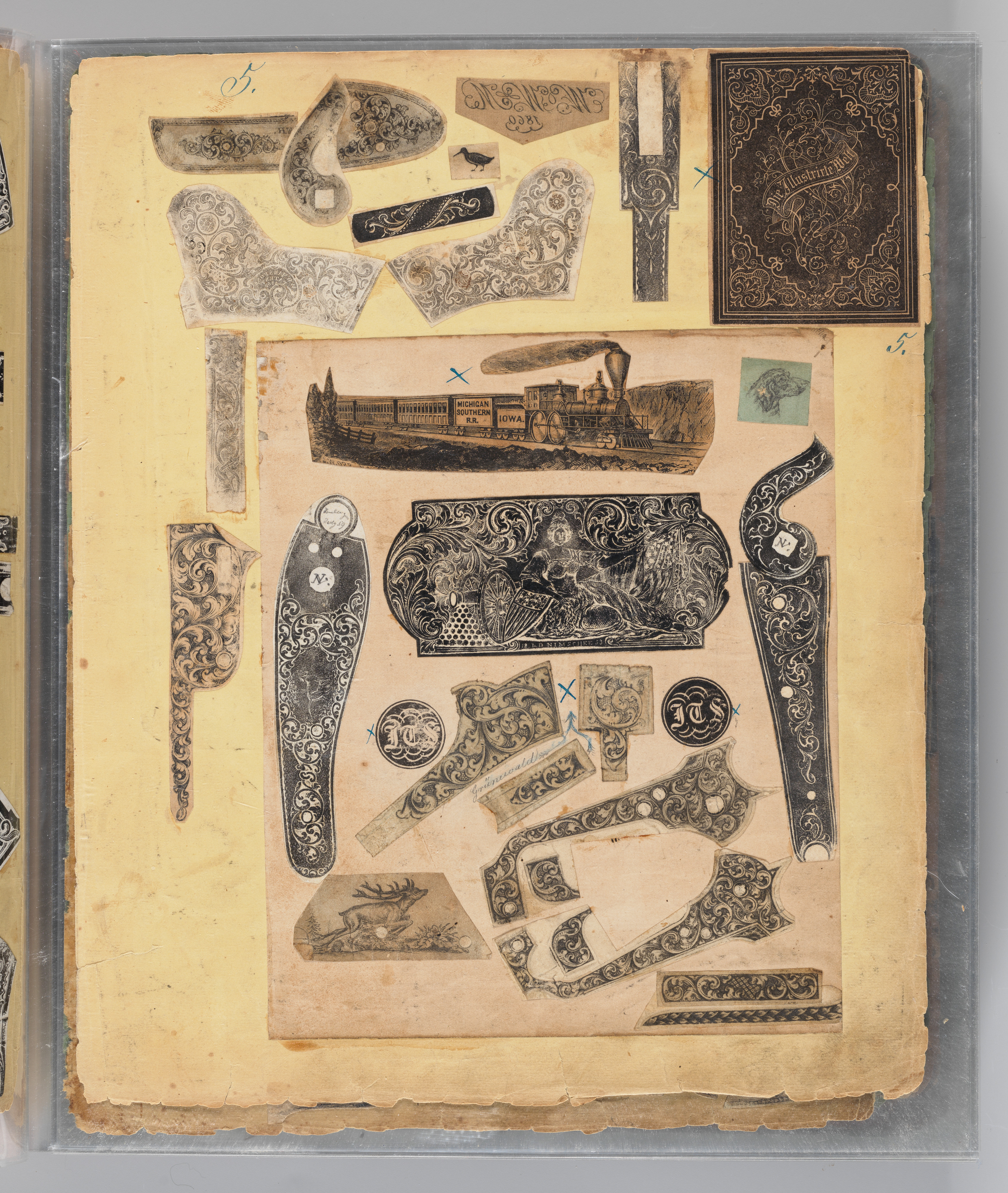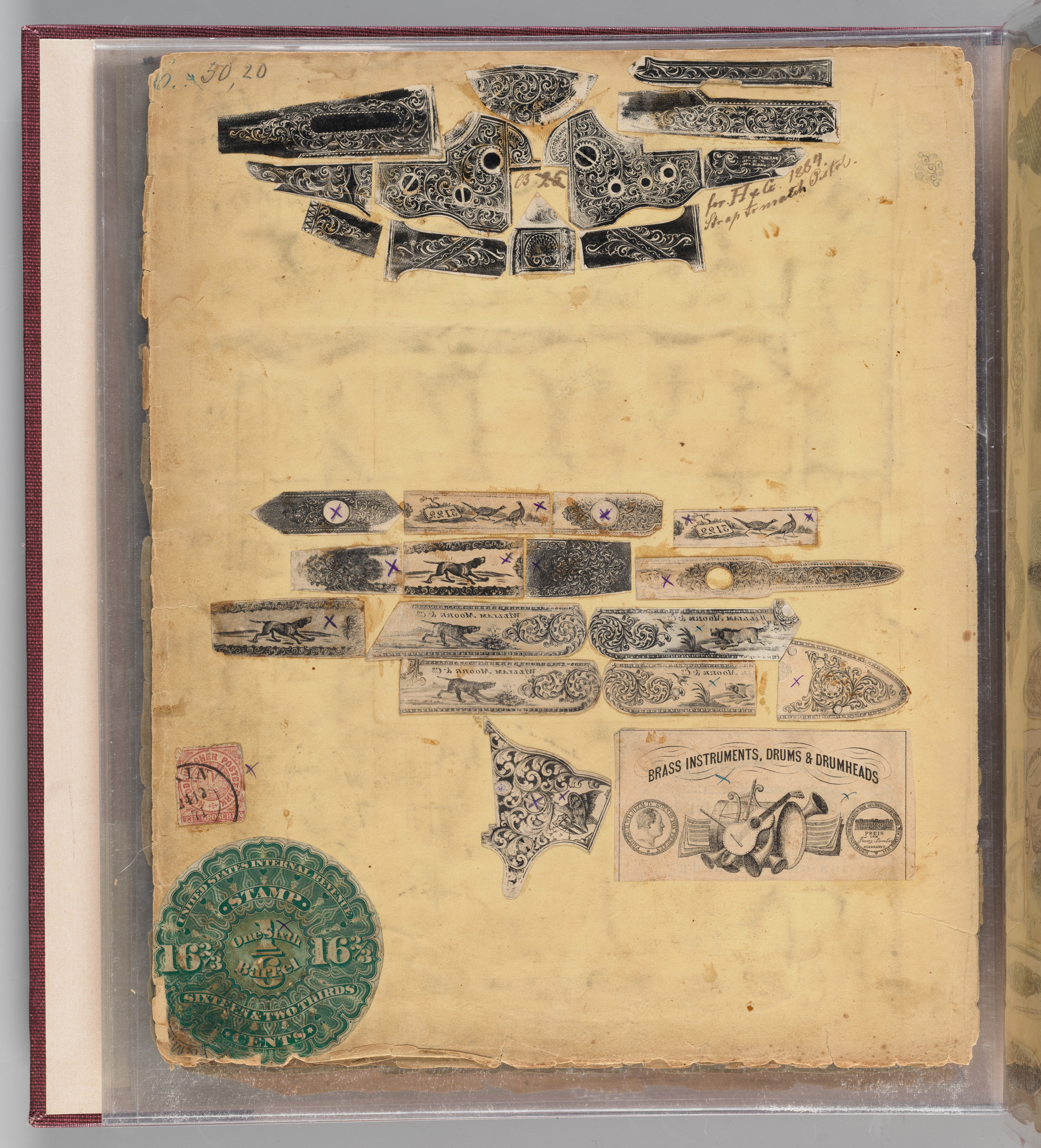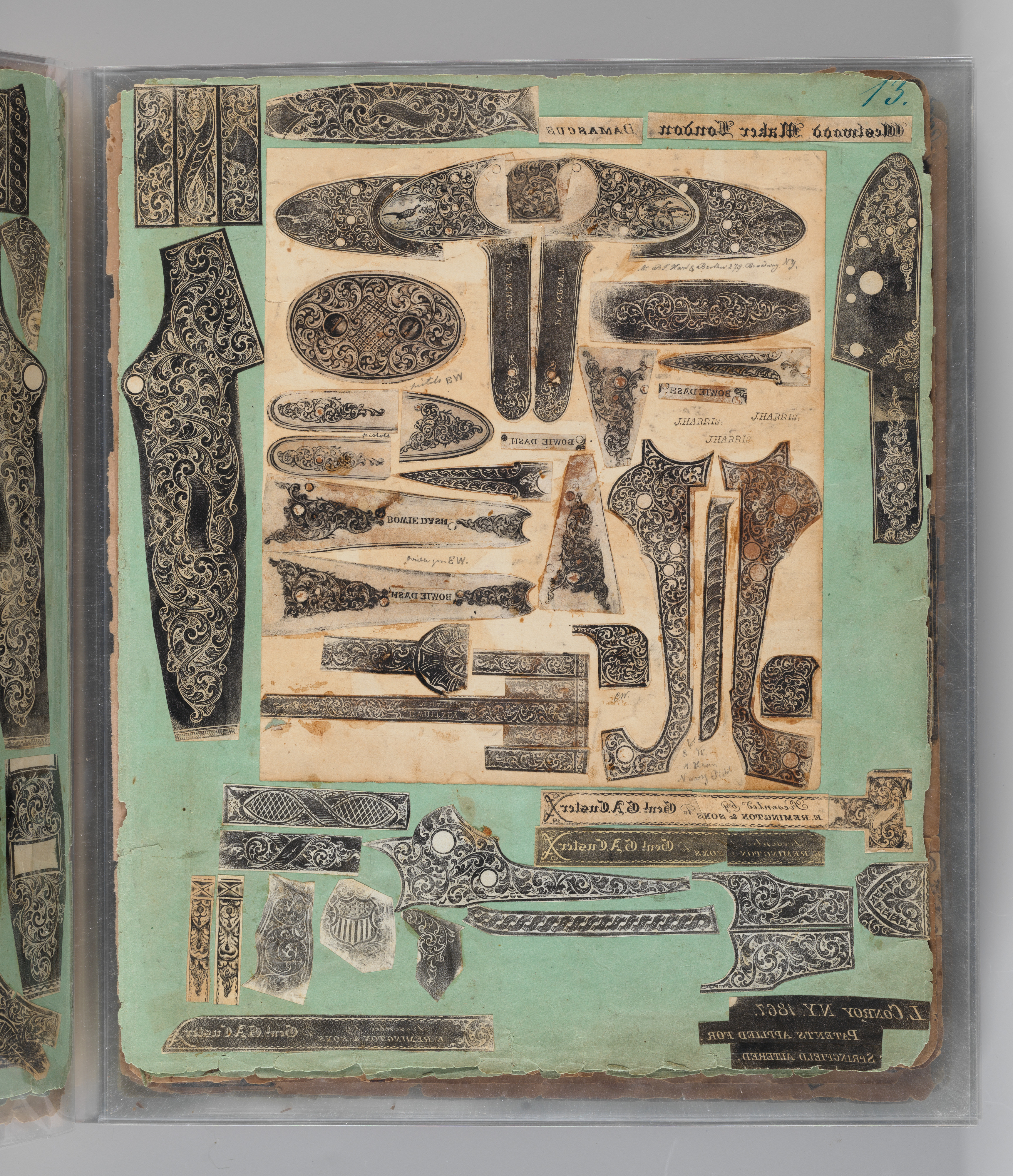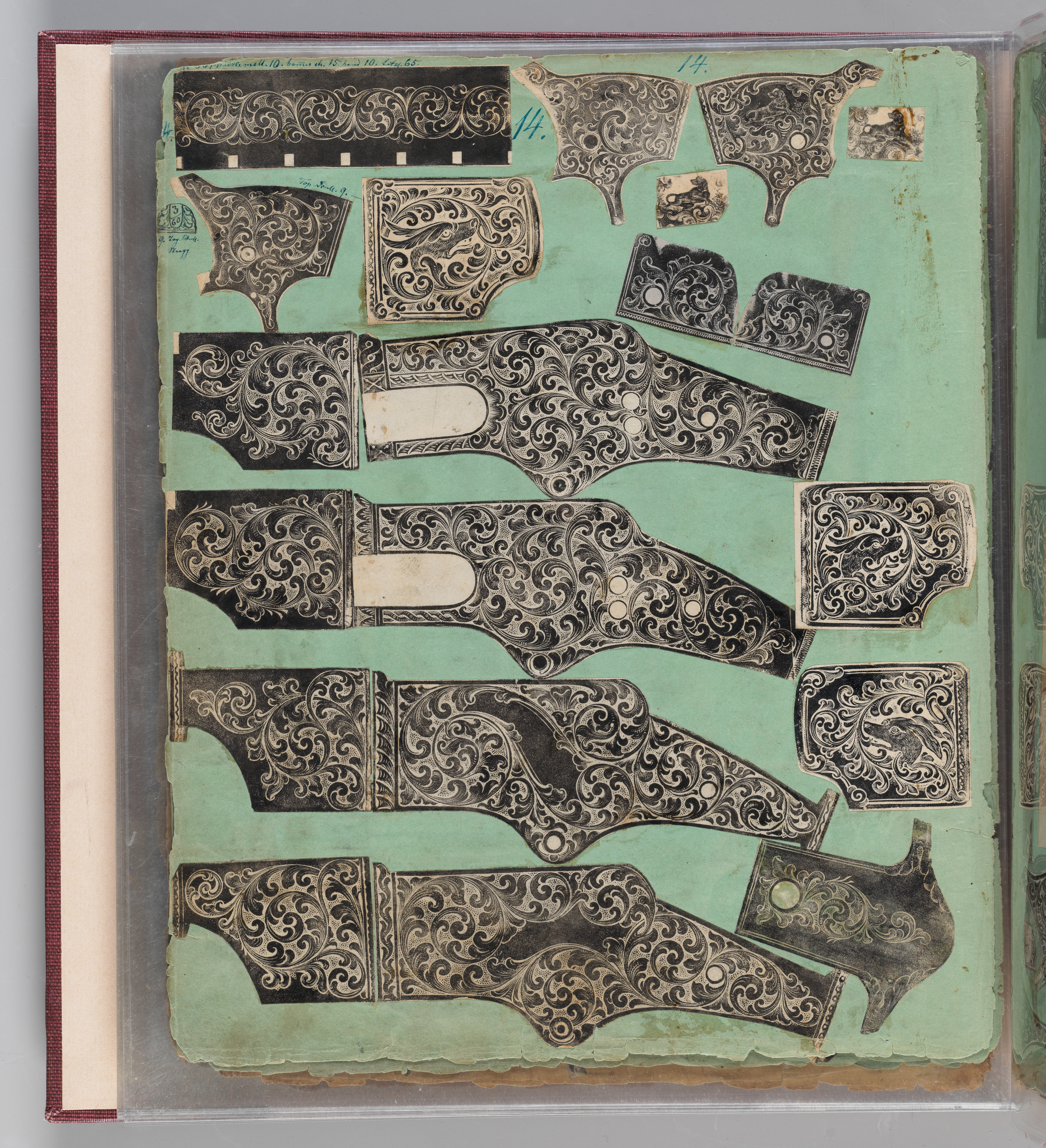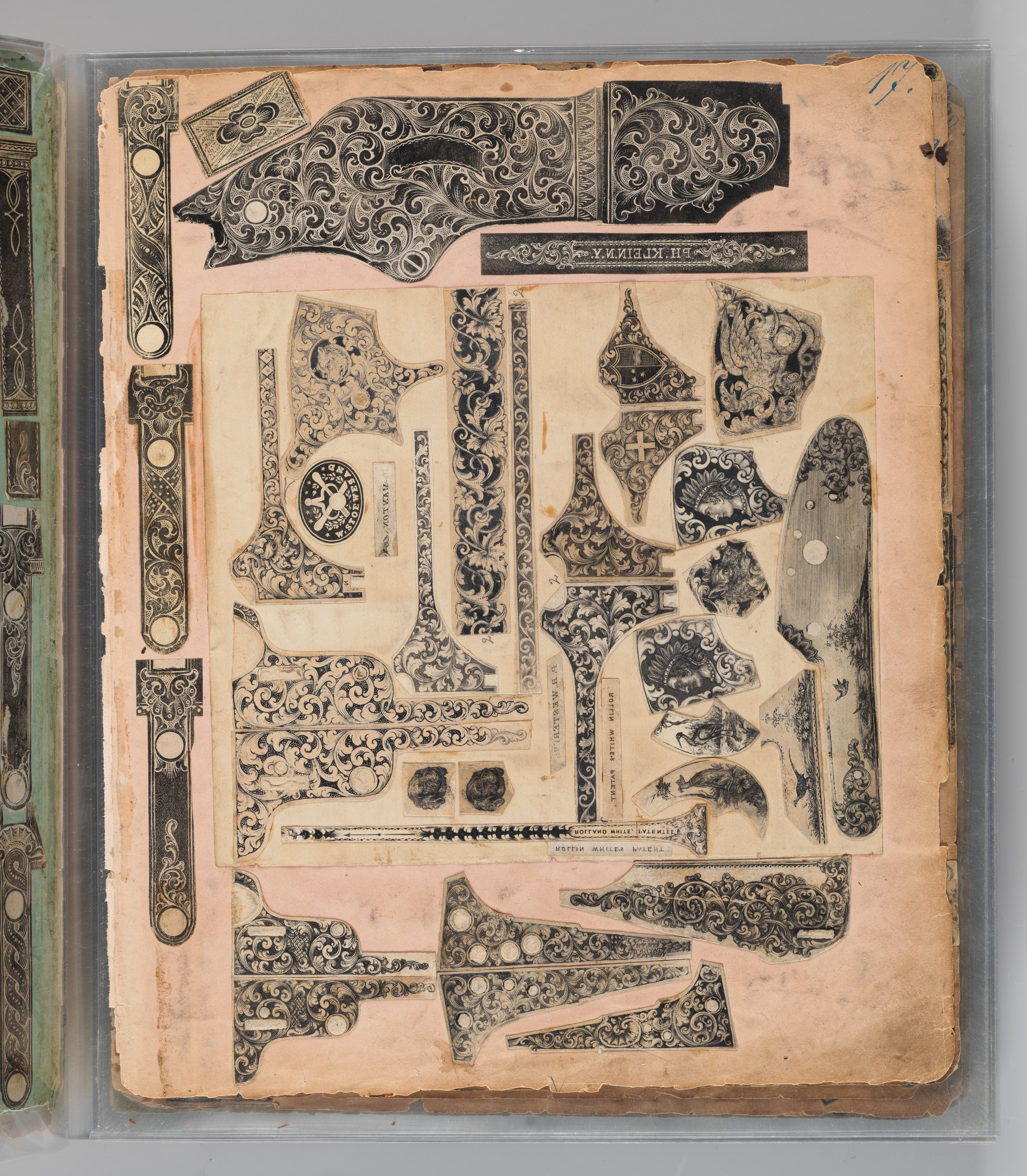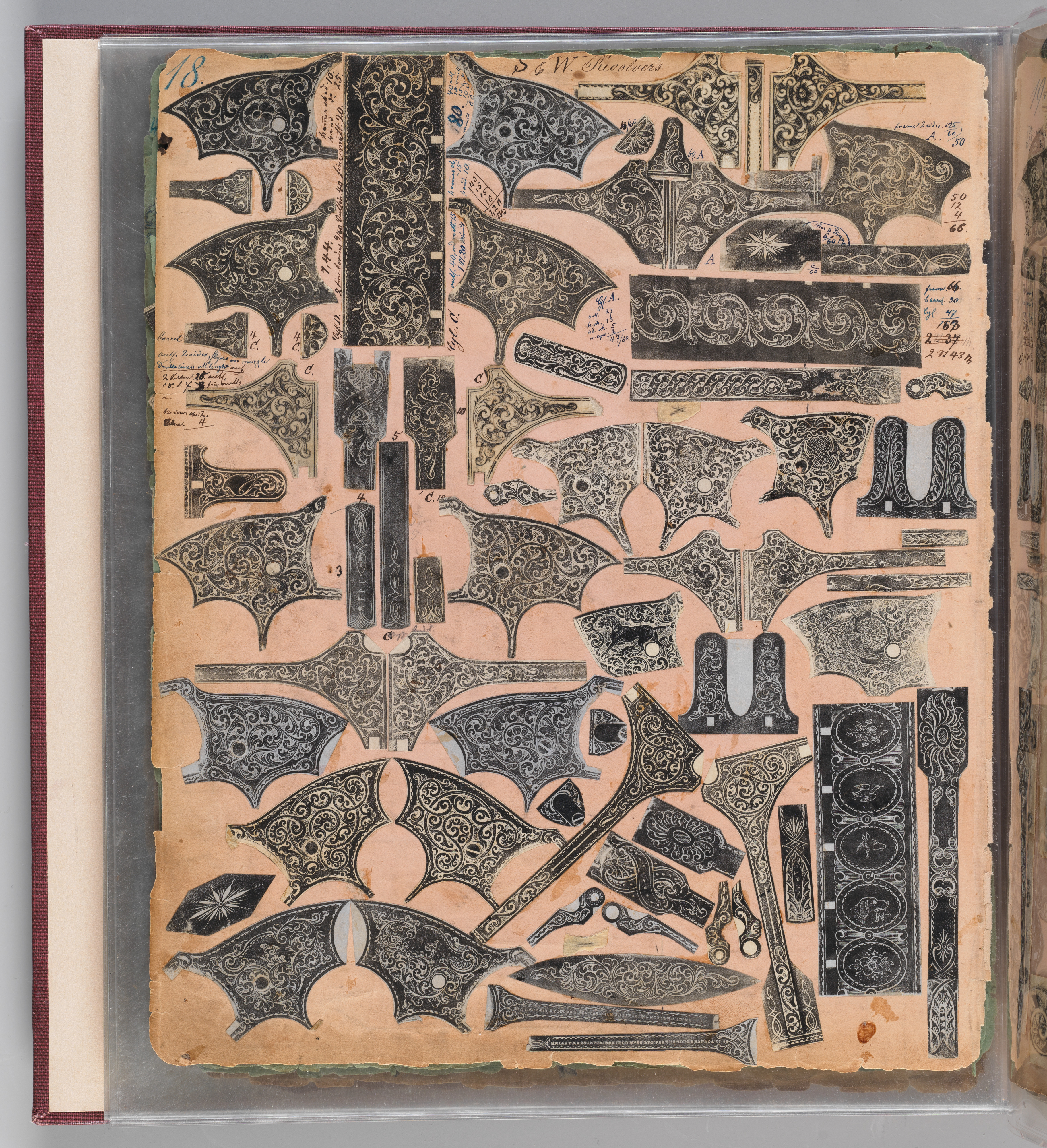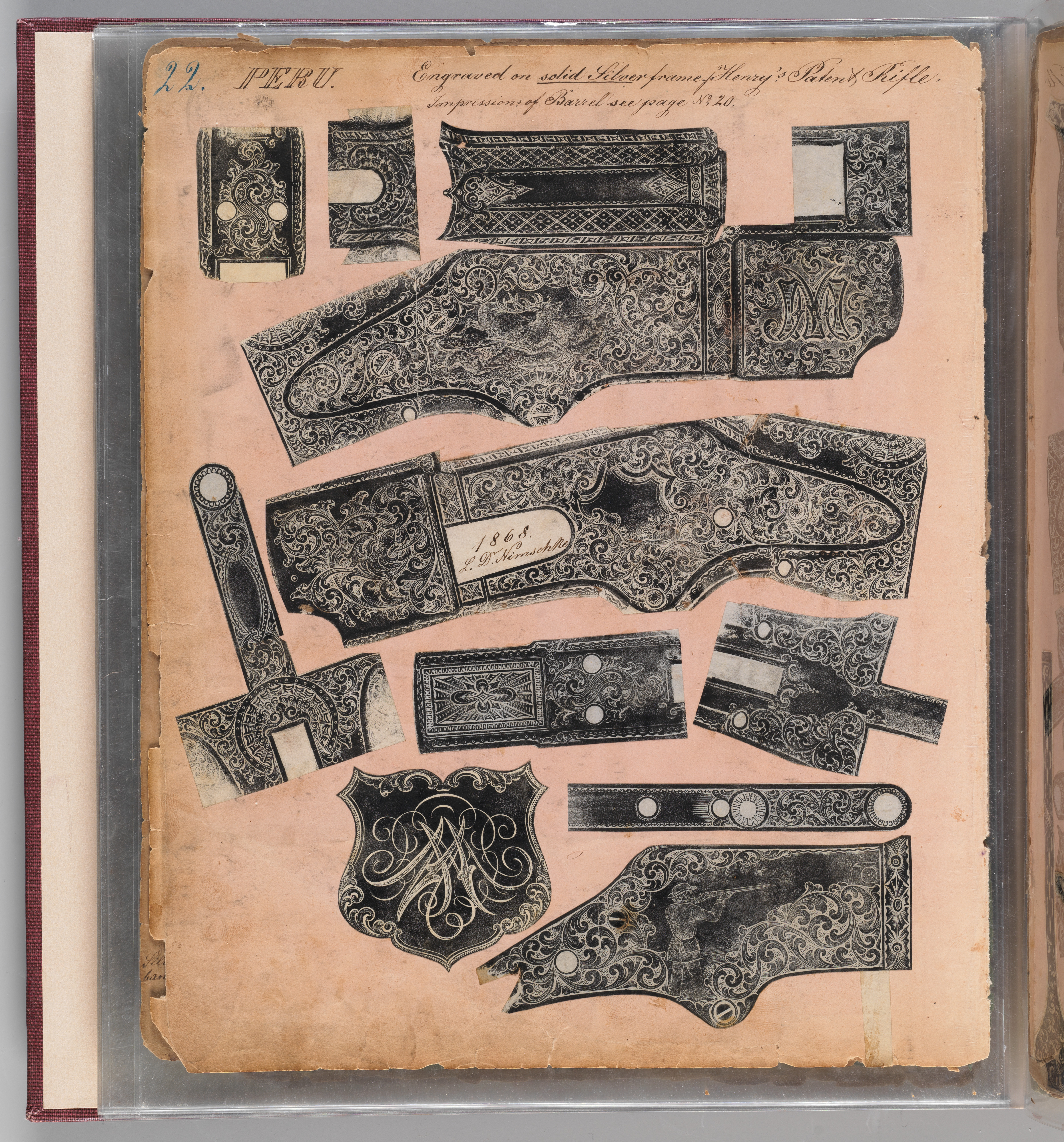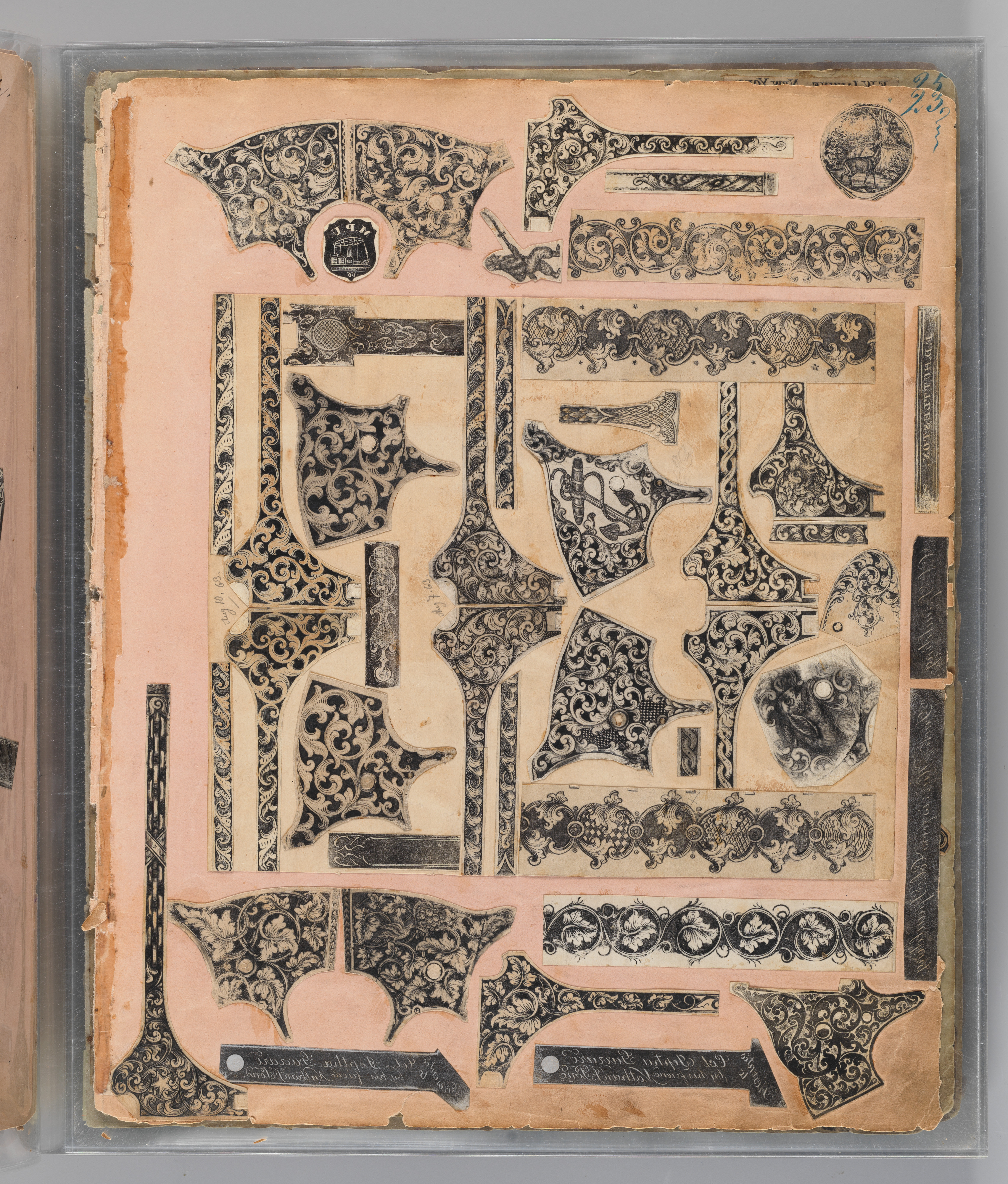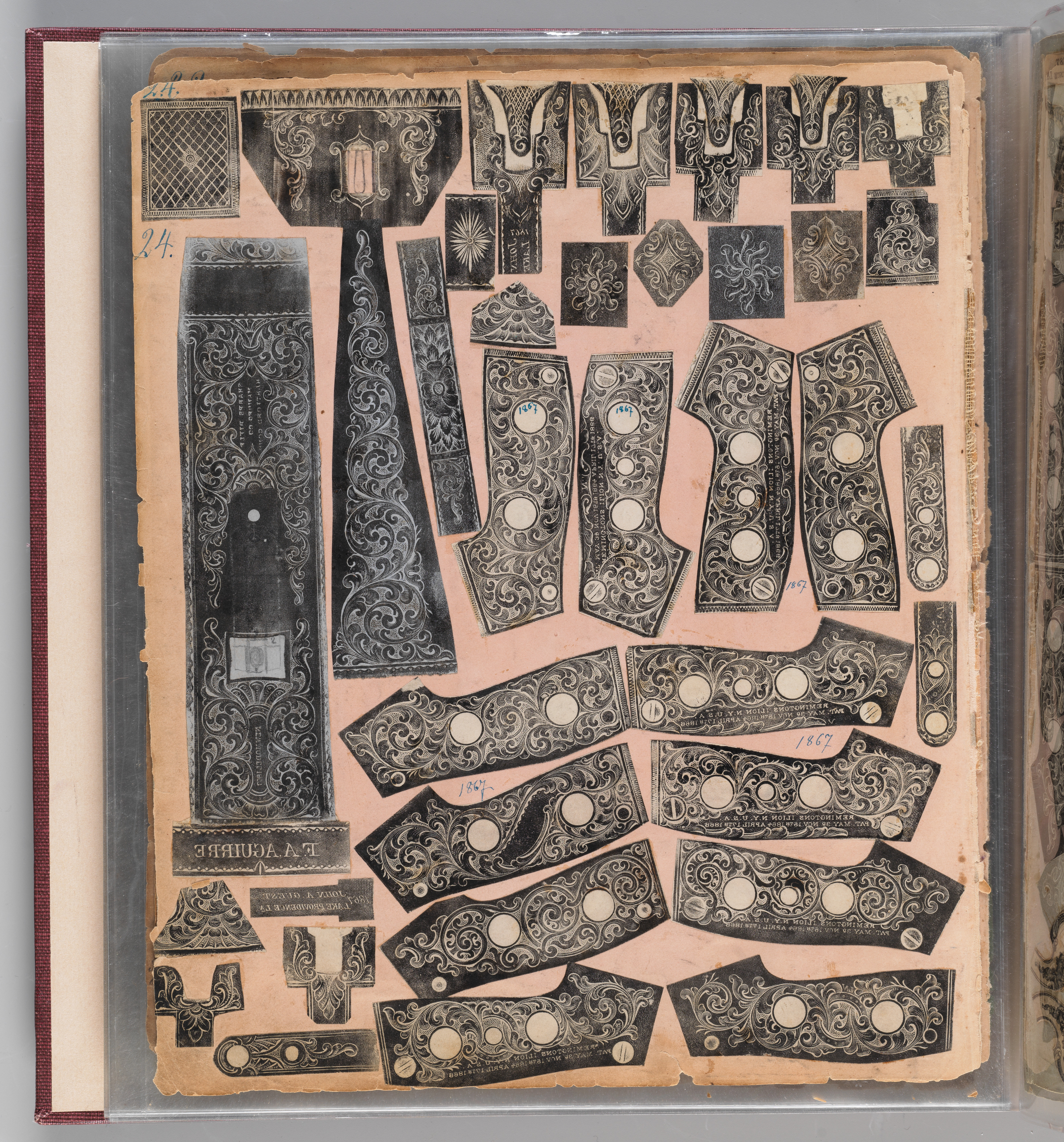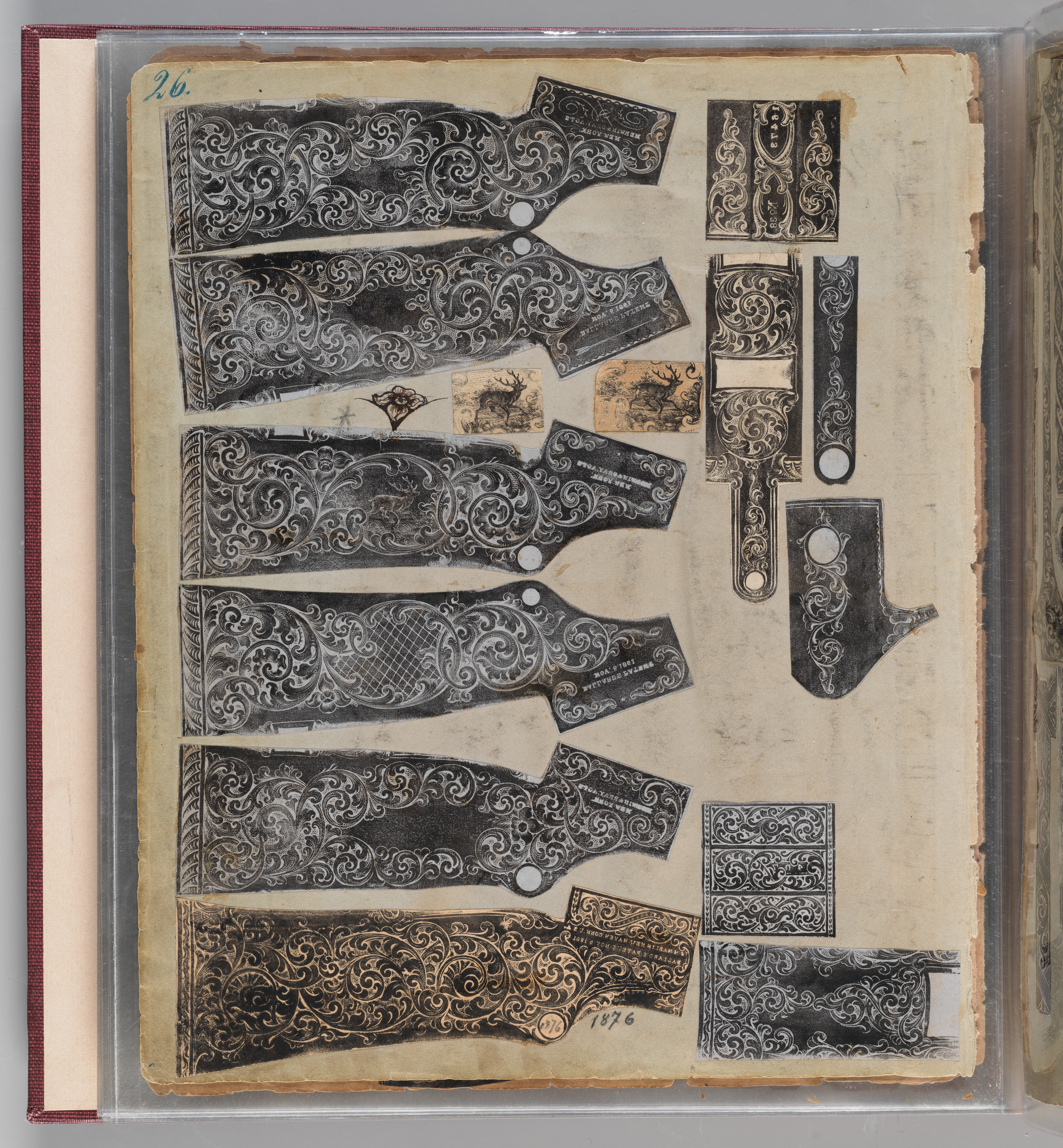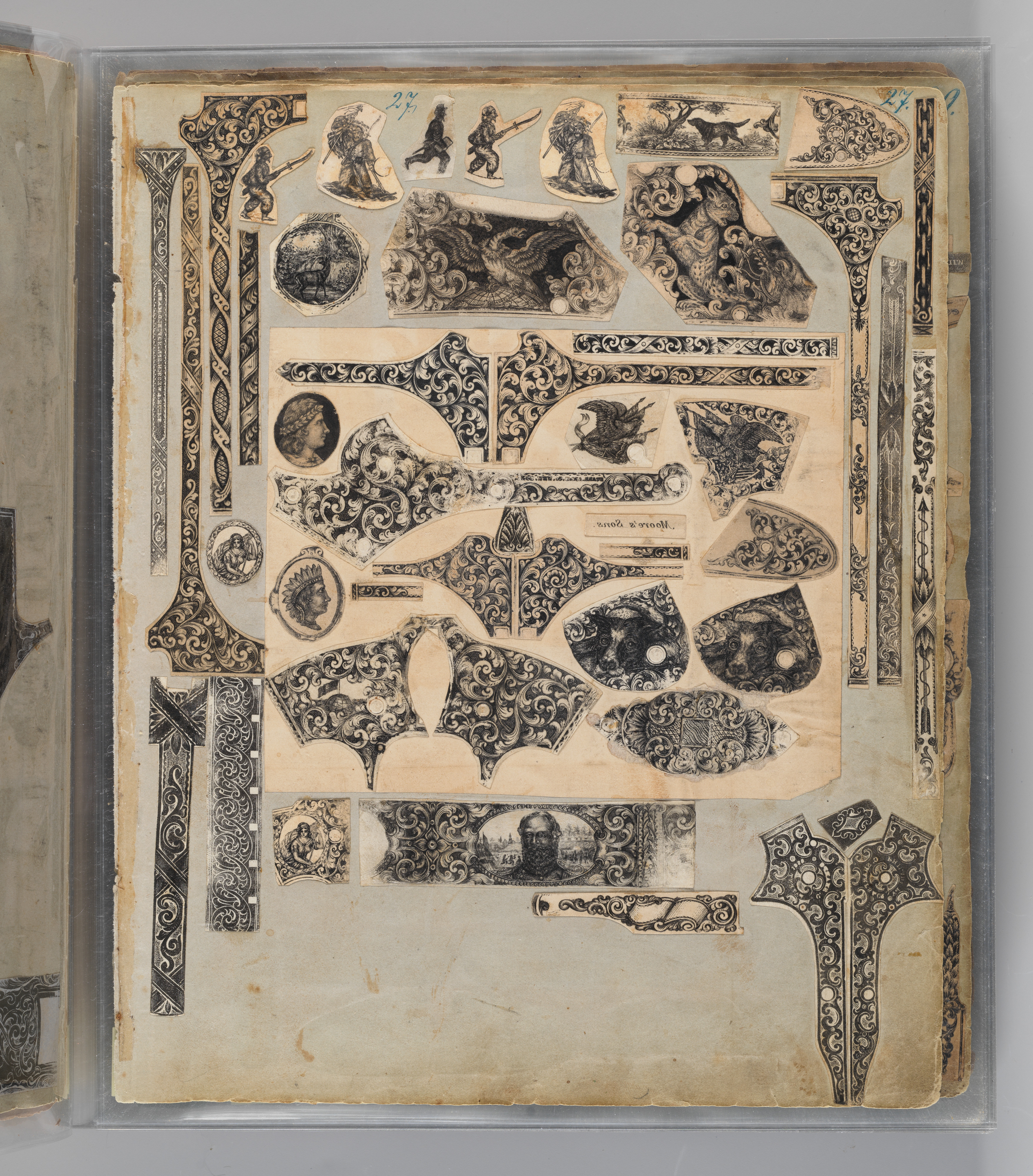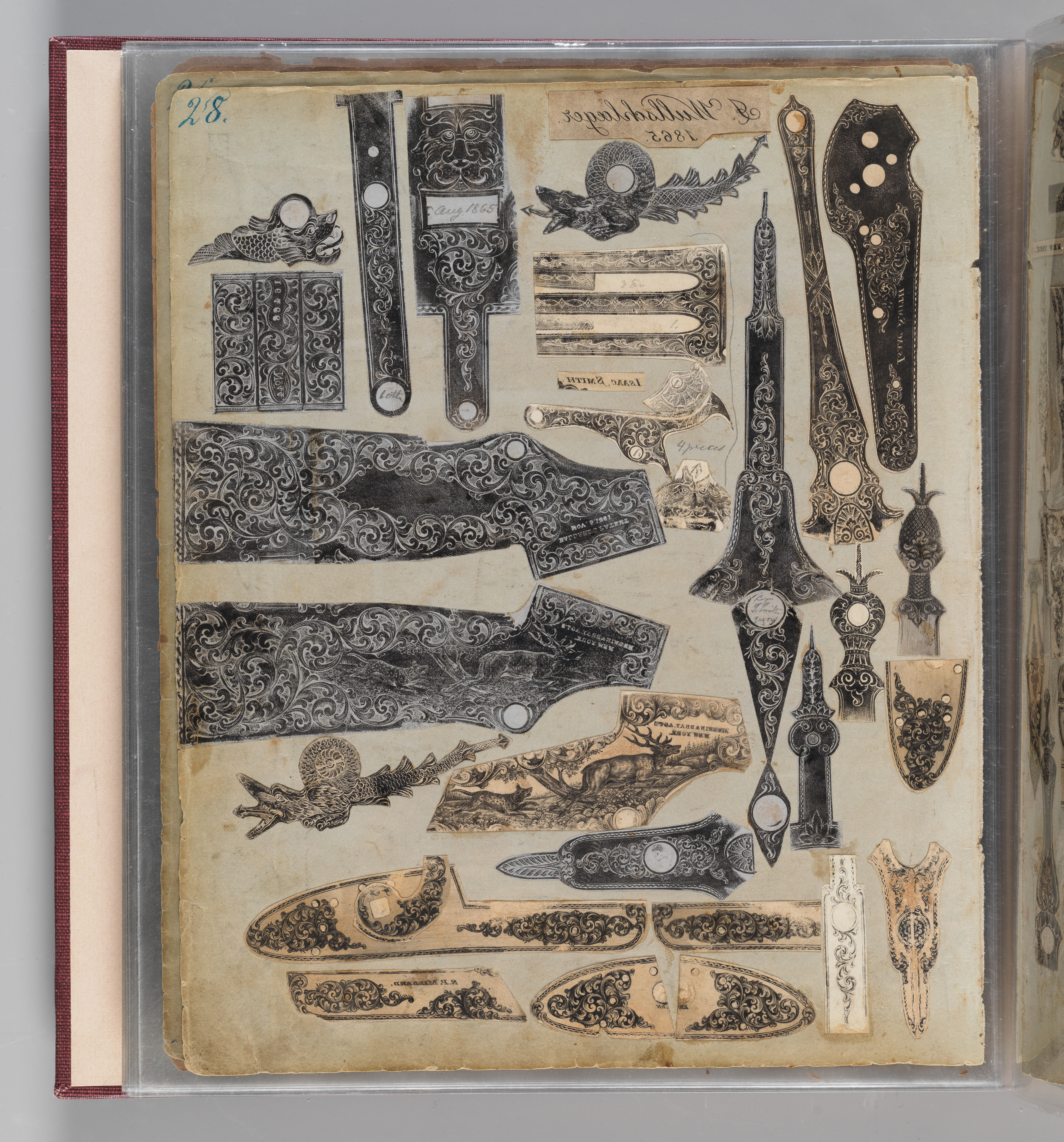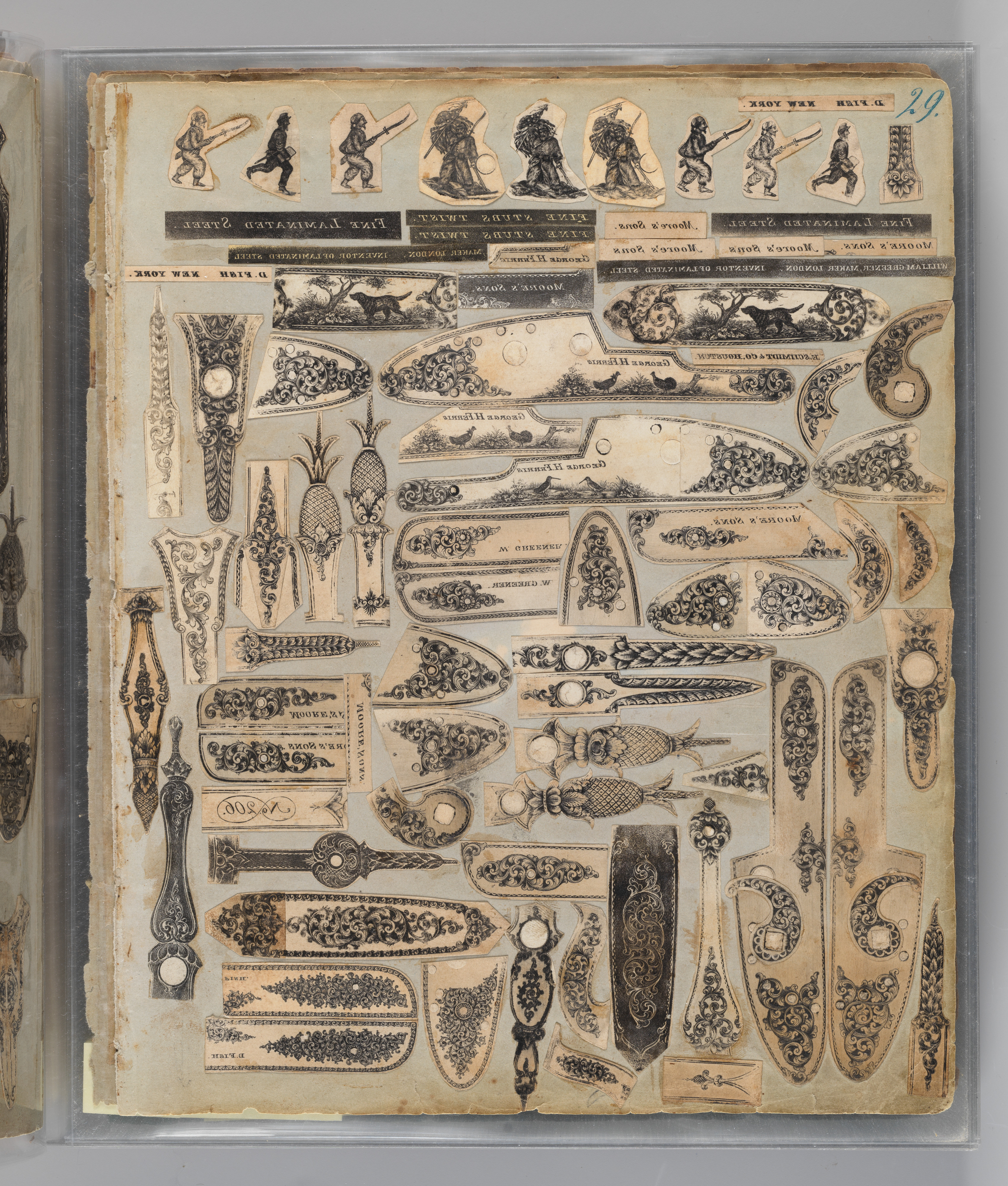Workbook Recording the Engraved Firearms Ornament of Louis D. Nimschke (1832–1904)
Louis Daniel Nimschke American
Not on view
This workbook was compiled by Louis Daniel Nimschke, one of the nineteenth century’s most talented and prolific firearms engravers, as a record of his own work and other artists’ designs that inspired him. It contains hundreds of inked impressions (called "pulls") taken directly from firearms he engraved, as well as design sketches, ornate postage stamps, documents, and inked impressions pulled from other objects Nimschke decorated, such as cufflinks, belt buckles, watches, and nameplates. Though the workbook preserves only a small fraction of his oeuvre, it spans almost his entire professional career, from around 1850 to around 1900, capturing the breadth and quality of his life’s work. It records the designs of some of his best-known firearms and, because Nimschke only occasionally signed his work, it provides valuable reference points for identifying unsigned pieces by his hand.
The workbook is well-organized. An index on the title page lists the contents of each numbered sheet and notes that "Impressions marked X not taken of L. D. N. Engravings." It contains pulls taken from a wide range of manufacturers, including Colt, Winchester, Smith & Wesson, Remington, Marlin, New Haven Arms Co., Marston, Reid, Moore, Whitney, Spencer, Freund, D. Fish, A. G. Genez, and dozens of others. Charming details abound in the album, from animal scenes and portraits of eminent individuals, to patriotic motifs, fanciful beasts, coats of arms, and views of armed skirmishes, usually framed in fluid, foliate scrollwork.
Nimschke’s firearms engraving style generally employed the use of neat, broadly-formed foliate scrollwork with rounded terminals accented with curved or straight hashmarks, against a punch-dot background on more expensive commissions, often surrounding blank panels and ribbands. Sometimes his designs incorporate animal figures, portrait heads, and sophisticated panel scenes.
The origins of this may be traced to Nimschke’s training at the Industrial School in Zella, Thuringia, Germany, where he studied under the master, Ernst Moritz. There he also trained under Gustav Ernst, a preeminent instructor responsible for the development of a number of Germany’s most distinguished industrial artists who, like Nimschke, would go on to settle in the U.S. in the late 1840s–50s and create what later became known as the "American" style of firearms engraving. The famous firearms engraver Gustave Young (1827–1895), for example, was also a pupil of Ernst. Nimschke’s personal copy of Ernst’s influential 1850 pattern book, Musterblätter enthaltend die anwendbarsten Jagdstücke u. Arabesken für Büchsenschäfter, Graveure etc., which perhaps more than any other printed source informed the engraving styles of these northern European immigrants, is also preserved in the collection of the Arms and Armor Department (acc. no. 2002.233.1a–j).
As the production of firearms became increasingly industrialized in the United States in the 1850s, customers seeking to personalize their machine-made guns turned to independent engravers like Nimschke to add original embellishment. Nimschke was preeminent among this new class of artisan, earning fame as a firearms engraver before major American arms manufacturers like Winchester and Colt began to offer organized, cost-effective factory embellishment options for their customers. He immigrated to the United States in 1853 and spent almost his entire adult life working in New York City.
In conjunction with Nimschke’s engraving tools, also preserved in The Met’s collection (acc. no. 2018.856.20a–jjj), the workbook offers an invaluable and unique window into the creative and technical processes of one of the most talented engravers of the nineteenth century.
Due to rights restrictions, this image cannot be enlarged, viewed at full screen, or downloaded.
This artwork is meant to be viewed from right to left. Scroll left to view more.





